Select Year
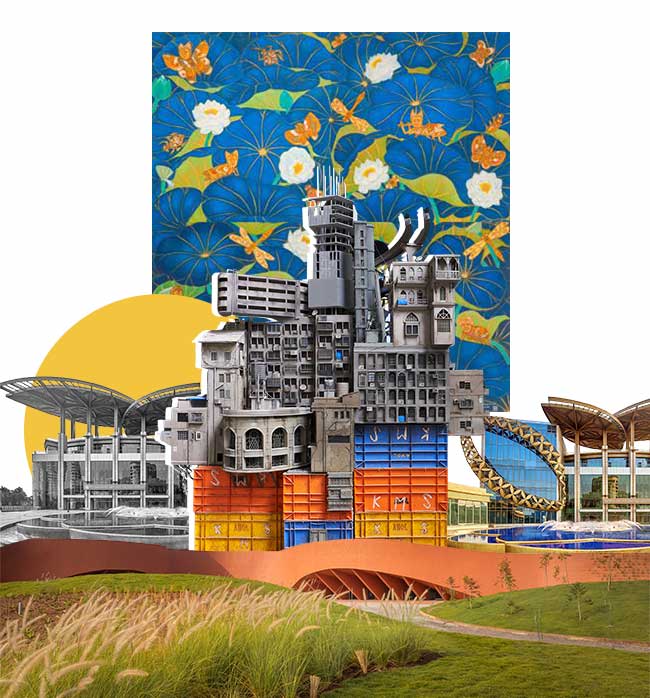
Indian Art’s Long March
2023 was a quantum leap in the growth of contemporary Indian art, with record breaking sales, as well as monumental developments aimed at increasing its reach. Amrita Sher-Gil’s The Story Tellers (1937) became the highest grossing artwork by an Indian, selling for an unheard of amount of INR 62 crores. This was close on the heels of SH Raza’s Gestation (1989) breaking the record at INR 51 crores. Things seem to be looking up for Indian contemporary art.
But what is the reason behind such rapid developments? Why has contemporary Indian art taken so long to reach this pedestal? And what does the future hold for its further growth? We take a plunge into the curious ecosystem of contemporary Indian art and its growth.
The new look
Within popular imagination, only one name in contemporary art was heard all over India: M.F. Hussain.Thanks to his dalliance with Indian films, as well as his prolific brilliance that courted controversy, Hussain was synonymous with modern art. Added to this was the fact that in the early ‘90s, markets were flooded with prints and forgeries of Hussain’s work, the appeal of which has never really gone away. Even today, it isn’t unusual to see the odd Hussain print in someone’s home.
Meanwhile, currents were in sway that would ensure that such a monopoly on contemporary Indian art would not be maintained. Art galleries found a new lease of life with newer audiences and foreign patrons helping fund and making newer artists more visible. The opening up of NGMAs outside of New Delhi and Mumbai, as well as a coterie of private art galleries setting up shop in the capital, created more awareness regarding contemporary art and gave artists more room to experiment and host their work.
Initially starting off as passion projects from art enthusiasts who had the means to source and display artworks, art galleries have considerably developed their expertise and reach in the past two decades. Legendary art galleries, such as Dhoomimal and Chemould Prescott Road, have gone from strength to strength since their opening decades ago thanks to the prestige of their names. Meanwhile, newer art galleries, such as KNMA in Delhi and Jhaveri Contemporary in Mumbai, have changed the game with their outreach programmes, which have inspired older spaces into incorporating similar initiatives into their structures.
This panoply of art galleries across the country, supplemented by art festivals such as the India Art Fair (which sold out this year on its first day), Kala Ghoda Arts Festival, Serendipity Arts Festival among several others, has been a boon for young artists in India. With more avenues to exhibit their work, emerging and established artists have found new audiences and more appreciation for their art.
The newer art galleries are also unafraid of taking a punt on experimental works that sometimes might incorporate extra space or performance. This not just points to the art industry’s comparative stability or popularity, but also a conceptual commitment among Indian art galleries that speaks to their conviction in promoting new Indian art.
A healthy Indian art scene for the past decade has convinced bigger players to enter the Indian art market, which is behind the recent overdrive. Last year, the long awaited Nita Mukesh Ambani Cultural Centre opened in Mumbai as a space decimated solely to the arts. With spaces for public art, as well as a four storey visual art exhibition space, NMACC has already started making strides in promoting contemporary Indian artists, alongside introducing different art styles to the general populace.
Bangalore, meanwhile, has recently welcomed Hampi Art Labs into its environs. Located closer to the historic capital it derives its name from, it is a 9 acre space dedicated solely to contemporary art. Not to be left behind, Delhi is adding to its already vast selection of art galleries with a behemoth in The Brij, a 7.6 acre site for contemporary and traditional art.
An undervalued proposition
However, it is not just the monumental success of KNMA and DAG that has prompted giants like Reliance, JSW, and Hero Enterprise to enter the art space and invest heavily into it. It is a response to realising the deeply undervalued Indian contemporary art space and the possibility of acquiring appreciating assets that are financially risk-free as well.
The event where Sher Gil’s The Storytellers broke all records was part of an epoch-making night that saw other personal records being broken as well. Organised by India’s largest auction house, Saffronart, Evening Sale: Modern Art featured 70 other artworks by prominent artists. A. Ramachandran’s Autobiography of an Insect in the Lotus Pond sold for over INR 4 crores, which was almost four times its estimated price. The Storytellers itself was valued at close to 38 crores, and it easily outstripped its estimate. This points to Indian contemporary art and artists steadily gaining currency across the world.
Saffronart’s event garnered over 140 crores in all, which is a monumental sum. While it might not look like much compared to the prices that the Picassos or Monets of the world end up getting, Indian art is slowly reaching there. It certainly has potential, which is why Christie’s set up shop in India all the way back in 1995, having since then sold several record breaking artworks.
There are a few reasons behind contemporary Indian art’s undervaluation. The first among these has to be The Antiquities and Art Treasures Act, which created the ‘Navratnas’ of Indian art. The lack of early foreign interest in Indian art is to do with the paucity of works that were available to foreign galleries. The few artworks of legendary Indian artists that were in the possession of foreign art galleries or collectors received some attention, but as merely examples of ‘South Asian art’, and as such, divorced from a rich tradition that would have seen it as part of something larger.
The evaluation of an artwork is dependent on several factors, only one part of which is the prestige of the artist. Amrita Sher Gil’s art, in addition to being historically significant, is also a rather rare commodity, with only a few in private hands. Another factor behind an artwork’s estimate is the prolificacy of the artist. While Picasso is revered as an artist, he was immensely prolific. So certain artworks belonging to certain periods of his life are worth less than the rest, due to their vast availability. The same can be said of M.F. Hussain, who was way more prolific than the Spanish maestro. In short, the more exclusive the artwork, the more expensive it tends to be.
The value of an artwork is also heavily dependent on the artistic tradition that it belongs to. The increase in awareness of the rich history of Indian art and how contemporary Indian art has borrowed elements and techniques from traditional as well as Western art forms to tell its own story has certainly helped in establishing a demand for contemporary Indian art.
Needless to say, appraising an artwork is quite a skill. Alongside galleries having acquisition specialists, auction houses, such as Christie’s, Saffronart, and AstaGuru among others, are responsible for evaluating and presenting artworks to prospective buyers. A formerly enigmatic arena, art auctions have seen a change in terms of first-time buyers.
The exclusivity of art has moved from a gatekeeping kind, to an exclusivity owing to skill. Simply old artworks are not the only valuable ones, and owning an artwork does not always have to cost a fortune. Thanks to initiatives like India Art Fair’s Young Collector’s Programme, millennials can get started on their art acquisition journeys with small steps. For there is a change in the way the ownership of an artwork is being seen as well. While artistic merit and uniqueness are certainly huge aspects of it, art as a financial asset is also being seen as a suitable proposition for the younger populace.
It is an exciting period for Indian art, as it finally comes into its own, thanks to a thriving domestic demand prompted by both rich conglomerates and millennials. It is only a matter of time that contemporary Indian art starts competing with its Western counterparts.

Listen to This Book
Our childhoods were full of story recitations and recorded narratives, which tended to grow less frequent once we grew up and started reading books. But thanks to recent developments and trends, the path has reversed itself, with adults increasingly tuning into audiobooks as their primary way of consuming narratives. And as podcasts get more and more saturated by the day, people seem to be losing interest in the genre. This while audiobooks continue to drive the growth of audio platforms. From the looks of it, this is a trend that will continue to grow.
Paper is past
We have come a long way from the odd Stephen Fry-narrated Harry Potter audiobook being heard by most due to the high-profile nature of the narrator and the book. Audio-based narratives are growing for a multitude of reasons, primary among them being those of reach and expense. Physical books, for all the romanticism attached to them, are bulky objects, and can be difficult to carry.
Another reason is the ease of production as well as distribution. Ebooks and audiobooks need to be produced just once, and copies of the same can easily be created at the click of a button. Physical books are more expensive to produce and employ plenty of resources. Which means that if one of these fine-tuned aspects go awry, it could result in significant wastage. Added to that, distribution of physical books depends on several vendors in the process, which can be time consuming, as well as fraught with its own specific challenges. Audiobooks require to simply be listed on one website, and you’re good to go.
“A first print run needs to be close to being sold out before we embark on a second print run, which is crucial to any book or author being termed a bestseller,” says Rudra Sharma, Senior Commissioning Editor at Rupa Publications. “With audiobooks, there is next to zero risk when it comes to sales. And not just that. A fairly large book, say from a self-help author, can be split into two or more audiobooks. That is incredibly beneficial for publishing houses, as well as the authors.”
Times are a-changin’
In 1997, Audible was the first major platform that got the ball rolling for audiobooks, and even after Amazon acquired it in 2008, there was a small period before it became a major player as a content-generating platform. A part of this gradual development was the manner in which audiobooks were seen.
“I’d never been into audiobooks because it was often associated with children’s books. I mean, I listened to the odd Roald Dahl or Harry Potter, but never seriously.” Says Ruchika Sareen, a marketing manager and a new fan of audiobooks. “But things changed once podcasts became mainstream. I think from that point on, it was just a slight jump to audiobooks. Now I listen to more audiobooks than I read, and I’d never thought that was possible.”
Audible launched its services in Indian languages in 2018, and it has been thriving since then, witnessing an astounding 39% increase in its paid subscriber base in the last year alone. What’s more is that this rise is also reflected in the increase in listening hours, which shows that this isn’t just a fad which people subscribed to. It is an ongoing engagement.
Homegrown heroes
Hot on the heels of Audible are our own audio-based services and platforms. Kuku FM and Pocket FM are among the biggest players to have emerged in the segment and are innovating beyond simple audiobooks. They have also created the episodic format within audiobooks, which is a lot more comfortable for non-readers to get into, before they engage with larger narratives.
Several of these episodic series are Wattpad creations, which means that these books were never in physical circulation to begin with. Pocket FM has created an entire engine that churns out romance and adventure Wattpad novels from China, localised to suit an Indian as well as an American context. This has never been seen before when it comes to translations of physical books. And it is working, as series such as My Secret Husband and Insta Millionaire are among the most popular on the platform.
Kuku FM, meanwhile, has struck an exclusive deal with Rupa Publications to create audiobooks for their front list. They also have a new partnership with Storytel, one of the biggest audio creation platforms in the world, to expand both their footprints in India and abroad. This has also allowed Kuku FM to access Storytel’s humongous library of international bestsellers, for which regional translations can be produced.
Spotify steps in
While we are talking audio, it wouldn’t be complete without including the biggest player in the conversation. Spotify decided to venture into the audiobook space towards the end of last year. This rang alarm bells for several authors and publishing platforms, who were afraid that the giant would eat into their market share and subscribers. What happened instead was that the audiobook space grew by nearly 30%, with several new subscribers taking the plunge with Spotify. This has been a boon for other publishers as well, and shows that the audiobook space is not simply a niche segment, and is set to grow even further once it enters India.
“India has been the fastest growing market for audiobooks after the US and China. There has been an appetite for audiobooks even in our paid audiobooks segment. Since the pandemic, there has been a growth in people trying the service and continuing with service along with a higher level of exploration while the retention levels have stayed similar post lockdown, thereby accelerating the adoption of the category, bringing forward growth,” says Shailesh Sawlani, General Manager of Audible India.
Tech for all
A similar process of a single production copy takes place with ebooks, which have increased in availability overall, but not compared to the popularity of audiobooks. Why is that? The answer is simple – ebooks can be a strain on the eyes. With the increase in digital literacy and ease of using smart devices, senior citizens as well as those who struggle with reading can enjoy stories at their own pace. With the technological changes that allow one to slow the pace of narration or change the accent of the narrator, audiobooks are the rage. Unlike ebooks, which require constant attention, an audiobook can be a casual undertaking that allows one to multitask as well.
Another limiting factor when it comes to ebooks is the very nature of language and dialects. Audiobooks, due to their purely oral nature, can cover a far more wide variety of dialects and speaking systems than ebooks. For example, in the past few years, there has been a boost in tribal audio narratives in their native dialects. Attempting to deliver the same narrative, which was oral to begin with, in a textual format takes away from the context and flavour of the story. Creating oral narratives through audiobooks also preserves tradition much in the same way in which it existed, and keeps it alive for future generations as well.
AI killed the audio star?
But it is not simply dialect and language that are the major factors behind the rise of the audiobook. Thanks to rapid technological progress, AI has entered the game and revolutionised the world of audiobooks. While earlier, narrators were hired and had to spend quite some time in the recording booth, concentrating on their cadence and correctly enunciating, AI has done away with the audio star as well. While we still will continue getting celebrity voices narrating some of our favourite books, AI marks a huge change for indie writers and publishers. For bigger publishing houses, it is easier to bring a celebrity for an audiobook, or even a competent narrator, the costs for bringing a similar voice for small publishers is quite an ask, even if it is a one-time cost.
AI audiobook production, brought in by Apple Books and being adopted throughout the publishing landscape, allows smaller publishers to create audiobooks and increase the digital footprint of authors who would otherwise be overlooked.
The amount of variety in genres and format that audiobooks bring with it is astounding and has captured public imagination. It is a new way of consuming narratives and books. “I’ve always been more of a physical book reader. If I don’t turn a page, it doesn’t really feel like reading.” Says Rudra. “Which is why I haven’t taken to ebooks. Audiobooks, however, I am slowly getting converted towards. It helps that my commute to the office is rather long.”
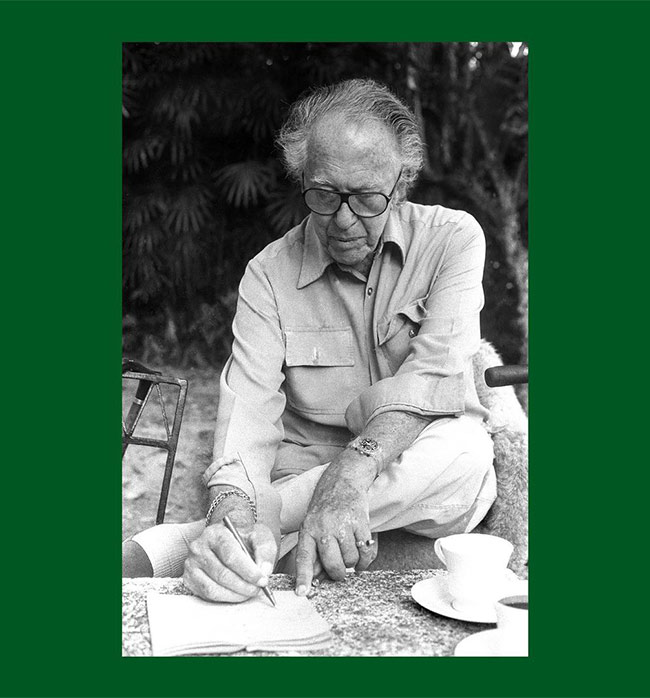
The Design of a Country
A city like Mumbai, filled with opportunities as the cliché goes, also does one other thing – it narrows your focus down to a singular path, often said to be the shortest, fastest, and potentially the only one. On the other hand, having the chance to apprentice in a foreign country, just by virtue of being totally new, shows multiple alternate realities. To be able to do it while being surrounded by people you have read about in Bible-like collections of genius minds, was enough to ensure that these memories would fundamentally alter my approach to design and creating memorable spatial experiences for others.
While studying in a creative field, educational training often relies on studying past greats to study their life’s work for inspiration, guidance, path-breaking innovations, and the works. Well, I hit the jackpot when I was given the opportunity to work in the office of a maestro — the legendary architect Geoffery Bawa in Sri Lanka.
Where it started
My first memory is of walking down a dead-end road onto a cobblestone-edged house. Brass wheels on a gigantic garage door made of a wooden trellis and a tiny door led to the annexe, which was being used as an office since Mr Bawa’s health had declined. Behind them, a vintage Rolls Royce, artworks belonging to museums, and architectural drawings will soon be converted into scanned records for books sold all over the world! The doors to Sri Lankan architectural royalty, along with a wealth of architectural learnings, were there for me to read, absorb, and interpret. There was this surprising blend of uber luxury, natural landscape, orchestrated light, and ventilation with local skills and humble materials rooted in cultural authenticity, all held together with creative ingenuity.
His architectural legacy was being compiled and recorded by Prof. David Robson, architects Channa Daswatte and Anjalendran at the time. And each of them had this unique perspective on Mr. Bawa and his work. I walked into the centre of this whirlwind of research being done, spending late nights pouring over hundreds of rolls of hand-drawn drawings on tracing paper. But if you have read about his work, you will know that no drawing will ever capture the true essence of the built spaces he designed. They were experiences to be had, chartered paths guiding you through spaces filled with light and air, the way he orchestrated them to be. Climatic response and environmental strategies for sustainability were an inherent part of the process from start to finish of a project. A lot of these projects are now open to the public, some as hotels, and some as art galleries and restaurants, which is a great way to explore and begin to see his enchanting creations.
Building a legacy
All his buildings were interwoven with artisanal designs of other creative genres: this mixture of sculptures, artworks, textures, and colours was his signature. I interacted with artists like Laki Senanayake and saw works of Barbra Sansoi and photographer Dominic Sansoi on walls, framing breathtaking views of natural surroundings. As you walk through these spaces, you will see there are no distinct boundaries between where architecture ends and art begins, and where light ceases and shadows take hold of your imagination. The origins of these spaces are not from pristine renders and precision illustrations. Still, time spent on the site observing and teaching that which the human experience is designed to emote.
And I felt this had a profound impact on the country’s environment in general. Artists and their crafts flourished as people began to appreciate and understand how indispensable art was from lived-in spaces: good architecture and visual aesthetics held value as much as commerce. Even tiny houses were human-centric and beautifully constructed. I was starstruck walking through the Sri Lankan Parliament; it’s clear how a colossal campus was designed to sit gently on site, with proportions controlled to make the government more approachable and grounded.
Design with a cause
A year later, Architect Anjalendran very kindly gave me an opportunity to learn more in his office. And I got to see a whole other side of the epic design fraternity there. Working out of his garage next to the tuk-tuk he owned because a car, he felt, was not an appropriate vehicle and probably too ostentatious for a single person. His project, the SOS youth village in Piliyandala, is as ingenious a concept as the environment he has created for it. This NGO built a village designed around the homes crafted. There was an orphanage,, a place for small families, and even a place for widows of war rehabilitated as mothers. Schools and playgrounds were all part of the complex with world-class designed amenities and a humble budget. Design in all its forms has improved the quality of life of the community at large , and that is probably the most significant success of Geoffery Bawa and his contemporaries.
After 15 years, I recently returned to Sri Lanka and revisited some of these spaces. A lot has changed, and some things have not. Density made the skyscrapers shoot up around the cobblestones and the temple trees. Inked drawings, batik prints, and bright hand-woven sarongs were still around, just the same as if time had stood still in some corners of the island. Kithul treacle (a syrup also made of sap collected from the flower of the fishtail palm or jaggery palm) and hoppers, passion fruit, and Ceylon cinnamon — unique flavours still intrinsic to this gorgeous country remain. While elephant sanctuaries, migrating whales, and distinctive hotels (heritage and contemporary alike) continue to attract tourists post the massive political instability and help rebuild the economy. An old friend, a grandma, pointed out how talent was leaving the country, and I really hope that the conversation did not apply to the design fraternity because the power creativity holds is more than enough to turn things around.
(The writer is the co-founder of IKKO Art Gallery in Mumbai)

Indigenous Genius
With a plethora of artists from across the world participating and engaging with the panoply of works at the Venice Biennale, there have been some amazingly striking artworks and productions. And among them are artists and collectives that are finally getting their plaudits.
This week, the famed Golden Lion for national participation, as well as for best participant, was taken by Oceania, showcasing the artistic diversity and depth of concept from the region, which has long been ignored when it comes to international events such as the Biennale itself.
Australian indigenous artist Archie Moore won the award for national participation, the first from the country to have won the prestigious prize. His work, named kith and kin, is an exploration of the history of the indigenous peoples of Australia.
Consisting of a family web spread over a large room, filled with names going all the way back to sixty-five thousand years ago, when the continent was populated by the first peoples, Moore’s work sought to form an archive of sorts of the indigenous experience. Going back further into the past, there are names that have been slightly smudged, and those removed altogether to signify settler violence, as well as the erasure of indigenous experience in the early 20th century.
The Golden Lion for best participant, meanwhile, has gone to New Zealand’s Mataaho Collective, a group of four female Maori artists. Their presentation, titled Takapau, was inspired by the finely woven Maori mats of the same name. Made from materials used in construction, the gigantic room-sized weave is a nod to the spirit of collaboration, as well as reflecting the culture and class background of the artists, all of whom come from working class families.
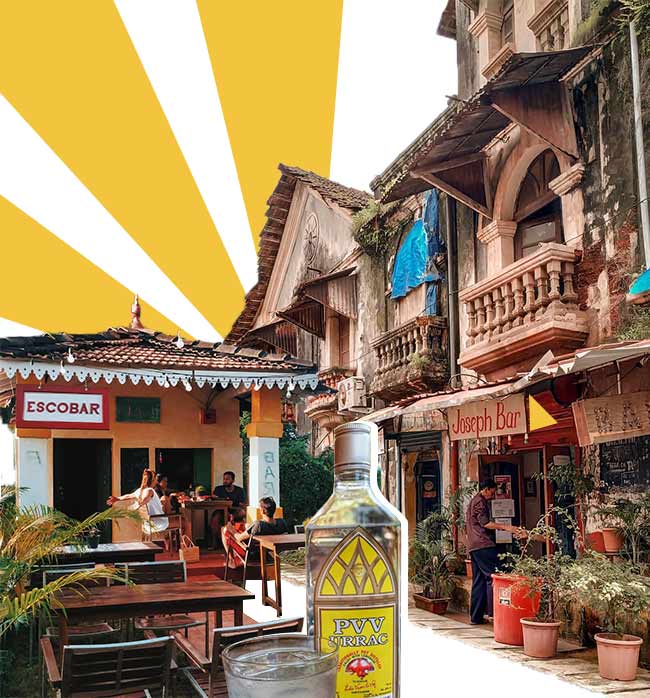
Traversing Through the Taverns
An intoxicating afternoon breeze brings with it a whiff of the salty summer sea, as locals and visitors alike prepare for a cherished ritual: the siesta. Some nestle into the welcoming folds of their beds, while others seek solace beneath the gentle sway of coconut trees, and a few others, in the boats they lay the anchors of after catching a fresh round bangude (mackerel) or tarli (sardines). Tying them together is an afternoon cap – some freshly fermented urrak with a dash of lemon and curry leaves, or a pint of Kings or Kingfisher beer. This is what the susegad way of life looks like. And at the heart of this coastal idyll, lies Goa’s tavern culture.
Interrogate a local about their whereabouts before the siesta or dinner, and you might get a cryptic response: “to the parliament”. This colloquialism, steeped in local lore, refers to the roadside bars and taverns that have long been the social centre of Goan life.
A loyal cadre
Once a place for respite for weary labourers and porters, each tavern served a specific clientele. Those situated by the village market were frequented by porters, while the ones sprinkled along the coastline by fishermen. Even today, they remain open till dawn in certain pockets of Goa, tending to those toiling away during nocturnal hours. These unassuming taverns have managed to retain the simplicity of the days gone by, their heritage intricately interwoven with the essence of Goan culture.
However, today, the once clear boundaries between taverns and bars are becoming increasingly blurred due to evolving consumer preferences. A perfect example of this is Pablos. Recently listed among the top thirty bars in India, this tiny tavern has become one of the favourite haunts for locals and tourists alike. From its humble origins as the nondescript Vijay bar, frequented by a loyal cadre of friends, it has grown into a celebrated hotspot.
“Earlier taverns served a different demographic. They were usually frequented by older people, mostly men and a few local youngsters. So we had to make some changes to create a modern version of a Goan tavern that caters to a wider clientele. Now we have people from different cultures and backgrounds as well as age groups coming in to get a taste of the local vibe while also being able to enjoy modern additions,” says Terence D’Mello, the co-owner of Pablos.
Reviving an old culture
Tavern culture was introduced by the Portuguese, which is probably why it’s unique to Goa. These places served as vital meeting points for diverse communities and provided people a welcome respite, offering refreshment and camaraderie amidst the daily grind. It was where Goans came together to share both their joys and sorrows and discuss everything under the sun – from the daily news to music and football matches.
While the transformation of Goan taverns into hipper bars has been a fascinating one, some locals are determined to preserve Goa’s tavern culture in its original form. Organisations such as Soul Travelling, known for their immersive heritage walks and excursions, have stepped in to preserve and celebrate this distinctive tavern culture. Through their curated tavern trail experiences, they give tourists a fascinating glimpse into the cultural significance of local taverns.
“We wanted to highlight the traditional tavern culture in Goa. Many tourists visit Goa thinking they can only buy alcohol from pubs or wine shops. But the real drinking experience in Goa is all about the taverns. These small, cosy places are where people gather to chat and unwind. Tavern culture is huge in Europe, but not as common in India. Go to any city in the country asking for tavern recommendations, they’ll point you to a bar or a pub. But ask a Goan and they’ll know exactly where to send you,” says Pratik Joshi, Senior Curations Executive at Soul Travelling.
“Initially you didn’t even need a special bar licence to open a tavern because the idea of a tavern revolved around locally produced alcohol – feni and urrak. Over the years, taverns have also started serving international liquor, but that was not part of the original culture,” adds Joshi.
Beyond the ale
As people’s drink preferences have changed, so has the food served alongside. In the past, taverns mainly offered simple snacks like kharo bangdo (dry, salted mackerel) or rawa fry, choris (Goan sausages), fish or beef cutlets, and cashews. However, nowadays, the food offerings have become much more elaborate.
“The food in taverns has always been very basic, serving mostly snacks and munchies. You have places like Joseph’s Bar or Cifa Bar in Panjim where this tradition hasn’t changed much. Even the Old Tavern near Majorda in South Goa has been sticking to the old ways. But now, people want more than just drinks. Which is why some places like 1964 Bar or K Bar have encroached on the boundaries of taverns to offer proper food alongside their drinks,” says Joshi.
The effort to retain the heritage of the original tavern culture is being cheered by locals who do not want certain traditions to get diluted and become a relic of the past. “People should be able to differentiate between a Goan tavern and a bar found elsewhere. Only through an authentic experience can this distinction be truly appreciated,” remarks Savio, who runs the Jackfruit Tree Tavern and Cafe in Assagao.
Tourists, on the other hand, are finding value in either side of the coin. “I had a very different idea of Goa earlier. For me, it was just a good party place. But my last visit changed that perspective after I travelled across the state with some locals. They took me on village excursions and some age-old taverns. I almost felt like a Goan and even picked up some local terms through the interactions. At the same time, I absolutely loved Pablos and Cajy’s where I was able to meet some really interesting people from a similar background as me,” says Shriya Shah, an operations executive at a Bangalore-based software company, who has fallen even more in love with Goan culture and has sworn to visit the place once every year.
Hanging on
Inside the tavern Meenali Bar on Chorao Island, the largest of 17 islands that constitute Goa, third-generation owner Prakash Matodkar holds up a small glass to exhibit, “Goa’s pride” — a masala-flavoured feni and the summer staple, urrak. “It has to bite,” he says, as he twirls the glass, first to smell, then to taste. Matodkar points to other things typically Goan in the tavern, which was started by his grandfather over seven decades ago — the glasses hung next to the door, the benches, the wooden seats, and a liquor cabinet stocked with a potent urrak and flavoured fenis.
“The locals in the area still quench their thirst here. But I’m old now. I’m 56. I want to shut shop when I hit 60. My children are all educated and don’t want to continue the family legacy. In fact, I don’t want them to. I’ve worked every day of my life. I haven’t even taken my wife on a honeymoon since we got married 24 years ago,” he says.
The history of Chorao island is quite interesting and goes back to the third century when Indo-Aryans migrants came to settle there. According to local tales, there were only 10 families that initially settled here dominated by the Shenvi Brahmins. Legend says, Chodan was its original Konkani name and the island was created by the jewels thrown away by Yashoda, Lord Krishna’s mother.
Matodkar tells us that while his tavern was used to respectfully discuss local issues and life in general by the men in the area decades ago, it has now become a hangout spot for a new generation of tipplers who are rowdy and disrespectful.
“I don’t enjoy catering to the new generation. They don’t know how to hold their liquor,” he tells us.
Clearly, an intriguing tension is brewing between the traditional and modern in Goa’s tavern culture. Perhaps, the struggle may result in a fascinating juxtaposition of these humble establishments with distinct personas, reflective of the evolving narrative of Goan social life at large.

Power (Swim)Suit
When 42-year-old Saumya Sharma, a dentist who now lives in London, saw a woman on the beach in Mumbai’s Juhu, idly sitting in a swimsuit in the 90s, she was surprised to say the least. She grew up with summers that were spent at the community swimming pool and evenings with walks on the beach. But she had never, not once, seen a woman wearing a bikini. For Saumya, like many of us, swimwear meant wearing a pair of tights and a Speedo on top of it.
“I remember we went to Water Kingdom in the 90s and I saw my mother in a pair of tights and a loose t-shirt. She wore jeans when we travelled, but I had never seen her dressed like this,” she tells us.
The swimsuit, Sharmila Tagore killing it aside, has posed a moral dilemma for the Indian woman for decades now. Clearly, in India, modesty is defined by one’s gender, whether a woman wants to take a dip in the pool or fully clad when in other public spaces. From the Raja Ravi Varma paintings that showed sari-clad women in rivers to Pamela Anderson in Baywatch, the journey has been a long and fascinating one. In fact, it wasn’t till the 2000s that you’d see Indian women in swimsuits at all, especially in the country. The hotel pools, beaches, and resorts all saw (at most) women in pairs of shorts usually with a sarong as an accompaniment.
A cultural shift
The movement seems to have gained momentum with the advent of liberation movements around the world. As India stepped into the larger movement in the 1970s, as did the conversation around demand for the choice of wearing what one pleases. It took us close to 30 years, however, to see the change in action. And you can see this reflected on screen too. Mallika Sherawat and Bipasha Basu’s “bold” choices from the early aughts seem to have turned into just something Alia Bhatt and Deepika Padukone do in the movies now. Is it because of the shift in the movement or swimsuits being more widely accepted by the common folk? Maybe it’s a combination of both.
Preeta Sukhtankar, the founder of lifestyle brand The Label Life, has had an interesting relationship with the swimsuit. “It only started in my thirties that I may have worn a two piece, but prior to that even, as a kid I don't remember ever wearing one. It was always considered to be a big thing, right? I don’t even remember being in college like I am now in my forties, walking around in a swimsuit without wearing either a sarong or a cover up. In the early 2000s, wearing a swimsuit meant you were bold. That is not the case now. I see the stark difference in my daughter today.”
More than skin deep
Today, the swimsuit is being embraced by the average Indian. While some still prefer the shorts-and-tee combo, most others invest in swimsuits. While there is a wide variety of swimwear available in India now, it is not far-fetched to wonder if the variety is also size inclusive.
“It was 2017,” 35-year-old Leena Sahni from New Delhi tells us, “when I was on my bachelorette trip in Sri Lanka. I saw an Indian woman on the beach wearing a bikini and I remember thinking that it was the first time I had seen a plus size woman in one.” Leena isn’t alone in her observation. While more and more Indian women turned to resort and swimwear at the turn of the century, the jury is still out on the inclusion of other sizes.
In the ever-evolving landscape of fashion, only a few garments embody societal standards and cultural shifts as poignantly as swimwear. Once the bastion of the thin and the toned, the swimsuit has undergone a remarkable metamorphosis, mirroring broader conversations around body positivity and inclusivity.
Today, several brands have all made it their brand on a mission to rewrite the narrative of swimwear fashion. But, while there are some winners like Tailor & Circus, Marks and Spencer, and H&M, many others just aren’t cutting it. Mumbai-based model and chef Alefiya Jane tells us, “These swimsuits aren’t made with plus-size women in mind because they don’t provide the three main things we need from them — support, coverage, and fit. They are supposed to hold our big bodies up and fit seamlessly. But often, they are either too big or too small. The upper body wear is not always proportional to the bottoms. And if they are, the arm hole or the thigh hole doesn’t fit with the rest of the garment.”
Most brands making resort wear in India are still making them for a Western body standard. If you need more sizes, you have to spend between INR2,500-8,000 for most starting ranges. An average swimsuit in the non-plus size section starts at INR350. So while we do have more options now, they come at a price.
There is, however, one more problem. Thirty-two-year-old Debiparna, who is a writer based in Kolkata, tells us, “There aren’t many options in terms of styles when it comes to plus-sized swimwear. It’s always the same. And there aren’t enough options for the kinds of prints you can choose either. It's like a monoculture of plus-sized style, which is not the case for non-plus-sized clothing.”
Jane agrees when she says, “They expect me to spend money on an ill-fitted piece of clothing that does not even match my aesthetic. Simply put…most options are ugly and flimsy.”
The journey towards body positivity has been an arduous one, which is why it’s important to look beyond what swimwear means on a surface level. Debiparna adds, “I am a size 18, that’s an XL for most brands. But sometimes, it can go up to 5XL. I am the same size, but the brands have different parameters. I used to be a size 22. So the 5XL stings, even though I know it isn’t about me or that there is nothing wrong with being a bigger woman.” This is also true for many brands that advertise having size-inclusive clothing, but only go up to a UK12. That’s a Large, and not very size-inclusive at all.
“I started wearing swimsuits in my twenties and thirties, I think. And I almost never bought them in India. Then later, of course, at The Label Life we made sure that we made swimsuits that were accessible for all. I wear a size 12 or 14, so I have always wanted accessibility. I do wish it was better in India, though,” Preeta tells us.
When the Canadian lingerie brand la Vie en Rose launched in India last year, François Roberge, the president and CEO of the brand, had told Mint, “I think India would be one of the biggest retail markets in 10 years,” And he is right. The market growth between 2023-2027 is estimated to be a whopping USD 28.94 billion. More than half of that number consists of female consumers. On top of that, the swimwear market in India is projected to grow by 3.50% (2024-2028), resulting in a market volume of USD 2.49 billion by 2028. So, it is safe to say that there is much to gain from having more inclusive sizes. So why do we still not have them? Is it because of the stigma? Or perhaps the assumption that plus-size folks won’t be looking to wear swimsuits? Or something else entirely?
All this and there is also the idea that most men don’t have swimwear options at all. “I can either wear really big boxers to the pool or simply be okay with a Decathlon speedo, which is usually super tight and not made for someone my size,” says 27-year-old Karan, who requested to be quoted anonymously.
This is also true for swimwear not being handicap-friendly or even age-friendly. Preeta tells us, “I think there needs to be a lot of room for women with age. Women in their thirties and forties are the ones with a lot of spending power. So l hope that people sort of give us that privilege and create clothes for us. Our midriffs, our very worked-out bodies are not the same as those younger than us.”
Thankfully, an emerging subculture seems to be gaining ground. In recent years, there has been a significant shift in the swimwear industry towards inclusivity and body positivity, with homegrown brands leading the charge. These brands prioritise offering size-inclusive options. One such brand is Maarteeni, based in Noida, it stands out for its commitment to environmental consciousness. Using fabric made from 90% recycled plastic waste and 10% stretch material, this brand offers sizes up to 3XL.
Another example is Flirtatious, which combines sustainability with inclusivity, by adopting a ‘made-to-measure’ philosophy. The brand aims to revolutionise the swimwear industry by empowering women of all sizes to embrace their uniqueness, with each piece designed with contemporary trends in mind.
Saumya tells us, “I live in London but I get my swimsuits in India. They just suit me better and it is easier to get colours that work well for me. But I have to admit, the choices are limited.”
When you think about it, it’s not hard to answer the age-old question — Why does it matter? Leena sums it up perfectly when she says, “The reason seeing the first Indian plus size woman on the beach in Sri Lanka was pivotal for me was that the next day I bought my first bikini. The following day, I proudly wore it for the first time as a plus-size woman. And have never looked back since. All it took for my confidence to get built up to see just one person who looked like me look like that. Just imagine what would have happened had I seen many for years!” Saumya adds, “I just want to go to the beach or the pool and enjoy a day in the sun. It should not matter that I am Indian or fat. If I choose it for myself, I should have the option. That only seems fair, no?”
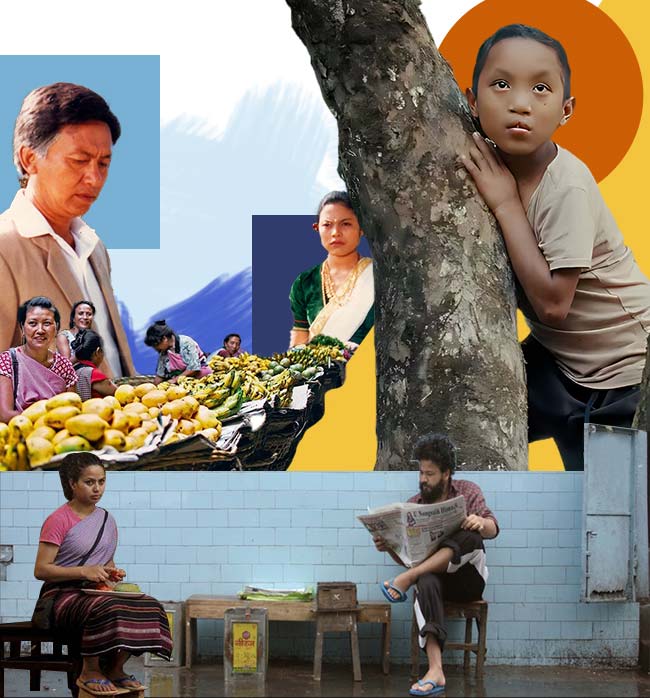
A Cinematic Sisterhood
In the past few years, Indian cinema has taken strides both in terms of commercial and critical acclaim. The birth of the ‘pan-Indian’ movie, featuring larger-than-life characters who appeal to audiences across the board, has swept the country. Added to that is the wealth of regional and independent films that are discovering audiences thanks to wide releases as well as online streaming platforms.
But at the same time, other nascent film industries have felt the pinch and are still committed to their struggle of telling great stories and promoting their heritage in a unique form. Two emerging film industries from two states in the northeast show the nature of their issues and the brilliance of their craft, which the rest of the world seems to be missing out on.
In the shadows
In northeast India, one vernacular film industry dominates over others in terms of sheer numbers: the Assamese film industry. Previously called Jollywood, it is among the oldest film industries in the country. Starting in 1935 with its first film Joymati, the Assamese film industry constantly grew in the early twentieth century.
The enshrining of Assamese as one of India’s official languages in the Constitution gave it governmental protection and funding, which allowed Assamese arts and films to continue being produced, reaching a new stage of increased production in the late 60s. This was in part because of stalwarts like Phani Sharma, Anil Choudhury, and the legendary Bhupen Hazarika.
Within these regions, where one language dominates a particular aspect of life, it tends to do so to the detriment of other dialects and languages around it. This has been the case with Bollywood, which has resulted in much smaller industries in local dialects and languages throughout the Hindi heartland. In most cases, the Hindi film industry seems to have subsumed movies with these dialects and languages.
However, that has not been the case with Jollywood. Thanks to the linguistic diversity of the northeast and the small space that these languages share, regional film industries such as those based in Manipur, Meghalaya, and Tripura blossomed in the 70s and 80s. Aided by technicians and artists who had plied their trade in Assamese cinema, these nascent film industries told pathbreaking stories from the beginning.
Speaking on the openness between the various film industries, National Award-winning film critic Utpal Borpujari explains, “There has never been any step-motherly treatment from Assamese cinema towards other smaller, regional film industries. Actors and crew have worked across state and linguistic lines. If anything, the spirit of collaboration has increased in recent years as the youth are a lot more open-minded.”
The jewel blooms
Starting in 1972, Matamgi Manipur was where Manipur cinema started. A Meitei language film, it was directed by Debkumar Bose and dealt with the diverging views of two generations. So from the first instance itself, one could see the cross-collaboration in various departments. Bose himself was Bengali and often directed Assamese films. The first Manipuri film by a Manipuri director was Sapam Nadia Chand’s Brojendragee Luhongba in 1973, in which he also starred and did the music.
In the five decades following the arrival of Manipuri cinema, it has gone from strength to strength. While the volume of releases has decreased slightly in the past few years, it remains — after Assamese cinema — the most prolific film industry in the northeast. During this time, Manipuri films have regularly won big at the National Film Awards, often outside their linguistic categories. Films from the industry have also found favour with international audiences, with Aribam Syam Sharma’s Ishanou (1991) being screened at Cannes’ Un Certain Regard section, and was recognised as a ‘World Classic’ at the 2023 Cannes Film Festival, the only Indian film to be recognised so.
Manipuri cinema has retained its penchant for meaningful stories, with films like Oneness by Priyakanta Laishram in 2023, which was hailed as Manipur’s first gay-themed film, and Romi Meitei’s Eikhoigi Yum in 2021, which won at the 69th National Film Awards and was an official selection for Jio MAMI 2022.
Borpujari elucidates on the nature of Manipuri films, “Thematically, Manipuri films are unique, and are often labours of love and passion projects. Although the commercial movies they make are heavily influenced by Bollywood.” The presence of out-and-out commercial films like Inspector Yohenba 1 and 2 (inspired by the Salman Khan-starrer Dabangg series) show that Manipuri cinema has the scope to experiment and successfully deliver different kinds of films.
Cloudy with a chance of films
In Meghalaya, things are slightly different. While the majority of Manipuri cinema makes films in the Meitei language, there’s no overarching language as such within Meghalaya, with Garo and Khasi being the two most spoken languages after Assamese in the state. The growth of Garo and Khasi films has been rather slow and laborious since the first Khasi film in 1981, Ka Synjuk Ri Ki Laiphew Syiem (The Alliance of 30 Kings). It has been only in the last fifteen years that Garo and Khasi cinema have picked up some momentum, which is down to two visionary auteurs, Pradip Kurbah for Khasi cinema, and Dominic Sangma for Garo cinema.
Kurbah, who learned the ropes in Bollywood, spent over ten years trying to get his 2014 National Award-winning science fiction film Ri: The Homeland of Uncertainty off the floor. Upon being asked about using a science fiction setting to explore state terrorism, Pradip Kurbah explained, “In Meghalaya, each filmmaker has their own style when it comes to making films. Due to the diversity of cultures as well as miscegenation, every filmmaker is unique in the way they approach the craft.”
Kurbah’s latest film, Iewduh (2019), was screened at the 2019 Busan Film Festival and received rave reviews on its portrayal of the linguistic and cultural diversity of Meghalaya and the issues associated with it.
Sangma has been single handedly responsible for bringing Garo cinema to the world. His first feature film, Ma.Ama (2018), won the Best Cinematography Award at the 22nd Shanghai Film Festival and his newest film, Rimdogittanga (Rapture), was screened at the 2023 Locarno Film Festival. An alumnus of the Satyajit Ray Film and Television Institute (SRFTI), Sangma takes a keen interest in every aspect of filmmaking, and often seeks to cast non-actors and locals in small roles.
Commenting on the community aspect of storytelling as well as the paucity of Garo films, he said, “When I set about to make Ma.Ama, I hit upon the realisation that there were no reference points when it came to Garo cinema. Sure, there were a couple of films that had been made in the 80s, but nothing major to serve as a waypoint for future storytellers and filmmakers. So whether I like it or not, I am the reference point and the pioneer here, which is why I have to look at the entirety of my filmmaking process a lot more seriously. Filmmaking in Garo Hills has to be a community effort. While funding can come from various sources, the heart of my films is rooted in the community and the cultural identity of Garo Hills.”
A Need for screens
While the northeast, not just Manipur and Meghalaya, has a treasure trove of stories and storytellers just waiting to spin their yarns, there is a chronic lack of funding when it comes to films. While early in the last decade, the OTT boom sought to source all kinds of films and became a haven for independent as well as regional filmmakers, this has changed since the pandemic.
“While earlier there was talk of having most digitally made films on OTT, regional films quickly fell out of favour. Now it has reached a point where it is difficult for even an Assamese film to secure a preferential OTT release, so what hope is there for the smaller ones? Directors need to be able to recoup their production costs at the very least, and OTT platforms are not able to offer that kind of money,” says Borpujari.
Kurbah recognises a bigger issue at hand, “The primary obstacle facing contemporary Khasi cinema, and regional cinema by extension, is the lack of cinema halls. There are only two cinema halls for Khasi films in all of Meghalaya. So while locals generally like Khasi movies irrespective of their demographic, encouraging them to come to theatres instead of sticking to OTTs and producing high quality films is crucial. The government’s initiative to establish 30 more cinema halls in the state looks to be a step in the right direction.”
These, alongside efforts from established directors as well as film critics, might just herald a new age for cinema in the northeast. As such, Kurbah and Sangma have co-founded the Kelvin CInema Festival. Recognising the latent talent in the storytelling ability of the northeast and the scarcity of film festivals and infrastructure there, the festival aims to nurture this spark. “Before joining SRFTI, I hadn’t watched any world cinema; I didn’t even know that such a cinema existed. I only watched Hindi films and Hollywood films. SRFTI opened the door to a different world… I was wasting my time on films that could have dulled my perception of life. I don’t want that to happen to young aspiring filmmakers from the region. With the Kelvin Cinema Festival, both Pradip Kurbah and I aim to bring good films from across India, introduce filmmakers from different regions and create a space to learn various aspects of filmmaking, festival strategy, distribution, etc.” Sangma explains.
So while Manipuri and Meghalayan films are earning plaudits the world over, we need to recognise and protect this unique art as well. And that starts with exploring and encouraging a different way of looking at cinema, as well as fostering a cinematic ethos that celebrates plurality and cross-cultural collaboration.

A Palace of Her Own
What is jewellery if not art that can be worn? This is especially true when it comes to Indian jewellery. A necklace or a pair of earrings can hold centuries of culture within their delicate crevices. Each style, gem, and cut tells a story of artisans, history, and people. And one extraordinary example of this is meenakari. Meenakari, also known as enamelling, is a traditional Indian art form that involves the decoration of metal surfaces, typically gold or silver, with colourful enamels.
Meenakari work often features vibrant colours, intricate designs, and sometimes incorporates motifs from nature, such as flowers, birds, and animals. Still practised in various regions of India, with centres of production in places like Jaipur, meenakari is an artform that lent itself to jewellery, blurring the line between the two.
So it is less surprising that in the bustling lanes of Jaipur, where tradition meets innovation, jewellery designer Sunita Shekhawat has carved a niche for herself with her eponymous brand. As she celebrates the 25th anniversary of her label, she adds another jewel to Jaipur’s crown with the inauguration of the Museum of Meenakari Heritage (MoMH) at the Shekhawat Haveli.
“MoMH tells the story of meenakari in India, tracing its history, genesis, and development through different epochs,” says Shekhawat, reflecting on the museum’s purpose. “It serves as an educational and cultural centre to preserve and celebrate the craft.”
A journey through time and technique
Shekhawat’s journey into the world of meenakari began with a deep-rooted passion for reviving traditional art forms and infusing them with a contemporary aesthetic. The museum, curated by renowned art historian Usha R Balakrishnan, is a testament to this vision, offering visitors a glimpse into the evolution of meenakari from its Persian origins to its flourishing in the palaces of Jaipur.
“This has been in the works for decades now. The goal was to present to the world that we still have artisans who can reproduce the same art with the same consistency, with the same material, and the same form as it was centuries ago. It’s preserving your craft and passing it onto the next generation,” Shekhawat tells us.
Inside the museum, every detail reflects a harmonious blend of tradition and modernity. From hand-painted frescoes depicting the region’s architecture to meticulously crafted reproductions of historical jewellery pieces, the museum offers an immersive experience that transcends time. But beyond that, it is also a reflection of who she is.
Carving a legacy
“The stone which I chose for the façade is from Jodhpur because I was born there and I have such fond memories of the city that I wanted to bring a little bit of Jodhpur to Jaipur. When you go to a fort, it looks very masculine, but in this building you will see a lot of femininity. They were made by the kings for other men. This is made by a queen. So there is a very feminine aspect to it,” she adds.
In fact, she believes that this is her legacy. “When people talk about being seventh or eighth generation jewellery designers, have you noticed how it’s always the men? I always ask them, ‘Where are the daughters of the family?’ With MoMH, I hope that I pass this on to my daughter — who is as much a part of this as my son. This whole endeavour was our collective labour of love.”
For Shekhawat, the museum is more than just a tribute to Jaipur’s heritage — it’s a gift to the community that has nurtured her creativity for decades. “It is truly an ode to Jaipur, a city that has given me so much,” she says. “MoMH is our way of giving back to the community.”
Preserving tradition, embracing innovation
While meenakari has clearly stood the test of time, one has to wonder about its malleability with contemporary designs. “When the Millennials who are in their thirties were in college, they were going far away from traditional ideas. But the college students now are embracing these ideas. They wear sarees and try on different jewellery. It seems that the idea of traditionalism mixing with modernism is the thing now. The colours and designs in traditional Indian jewellery are very versatile. This is perhaps why the kids are going back to their roots. It's to celebrate the past while bridging the gap between then and now,” Shekhawat tells us.
As you step into the Museum of Meenakari Heritage, you embark on a journey through centuries of craftsmanship, innovation, and artistry — all in one go. You take a journey that celebrates the past, embraces the present, and inspires the future. And that’s one of the best journeys to take.
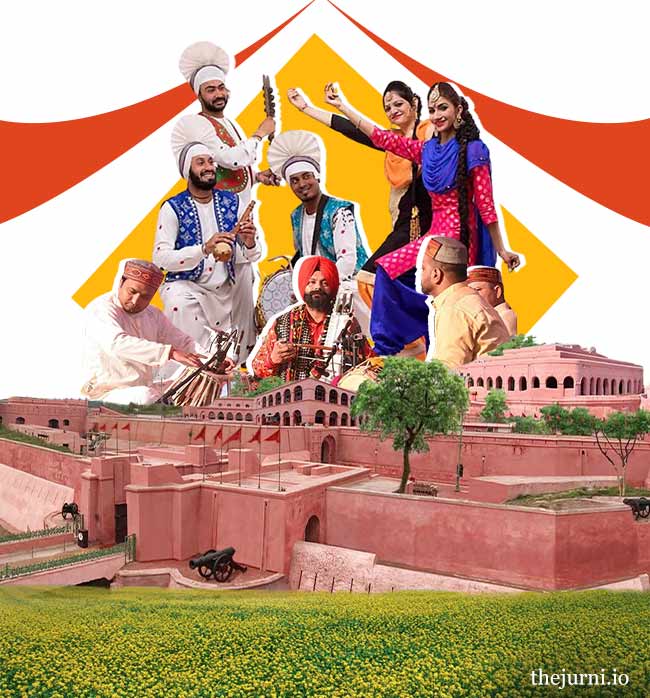
Amritsari Maan
What is the first image that comes to mind when you think of Punjab? Of course, there are the mustard fields whose glaringly yellow seeds have been ingrained in our minds since the ‘90s, thanks to Dilwale Dulhania Le Jaayenge. Yet, amidst this tapestry of sensory delights, there emerges a symbol that transcends mere landscapes — the Golden Temple.
Like how our imagination of Delhi feels lacking without at least a silhouette of the Qutub Minar in the background, or of Rajasthan without the Umaid Bhawan Palace and Hawa Mahal, it is difficult to think of Punjab without thinking about the Golden Temple. And inevitably so, this is true for Amritsar, which has long been a premier destination for spiritual tourism in India. Yet, while it maintains its spiritual significance, the city’s potential as a cultural capital is now being realised in an exciting new way.
Finding artistic expression
For generations, much like West Bengal, Punjab has nurtured a rich sense of artistic talent, from the lyrical poetry of Amrita Pritam to the soul-stirring melodies of Rafi. But while Kolkata became the de facto cultural capital of not just the state but of the country, Punjab never had the privilege of holding a designated space for creatives to thrive in, or to promote its culture at a national level. Enter: Amritsar, now emerging as a sanctuary for artists, musicians, and writers alike.
Recent events, such as the Sacred Festival at Fort Gobindgarh, unveiled a fusion of music and art that’s redefining Amritsar’s cultural fabric. With curated experiences blending poetry, heritage walks, and culinary delights, the city is resonating with a newfound artistic fervour.
Minhal Hasan, the visionary behind the Sacred Punjab Festival, encapsulates the prevailing sentiment: “Despite its global allure, Amritsar’s cultural heritage remains untapped. This festival aims to shed light on the city's rich traditions through the performing arts.”
The current vibrant energy pulsating through Amritsar has been gradually building over the past few years, particularly catalysed by the establishment of the Partition Museum. This landmark structure, situated at the heart of the city, has effectively shifted its rhythm. Adorned with artefacts, testimonials, and poignant remnants of a bygone era, the museum serves as a reminder of Punjab’s history. It has swiftly become a favourite haunt among artists, drawn to its evocative narrative.
Reflecting on this cultural resurgence, artist and curator Manisha Gera Baswani shared her sentiments, “Although my project has traversed the globe — from Lahore to the Kochi Biennale and the Ashmolean Museum in Oxford — exhibiting it in the sacred city of Amritsar felt like a homecoming.” Baswani’s poignant exhibition, Postcards From Home, a historic documentation featuring 47 artists from India and Pakistan, found a befitting spot at the Partition Museum, further cementing its status as a cultural hub.
However, this new electric vibe that Amritsar wears today has been in the making since the past few years.
A new vision
The state government is equally invested in giving the city a cultural makeover, encouraging significant collaborations between artists and institutions. These efforts have been more defined ever since the centre picked Amritsar to hold the sixth Heart of Asia ministerial conference on Afghanistan (strategically, so) and also as one of the venues for the G20 summit. One cannot help but wonder if that is where the idea of creating a ‘delegate experience’ came from.
“It is in addition to the open sessions that we have created a special segment exclusively for delegates (due to the increasing number of international conferences being organised in the city). This Delegate Package offers an experience that includes certain exclusive offerings, such as specially-curated meals, heritage tours, and priority seating,” adds Hasan.
The seven-day long Rangla Punjab Festival -– organised in Amritsar for the first time in February this year to showcase the artistic metamorphosis of the city -– is also testament to the government’s nudge for a revamp. A subsection of the festival saw acclaimed authors, poets, and intellectuals come together to explore a wide range of literature that characterise Punjab’s history.
“I feel the marketing could have been better. A lot of stakeholders were missing from the event which shouldn’t have been the case if they want to maximise their outreach,” says Niharika Arora, a content creator with border regions as her primary subject of interest.
Even the Punjab Art Initiative themed A Fine Balance was held in Amritsar for the first time last year. It had notable individuals from the city’s artistic community exhibit over 150 art installations, sculptures, paintings, and photographs, not to forget applaud-worthy performances by acclaimed vocalist Aruna Sairam and leading Hindustani classical slide guitar player Kamala Shankar, as well as Punjabi folk singer Dolly Guleria and singer-songwriter Harpreet Singh.
Cinema as a contributing factor
We know the enormous impact cinema can have on tourism. Remember what happened to Croatia’s Old Town Dubrovnik (King’s Landing) after Game of Thrones? Or to Goa after Dil Chahta Hai and Dear Zindagi? Something similar has been happening with Amritsar ever since Meghna Gulzar’s biographical film Sam Bahadur -– based on the first Indian Army officer to be promoted to the rank of Field Marshal -– generated quite the buzz last year.
The critically-acclaimed film on the former resident of Amritsar, Sam Manekshaw, had things end on a high note culturally for the sacred city, as it generated a significant interest in its rich history and heritage. Sardar Udham Singh, which was released in 2022, had a similar effect.
There are a series of factors that have led us to reimagine Amritsar as an emerging cultural hub. But its rich and layered history has always reflected the city’s love for the arts. Perhaps we are only seeing it now but Amritsar has always been ripe with the cultural capital needed for it to turn into a grand hub.
“To establish Amritsar as a cultural hub, reminiscent of its former glory, is a gradual process. The second edition of the Sacred Amritsar has sparked conversations about the city's potential to become the new cultural capital of the country,” said Hasan.
Its only shortcoming might been infrastructure. And with that being gradually taken care of, one can only imagine the ‘golden’ road that lies ahead for this historic city in this journey.
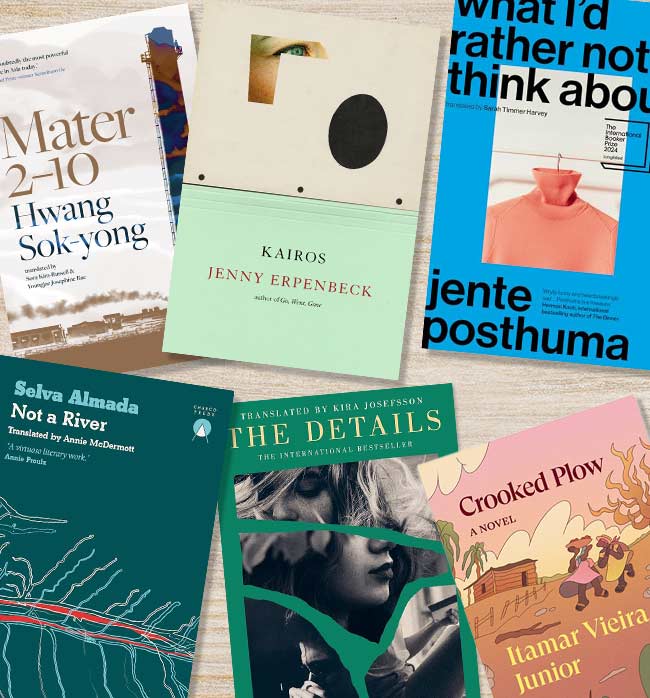
Of People and Past
The shortlist for the International Booker was released earlier this week, and while there is a diversity of languages and cultures explored among the nominees, there is also a common thread connecting all of these novels. A form that’s primarily concerned with meditating on the past, the shortlist of six adopts similar ways for examining history.
The two favourites for the award are perennial Nobel-in-waiting Jenny Erpenbeck’s Kairos and Korea’s Hwang Sok-Yong’s Mater 2-10. Both are located at crucial historical junctures, as Kairos begins with the dying days of the Cold War and the collapse of the Berlin Wall to situate a torrid love affair between a student and an older novelist. Mater 2-10, on the other hand, starts with the division of the Korean Peninsula and follows four generations of workers and their struggle.
On the other side of the nominees is debut novelist Itamar Vieira Junior’s Crooked Plow, which follows three generations of farmers in Brazil after emancipation, and much like Mater 2-10, is epic in scope, while examining history through the lens of the common folk.
From real world history, Swedish author Ia Genberg’s The Details has an unnamed narrator who is struggling through an illness and starts wallowing in the past of her relationships through a nostalgia fuelled trip into books and fictional stories. Personal tragedies set within larger historically significant periods are also the settings of Dutch writer Jente Posthuma’s What I’d Rather Not Think About, and Argentine author Selva Almada’s Not A River, which round up the shortlist.
So, which one of these will you be checking out?
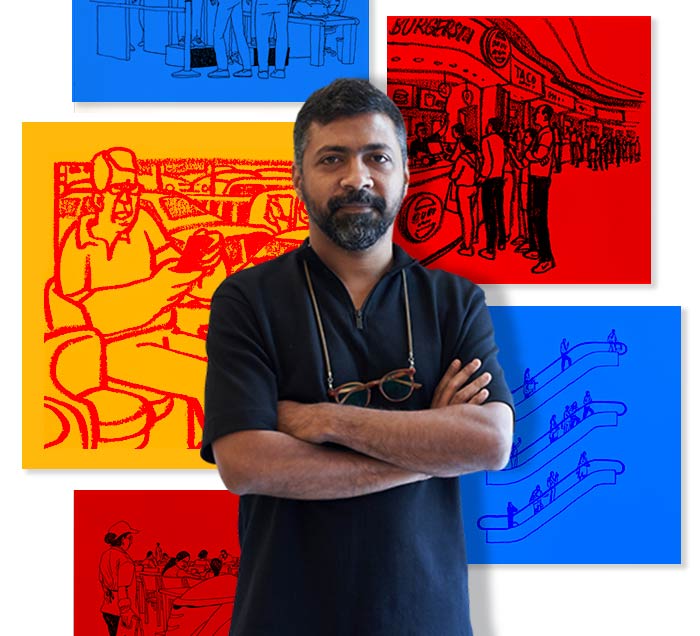
Art Will Go On
Among the bevy of artists who gathered at Art Basel Hong Kong, Mumbai-based contemporary artist Sameer Kulavoor was among the most sought after names. Championed by TARQ since 2017, the famed gallery also brought some of his most important interventions to the art extravaganza.
In the art world, Kulavoor needs no introduction. Having worked with a wide variety of media as well as concepts, his prolificity is such that you must have seen at least one of his artworks. Whether it is the street art murals at Sassoon Dock in Mumbai or Lodhi Colony in Delhi, or his famed designs for NH7 Weekender under the aegis of his studio Bombay Duck Designs, Kulavoor has been at the forefront of artistic experimentation in India. However, it is his work with TARQ Gallery that examines how urban scapes function that is making waves around the world.
TARQ’s presentation at Art Basel Hong Kong built upon the themes explored in Sameer’s 2023 solo show, Edifice Complex. In this body of work, he specifically focuses on the hyper-development that is prevalent in megacities like Mumbai. The animated spirit of the city and its people transfigure into muted, yet lively forms that refer immediately to its architecture and geography. Central to the display are two large-scale drawn Timelapses (2022), a series of sequential drawings that not only provide a unique perspective on the incessant, transient nature of urban structures, but also highlight Kulavoor’s refined understanding of colour and materiality.
The Jurni sat with him for a chat after Art Basel about his work, interests, and the cityscape.
As an artist who has worked across mediums ranging from music videos to art prints and even public art, what is your process for choosing which medium a certain concept will work? Does the concept for your artwork arrive after the choice of medium? Or is it more concept first and medium second?
SK: Medium is definitely related to concept as well as context. Most often the concept comes first. Having said that, there is no definite formula or process. The studio and easy access to resources in the city allow me to experiment with new mediums and materials and sometimes change in medium also leads to new ideas.
One of your central preoccupations is spatial representation and interpretation. What do you think is a feature unique to Indian cities and culture that allows for spaces of improvisation that are outside the purview of urban planning and authorities? How do you intend on reflecting this culture in your practice?
SK: I am currently interested in the relationship between the human condition and built spaces. In a way structures and spaces are a manifestation of the human condition and of our needs and aspirations. So one can really read into one's surroundings and identify patterns by looking at it. Cities in the eastern part of the world feel relatively denser than those in the west. There are several reasons –- the difference in climate and topography, culture, religion, traditions, the way human relationships and families work, socio-economic conditions, political conditions, and so on. There are several similarities as well –- gentrification is a hyper-local phenomenon but can be seen happening globally. The Internet and the dissemination of imagery has triggered aspirations, thus inspiring very similar looking copy-paste architecture and infrastructure projects.
You have worked with St+art at Sassoon Dock as well as Lodhi Colony, two very different spaces in terms of their footfall and gentrification (in case of Lodhi Colony). How did you approach either space when it came to creating public art? Was there a difference?
SK: Both were essentially different kinds of projects with unique settings –- I was offered a building facade in Lodhi Colony in 2018 for a mural Social Media Friendly Plants whereas at Sassoon Dock 2023 we had floor space that allowed me to create an installation called Metromorphosis.
Back in 2018, I was creating a work about how our devices and algorithms have silently begun to affect our physical spaces. The mural specifically was about the proliferation of certain low-maintenance visually-appealing ‘photogenic’ plants in homes, cafes, work spaces, etc. and eventually back on everyone's social media. I treated the building facade almost like a pleasant decorative wallpaper.
Metromorphosis in 2023 was a monumental miniature installation about the phenomenon of regeneration, adaptation, and evolution of urban centres and metropolises. The mega-city of Mumbai was built on the lands of the Kolis (fishing communities) –- the original inhabitants. Sassoon Dock itself is a fishing dock and so it felt like an appropriate space to tell the story of the metropolis.
One of the more striking aspects of your work, especially when it comes to representing the urban, are your choice of materials and hues. For example, your recent experiments with using cement boards as canvas. How did you strike upon such a unique choice?
SK: Particle cement board is a super hard and heavy surface to paint/draw on and by accident I tried solidified paint markers on it a few years ago. The markers felt like butter on a rough pan and the lines retained the rough edge once they dried. When I was working on the pieces (that were showcased at Art Basel Hong Kong), I remembered that experience and decided to use the boards –- but I used second hand ones that already came with scratches, marks, and rough edges.
You have long been associated with TARQ gallery, who also took your work to Art Basel Hong Kong. How important do you think galleries and the networks they engender for emerging artists are? And as someone who has been involved with galleries for over ten years, have you noticed a change in the kind of artists and creators that are being championed by them?
SK: It has been a pleasure working with Hena (Kapadia, Founder of TARQ) and the team at TARQ because they are thorough professionals and friends at the same time. Having them helped me focus entirely on what I love doing without being bothered about logistics of all kinds –- accounts, archiving, documentation, promotion, applications of all kinds, writing/text, etc. Having a good gallery representing you makes a part of your life easier. There are definitely some trends with gallery representation in the art world but as an artist you have just got to focus and do your thing.
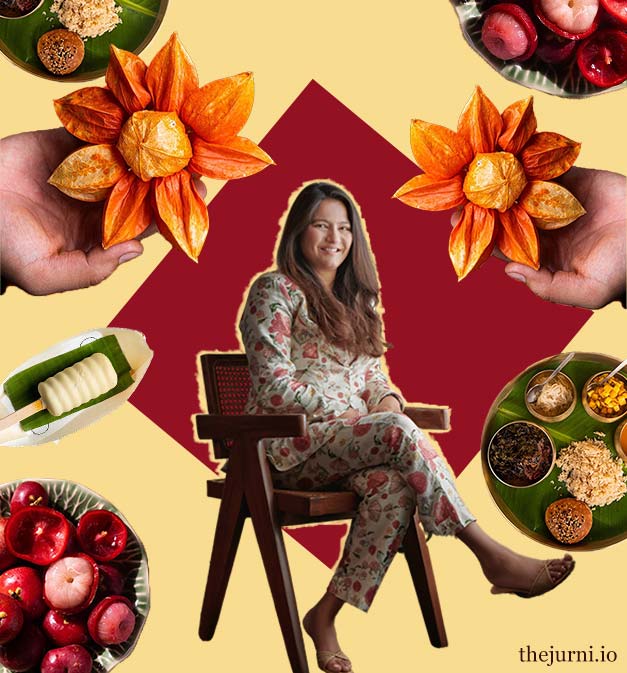
An Insatiable Appetite
If you happen to run into Aditi Dugar, whether it's at her famous restaurant Masque, a fun gathering, or even a work event, you're guaranteed to get a warm welcome. She'll greet you with a big smile and probably a friendly hug too. With more than ten years in the food scene, it's clear she knows how to make people feel at home. But here's the thing – I think it's not just about her skills; it's her real passion for food that shines through in every interaction.
When it comes to Aditi's professional journey, her accomplishments speak volumes. From the establishment of Sage & Saffron, her boutique catering and fine-dining service in 2012, to the creation of Masque in 2016, which stands as a beacon of innovation, celebrating India's rich bounty of produce through an immersive tasting menu. In fact, Masque claimed The Best Restaurant in India 2024 honour by Asia’s 50 Best Restaurant 2024.
While there's already plenty written about her impressive ventures, I decided to take Aditi on a nostalgic journey down memory lane. Sometimes, it's not about adding to someone's professional accolades; it's about cherishing the journey and the memories that shaped them along the way. And in that shared moment of reflection, we found a deeper connection beyond the titles and achievements—a bond forged through stories and shared experiences.
Rewind
Aditi had quite the lively upbringing in Mumbai, growing up in a Marwari-Jain household filled with relatives of all ages. The phone in her house served as more than just a communication device — it was like a catering menu, constantly ringing with calls from various family members, each with their own tastes and preferences. “It was a task to cater to everyone's needs, from my cousins to my grandparents, who had their own dietary restrictions like avoiding certain vegetables and following Jain principles,” she says, adding that living in such a large family was both chaotic and enriching, with shared meals and shared memories filling her home with warmth and love.
Aditi admits that her mother played a significant role in shaping her culinary experiences, bringing global influences into their home despite being rooted in traditional Indian cuisine. “It's fascinating how different cultural backgrounds can blend together to create a unique culinary tapestry within a family,” she says, adding: “My grandma was really into using local produce. We're from a small town called Bidasar in Rajasthan. Everything there was connected to the land, you know… grown with care. I used to love visiting my grandma's house, where she'd always have delicious homemade dishes for us to enjoy. We'd eat fresh roti and other delicacies she made with love. After the Partition, some of my grandpa’s siblings moved to the UK, so my mom's side of the family was influenced by global cooking. This influenced what my mom cooked for us.”
It was her mother’s passion for cooking, and her willingness to impart that knowledge to others around her, that inspired Aditi to start Sage & Saffron. “My mom used to hold cooking classes at home and her innovative recipes earned her quite a reputation. Even high society women were eager to learn from her. Even when we would travel to visit dad's brother who lived in Bangkok, Thailand, around a decade ago, where finding good vegetarian food was challenging. So one summer, we went there and took classes with a street food specialist to learn more about cooking. My mom was always interested in cooking wherever she travelled and I often joined her in classes. Eventually, I started cooking in London, too. When I returned, I began helping her with professional cooking classes. That's when the idea of starting my own catering business came up,” says Aditi.
Despite a successful stint in finance, Aditi decided to focus on cooking full-time. “Even after completing my MBA, I realised my passion lay in being a great cook and a mom. I couldn't sit still; I've always been a hustler, especially growing up in a big family with many cousins,” she adds.
Aditi’s mother wasn't really into marketing herself or her business. Even when clients asked her to cater events, she would often say no. But one day, during a conversation, Aditi suggested that she should give it a try. Surprisingly, she agreed and that changed everything. She realised how much people appreciated her food when it was freshly prepared and served, rather than just packaged and sent out. “That feeling of hospitality and appreciation excited me. I told my mom that she could focus on cooking while I handled the business side of things. So, we started our catering business together, with me taking care of everything from marketing to running events. I enjoyed the hustle, going to the market myself to pick out ingredients and flowers,” she says.
Being a vegetarian has definitely influenced how Aditi cooks for her children. In the past, vegetarian options in restaurants were often limited to side dishes or fried foods. Even at home, she sometimes found it challenging to find a variety of vegetarian dishes that were as exciting as restaurant offerings.
“But things have changed a lot in the past five years. Chefs are now more creative with vegetable-based ingredients, making dining out a much better experience for vegetarians like me. It's not like it used to be five or six years ago when vegetarian options felt like an afterthought,” she says.
Complexity of flavours
Growing up, Aditi was lucky to have access to a wide variety of cuisines, both regional and global, thanks to her Marwari background and well-travelled friends. “This diversity has influenced how I cook for my own family now. I make everything from Japanese to Mexican dishes at home.” And she admits that she taps into the rich culinary heritage of Rajasthan now and again to keep her childhood memories alive. Recently, the Masque team went on a trail and cooked their version of a khad khargosh (rabbit curry), which was cooked underground, wrapped in a sack, and then covered with ash.
Inspired by this, Masque also created a vegetarian version of the dish with sweet potatoes. “Rajasthani cuisine is known for its rich and flavourful dishes, often using dried berries and various spices. Since fresh vegetables are scarce during the winter, yoghurt-based preparations are common, along with a variety of greens. Overall, the response to our khad khargosh was fantastic. People were amazed by the flavours and presentation, and it was a great way to showcase the richness of Rajasthani cuisine,” she says.
Constant reinvention
Given her penchant for trying out new flavours, Aditi is always looking to add something new to the menu at Maque. “I don't mean to sound ungrateful, but even we can get bored sometimes. After eight years, our restaurant has reached a level of maturity where we find ourselves feeling tired of the same old routine. It's been three months, and our menu hasn't changed, yet the dining room is full every night. It's like we've created our own little bubble in our heads. While our customers are happy with the familiar dishes, it can feel a bit repetitive for us. Sure, it's great that so many people keep coming back for the same menu, which we've tweaked slightly for each season or event. But in my mind, I'm always thinking about the creative aspect of running a restaurant,” she says.
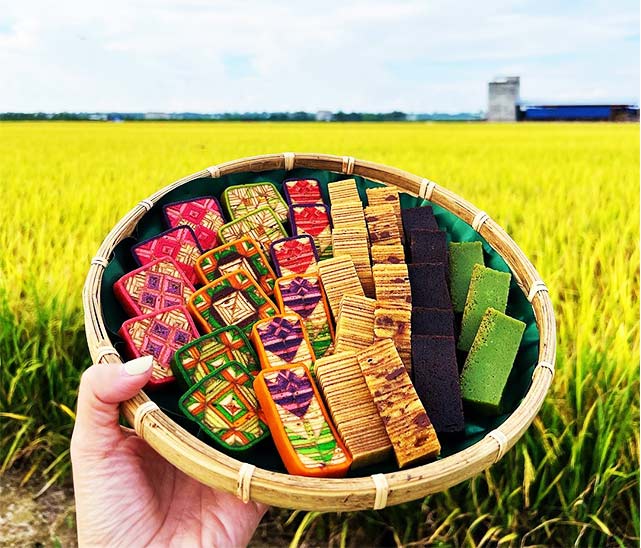
A Thousand Cakes
Kek lapis is a dessert you have to try, especially during this time of the year. Combining detailed patterns with an equally delicious flavour, it is a Malaysian staple when it comes to celebrations. Originally making its way from Sarawak, which got its version from the Dutch, this take on a layer cake has evolved into an artform, with skilled bakers focusing on creating intricate designs. Despite being time-consuming to make, it is worth the effort. So when are you travelling to try this delectable dessert?

To New Shores
The mokoro is the perfect place to witness South Africa’s lush canvas from, particularly in the Okavango Delta in Botswana. The stillness of these traditional canoes allow you to create an intimate connection with nature, immersing you in the sights and sounds of the Delta.
As compared to other spots in Botswana, Okavango remains largely untouched, interrupted only by the meek mokoros. For a long time, being a ‘poler’ or mokoro guide was considered to be a man’s job. This is because taking people on a tour on dug-out canoes along the glassy delta waters required a considerable amount of balance and physical strength.
But mokoro safaris are undergoing an interesting shift. The challenge is now also taken up by female safari guides, who want to share the knowledge and culture of their land with tourists. Okavango Delta is one such place where women are getting to explore this passion by turning into mokoro guides.
For many of these women, mokoro safari is a two-way street, helping them to not only create a fresh means of income but by also offering them something unique. The stillness helps them use all their five senses without any disturbance, transporting them into a meditative state and leaving them with indelible memories of its tranquillity.

All That Jazz
What do you get when you mix a versatile sound with jazz and just a dash of Indian ragas? That’s the music of jazz virtuoso Don Cherry, known for his adventurous spirit that left an indelible mark on the genre with his eclectic musical explorations.
If you’re looking to familiarise yourself with Cherry’s work, maybe give Malkauns a shot. The song is like a magical 14-minute trailer into some of his incredible work. Another great listen is Utopia and Visions. Cherry was deeply influenced by Brazil, India, Turkey, and South Africa, as well as American jazz. And this song seems to capture it exactly. Or, you could start your day today with Luna Turca. Musician Nailah Hunter, says it best when she says, “It feels both sunlit and sombre at once — a contrast that I’ve always found to be enticing.”
Cherry’s style was characterised by its fluidity and openness, inviting you on a journey of sonic exploration. Whether he was playing the trumpet, flute, or experimenting with various percussion instruments, Cherry’s music always exuded joy and playfulness. Tracks like Malkauns and Summer House Sessions Side A capture this spirit with their infectious rhythms and carefree vibe.
Cherry’s legacy continues to inspire musicians and listeners alike, reminding us of the boundless possibilities of artistic expression. So next time you’re in the mood for some adventurous jazz, don’t forget to add Don Cherry to your playlist and embark on a musical journey like no other.
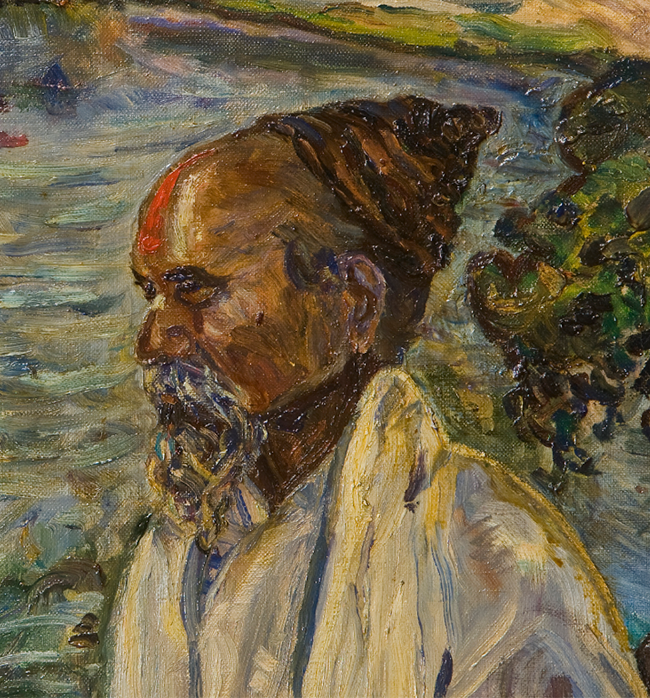
Art Attack
Indian art has been on an upward trajectory in the past two years. New venues such as the NMACC, Hampi Art Labs, as well as The Brij in Delhi have opened up to increase the number of available spaces for artists and the arts. At the same time, legendary Indian artists are reaching new heights the world over. Last year, Amrita Sher-Gil’s The Story Teller broke the record for an Indian artwork, selling for a whopping INR 62 crs.
With all these developments in the Indian scene, it seems to be just the time to explore and promote a new dimension in contemporary art, whether it is revisiting old masterpieces, or reinventing traditional art forms.
Old is gold
While Sher-Gil is extremely well known even outside art circles, there is a panoply of Indian artists who seem to finally be getting their dues and recognition. Rumale Chennabasaviah, one of Karnataka’s greatest modern artists (also known as India’s Van Gogh for his striking naturescapes) painted over 600 artworks in his prolific career. NGMA in Mumbai is presenting a retrospective on the artist, featuring over 80 of his best works.
Meanwhile, one of the founders of the famed Calcutta Group, Gopal Ghose, is being celebrated by DAG 2 in Mumbai through a retrospective exhibition that explores the breadth of his oeuvre. Known for his striking use of watercolours, this is an unmissable look at the evolution of contemporary Indian art. In his hometown of Calcutta, Ganesh Haloi is finally getting his first large-scale exhibition at the Birla Academy of Art & Culture, exploring a monumental 60-year-old career.
The new look
Mixing the rich storytelling traditions of India, and traditional arts, along with a smattering of eclectic styles like hand cut paper, Debjani Bhardwaj is creating an fascinating showcase that invites the audience to engage with the art as well as participate in creating it at the Threshold Art Gallery in Delhi.
At Snowball Studios in Mumbai, Milaaya Art Foundation aims to revive the art of embroidery in a modern way. By training on artworks by famed artists, the exhibition has artisans use varied embroidering techniques to create different versions of the same artwork, thereby highlighting the uniqueness of each technique.
So, where will you be headed this weekend?

True Detective
If you couldn’t get enough of Sherlock Holmes or have ever wished to get a detailed and engaging visual account of Dostoyevsky or Chekhov’s crime stories, The Russian Detective by Carol Adlam may be right up your alley. The graphic novel not only captivates you with its stunning, evocative tales, but has meticulously carved out characters who take you on a nail-biting ride.
The book is part of Adlam’s Lost Detective Project which draws on the work of crime fiction writers who have been long-forgotten. Most of those are contemporaries of Dostoyevsky. Through her complex and elegant narrative, Adlam has endeavoured to bring to life not just the lost legacies of early crime fiction, but also the first women journalists and detectives.
One of the novel’s protagonists is journalist-detective Charlotta Ivanovna who is loosely based on America’s first female detective Kate Warne (one of Warne’s projects was to protect Abraham Lincoln from assassination). Then there is Charlie Fox, a stunt journalist, thief, magician, and a liar, who reluctantly returns to her hometown to investigate a murder. The book also borrows from the names of famous characters (there’s a Mrs Karenina as well).
This is the sixth graphic novel by the deft caricaturist who is known for turning her narratives into an almost “museum-like…luxuriant historical album.” The book could be a great way to catch a whiff of her work.
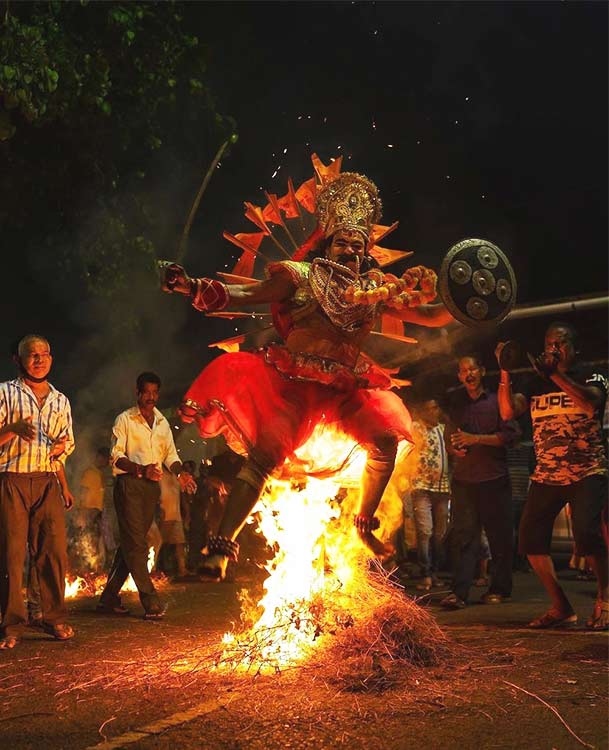
The Carnival of Colours
Spring is here and that means it’s time for celebration. And if you’re missing Holi just a tad, maybe Goa’s Shigmo is the fix you need. Think of it like a mix of the festival of colours and the carnival all at once but for a whole fortnight. You can see parades, dancers, floats, and much more as the city comes alive with Shigmo. So, if you’re in the mood for an authentic Goan holiday, you know what to do.

Harvesting Culture
What drives your desire to travel to a particular destination? Scenic beauty, exhibits showcasing its rich cultural tapestry, gastronomy, or architecture? While some cultural melting pots let you check off one or more of these must-haves, there is a place in South Africa with versatility that makes it an ideal option for all of them.
Amidst the towering Swartberg Mountains, the serene oasis of Prince Albert nestles at their base, peppered with cascading waterfalls. Settled on a diminutive floodplain in the vast Great Karoo region of South Africa, this town offers an alluring blend of natural beauty and cultural treasures. Whether you seek adventure on the hiking trail leading to the prominent koppie, immerse yourself in local artistry at galleries, or indulge in captivating theatrical performances, Prince Albert has something to captivate every sort of traveller.
It has turned into a haven for culture enthusiasts who flock to the village every year to attend the Leesfees Literary Fair and Journey to Jazz Festival (set to take place in May). You will also find a treasure trove of historical marvels at this semi-desert like its rock art dating back thousands of years and protected by the indigenous communities residing here, like the San people.
Do you know of any other such lesser-known place that has everything, everywhere, all at once?

Rolling In Cultural Aisles
We all know that emojis are used universally and so are certain acronyms like LOL or ROFL. Turns out, when it comes to laughing, the act is represented in different ways in texting across the world. Like the word warau in Japanese which is often used interchangeably for laughter or a smile and has eventually evolved into just the letter W to symbolise the same.
That is not all. When people noticed that when used in multiples (www), the letters looked like blades of grass. This led people to start using the Japanese word for grass (草) to represent laughter. So say, if you wanted to write about laughing hard in Japanese, you could just type ‘giant grass field’.
Similarly in Nepal, the terms khit khit or khit kaa are used to denote an explosion of laughter while Nigerians use the pidgin, lwkmd, or “laugh wan kill me die.” The Turkish are the most flexible of all in this context as they use keyboard spam (hfrjfelwnfjhebg or the likes) to represent laughing hysterically, almost like the ‘90s India when keyboard spam almost became a language.
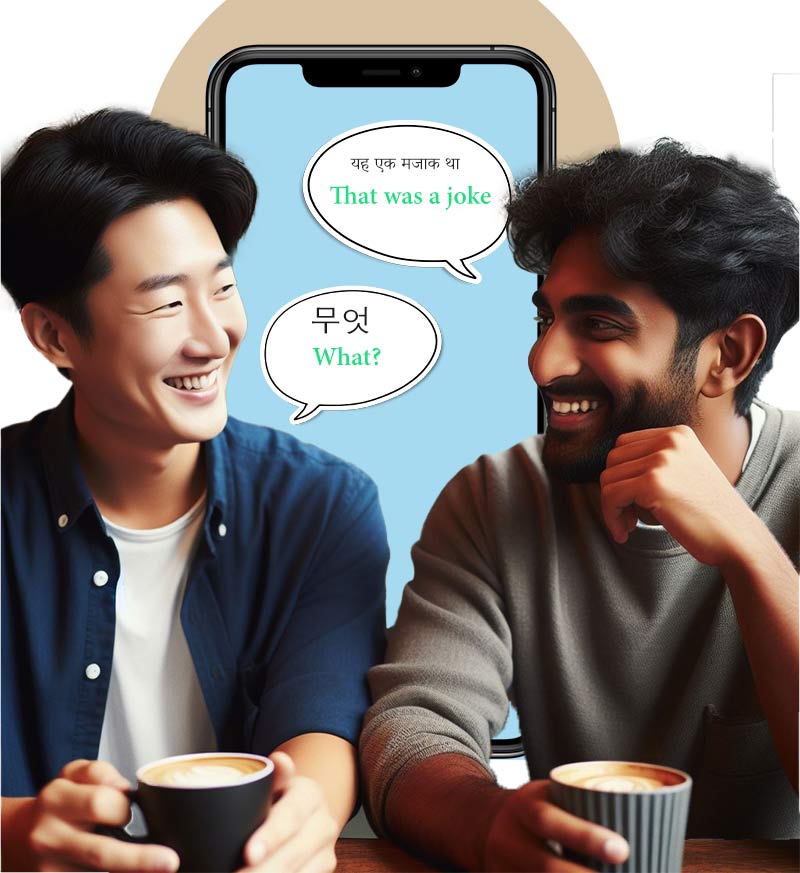
Try-Lingual
As Indians, learning new languages is a very common experience. Language learning is not simply learning a different way of talking, but also a different way of living, and of understanding a culture that is not your own.
With the growth of language learning apps, one would expect a boom in learning foreign languages the world over. But surprisingly, picking up linguistic skills has been decreasing in popularity recently.
What’s the word?
The advent of AI has been a godsend for breaking barriers when it comes to communicating. For those of you who still persist with language apps, you must be aware of new AI features on it that supposedly help you learn more easily.
Thanks to AI databases, large language models (LLMs) can be created which can account for most situations where communication is needed. These LLMs can construct more lessons by examining mistakes and helping strengthen the aspect of language that needs work.
That’s good, right?
What LLMs have also managed to do, alongside improving your learning experience, is to become incredibly efficient at translating. Gone are the days when you laughed at the hilariously inaccurate robotic translation on the internet. Online translation and transcription to audio has become amazingly accurate, to the point where you can use a selfie and a voice sample to create a video of yourself speaking fluently in any language.
What this does is reduce the need for overarching classes or lessons to simply translate a language. The brilliance of LLM and its huge datasets is that not only is it simply translating from one language to another, but is also able to grasp the cultural specificities of a language and provide nuance to the reader.
This heralds a new age in cross-language communication. AI’s efficiency at translating is reminiscent of comic book superhero Green Lantern, who possesses a ring that can translate any alien dialect instantaneously, to the point where it is difficult to tell what language is being used. Maybe that’s what is in store for everyone on Earth too.
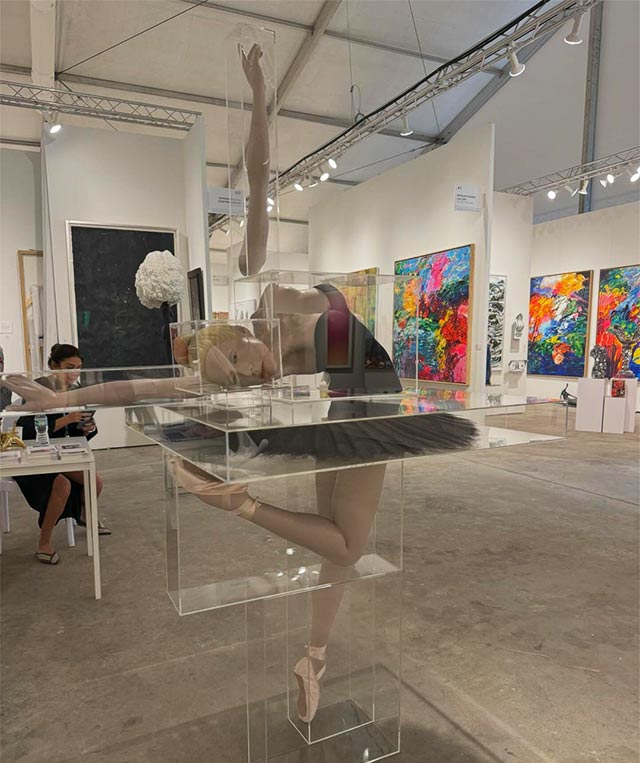
March-ing in the Art
March in Hong Kong is not just another month — it’s a celebration of creativity, culture, and connection. Fondly referred to as art month, this bustling metropolis comes alive with an array of exhibitions, fairs, and events that showcase the best of contemporary and traditional art.
With iconic events like Art Basel scaling up to their pre-pandemic size and fairs like Art Central returning to their original grandeur, there’s no shortage of cultural outings to explore. But it’s not just about the big names and prestigious venues. Hong Kong’s art scene thrives on diversity and inclusivity, with galleries and exhibitions popping up in every corner of the city. Whether you’re wandering through the streets of Wan Chai and Eastern District or immersing yourself in the contemporary vibes of Island South, there’s something for everyone.
Mongolian artist Jantsankhorol Erdenebayar’s work has been getting rave reviews. Inspired by his heritage and its folklore, he also often collaborates with his mother, who is a renowned artist in her own right. Emblematic of much of the art adorning the city this time, Erdenebayar’s process is a captivating mixture of the old and the new.
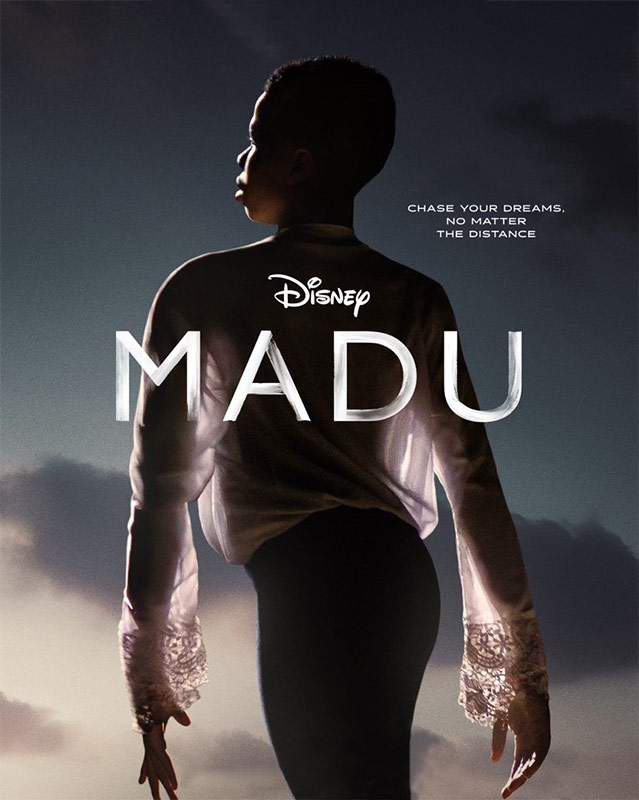
The Boy of Ballet
Ballet, in pop culture parlance, has become shorthand for cultural expressions that are difficult and closed to the layman. It holds this status, along with other classical arts like the opera, in part due to gatekeeping, as well as lack of exposure and funding outside of first-world countries.
Stepping into this arena is a 12-year-old boy from Nigeria who has been capturing the world’s attention. Anthony Madu, who went viral for his video that showed him enacting ballet, is the subject of the documentary Madu, which follows him and his first year away from his family.
After his video went viral, Anthony was granted a seven-year scholarship by the Elmhurst Ballet School in London. The documentary, therefore, moves between Anthony’s new surroundings and new classmates in England, and his family that has stayed back in Nigeria. To capture both worlds, the documentary is co-directed by Oscar-nominated Matthew Ogens, and Nigeria-based filmmaker Joel ‘Kachi’ Benson. This allows the visual stills of the film to do the talking instead of having excessive interviews and audio.
The film not just delicately portrays the pressure and adjustment pains that Anthony experiences, but the pining of his family as well. In essence, Madu seeks to capture the discomfort possessing a talent that few around you can understand. And among artists, Anthony is certainly a unique one.

Young, Wild & Free
Indian cinema has come a long way in terms of storytelling. It has evolved to embrace diverse subjects. But have you noticed how this rich tapestry of narratives is lacking in one thing? Coming-of-age stories. Stories that give us a peek into the minds of the country’s youth. While Hollywood has helmed some memorable masterpieces like Boyhood, Lady Bird, and Perks of Being a Wallflower, India has just had a handful of them.
Producer Ashi Dua is looking to change that with a series that gives the youth an opportunity to be heard. With Big Girls Don’t Cry (BDGC), which came out on Amazon Prime last week, Dua tells the story of seven girls who navigate life’s challenges at a boarding school in the hills, with actor Pooja Bhatt portraying the principal. In a freewheeling chat, Dua tells us about her choice of subject and her fascination for anthologies.
Q. Your previous productions like Ghost Stories, Lust Stories, and The Ghazi Attack, have mostly played with darker themes. What inspired you to opt for a coming-of-age story like Big Girls Don’t Cry?
My partner Karan and I produced the series together along with Nitya Mehra, who has directed it. It was practically Nitya’s idea. We had all studied in boarding schools and we realised there aren’t many stories about them, especially girls in boarding schools who witness a myriad things at a very impressionable age. So we were very keen on telling an authentic story about boarding schools in India and what that life is like. Because we (the creators) have had a first hand experience, we’ve drawn a lot of inspiration from them. In fact, my co-producer studied in the same school (Lawrence School, Sanawar) where it has been shot.
Q. We have been getting quite a few teen stories off late (Archies and now this). Teen content hasn’t had much of a market in India. Do you think that’s changing?
I hope it is because 60 percent of our population is under 35 and there aren't enough stories about them. We need more stories revolving around the youth, there’s not enough content on it. Whether it’s about their school life or college life, I hope more people go out there and create stuff that tells their stories.
Q. If you had to pick a great coming of age movie that you watched recently, what would it be?
I don’t know about recently but one coming of age Hindi movie that made a huge difference to me was Rang De Basanti. I had just gotten into college when it came out. In English, it has to be Pineapple Express. Udaan is also a beautiful film. I remember watching it at the Cannes Film Festival and crying from my gut.
Q. Why did you use the title Big Girls Don’t Cry? Is it because life in a boarding school as a girl is slightly more challenging? Does the series also confront issues like bullying?
We feel it has a sense of irony to it because girls cry all the time, big or small. But we’ve picked this title because the show is about these girls who get up and take things head on, no matter what the scenario. Which is also what happens in real life. Whether or not they cry, big girls get on with their lives and make things happen. The story explores a variety of subjects from entitlement, bullying, sisterhood, growing up, heart breaks to everything that happens to you between the ages of 15 and 17.
Q. Your first production, Bombay Talkies, was an anthology which almost ushered in a trend of anthologies in India. Since then most of your productions have either been anthologies or had multiple storylines and directors? Is there a particular reason why you’re drawn towards such projects?
I like working with different minds. Even BGDC has multiple directors. There are so many characters and so much going on and you always shoot within a limited amount of time. It’s exciting. However, I did not go out and purposely look to produce such stories. I started my career with an anthology. It had four directors and then I went out to do Lust Stories One and Two, but I'll also be working on a couple of feature films and series which are going to be helmed by one director. I didn’t do it to create a trend, I was just going out there to make an anthology. But people do look at me as the anthology person. In fact, my next project is being directed by one person, so it really depends on the project.
Q. As a producer, what is the biggest risk you’ve taken so far, in terms of a storyline?
Producing anthologies in India was a big risk at that time because not many people had done anthologies with such senior directors prior to it. So that itself was a huge, huge risk. Fortunately, both Bombay Talkies and Lust Stories paid off quite well for us. At the time when I was talking to people about it, everybody said it was too risky and that no one would watch it or want to put their money into it. I am sure I am going to take many more risks in the future because filmmaking is all about risks. I just hope people end up liking them.
Q. What is the one thing that stands out about Big Girls Don’t Cry?
The girls. You’ll see seven fresh faces and they are all so authentic. We’ve been getting a lot of love, and everyone who has watched the show absolutely loved the way they are and their characters. They are supremely talented. The other thing is the music. It’s quite unique.

Livin’ on a Player
The gaming landscape in the country has transformed. Not only are there more games available across various platforms, but you may not know that more than 40 percent of gamers in India are women. And the number only seems to be going up.
Wait, what?
These findings challenge longstanding stereotypes about women in the gaming community. Zerah Gonsalves Gulati, an esports veteran, said, “I’ve witnessed the growing number of women in gaming, both as players and professionals...These statistics reflect a growing acknowledgment of the diverse interests and talents that women contribute to the gaming community."
In addition to social dynamics, the report delves into behavioural and economic aspects of gaming. It highlights an increase in the average time spent on gaming per week and the significant economic potential of the gaming industry in India.
How, though?
As the narrative expands, it gives you space to explore the personal experiences of female gamers in India. The convergence of agency, intimacy, and the pursuit of freedom has given rise to a collection of distinctive games led by women that have originated from South Asia. For instance, Raji: An Ancient Epic delves into Indian mythology and mediaeval architecture while narrating the journey of siblings, a relationship seldom explored in gaming. These new games make room for people from more diverse backgrounds and different interests. Have you noticed this trend as well?
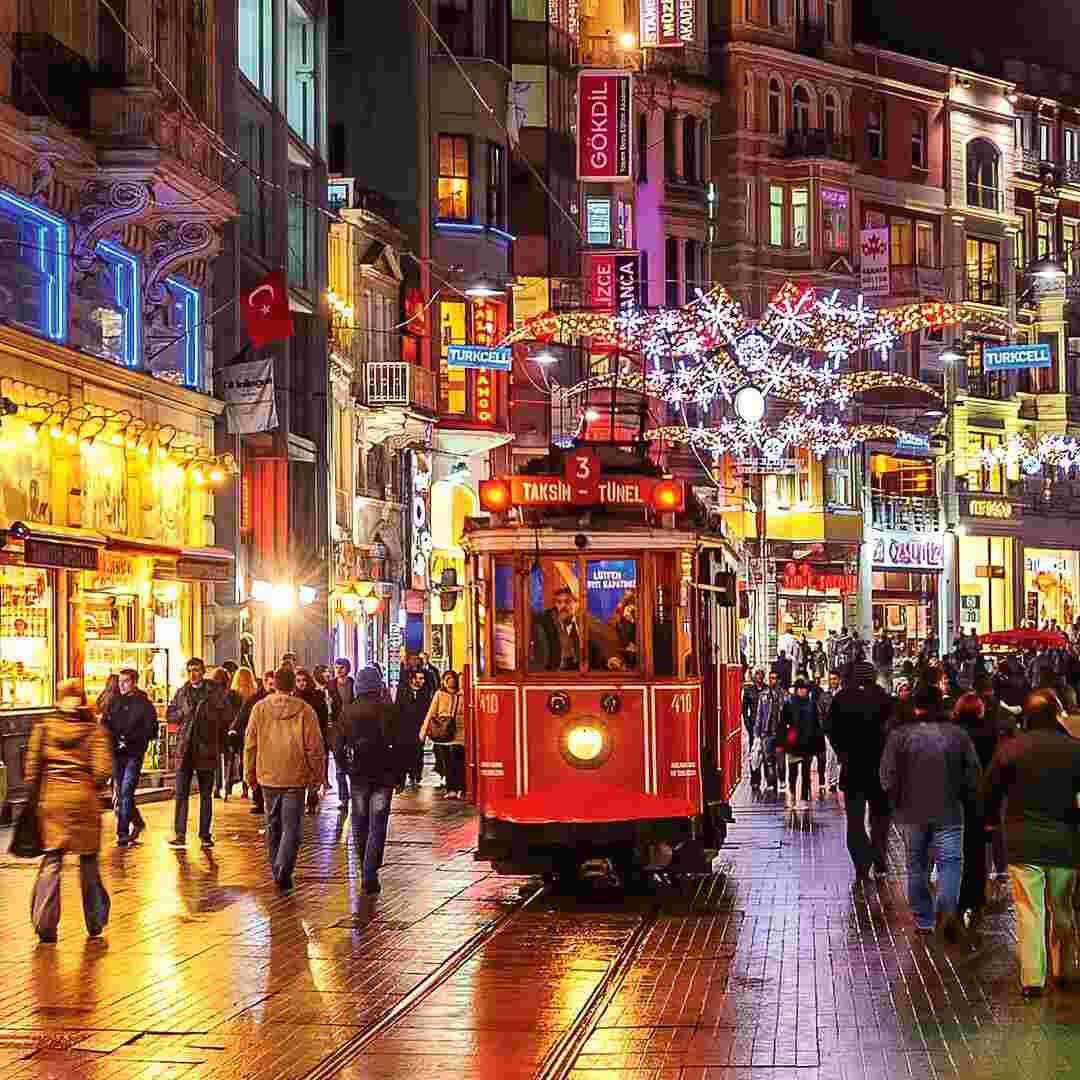
Bring Me Your Cup
Do you know about Turkish coffee? The country has had a long history with the barrage, so much so that the first coffee house in history opened in Istanbul all the way back in 1554. As the aroma of coffee spread over pages of the country’s history, it deepened its bond with a distinctive part of its coffee culture — the ritual of kahve fali or reading fortunes from coffee grounds. While practised in many parts of the world, Tasseography is considered sacred knowledge in Türkiye. This ancient art, typically passed down from grandmothers to mothers, was limited to İstiklal Avenue for a long time.
Today, “reading” coffee grounds seems to have found its way all over the world. One part of the reason behind this shift is the general rise in divine practices. Another of course, is the fact that more people are aware of the culture of Türkiye and want to explore these bits of it. But maybe a large part can be attributed to the fact that coffee consumption grew three fold in the last five years. Tch, what would Professor Trelawney think?
While Athens’ first fortune telling coffee shop Flitzani (Greek for cup) has become one of the most frequented cafes in the Greek capital, New York’s Dr. Honeybrew’s Turkish Coffee Room has almost turned into a secret door, guarded by a few and frequented primarily by celebrities. Have you ever come across a fortune telling coffee shop in India too?
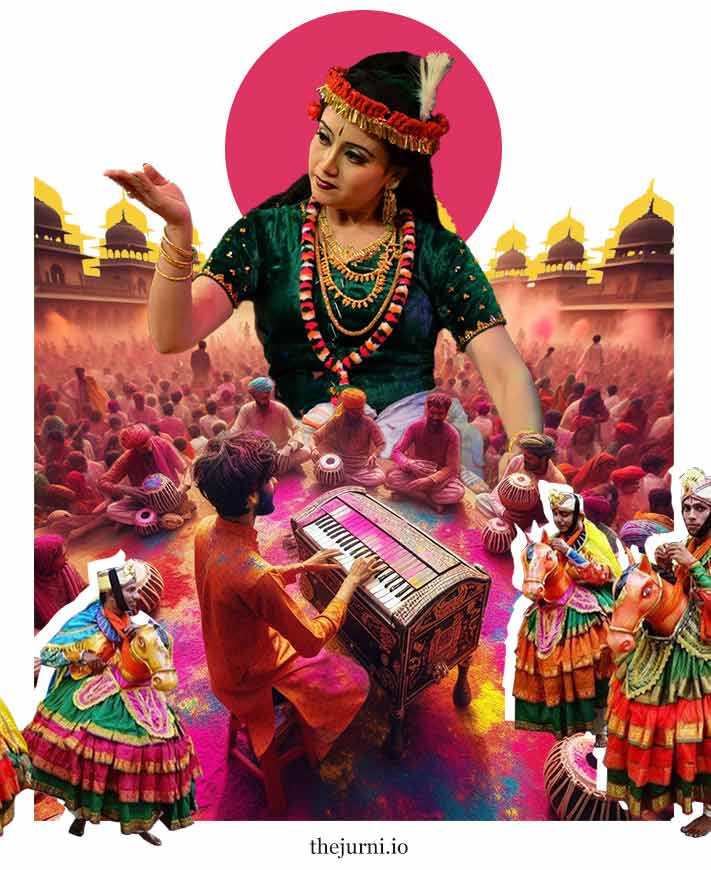
Colour, Colour Which Colour…
Did you know Punjab has a different version of Holi? Called Hola Mohalla, it is famous for a brilliant display of traditional martial arts. In Goa, the festival is celebrated for almost two weeks as a carnival. Holi changes its shape throughout the country, going beyond just the bright colours and pichkaris. Let’s take a glimpse at some unique festive traditions to whet your curiosity.
Of ragas and rang
In the northern states, spring celebrations are a symphony for the ears. Amidst the colourful chaos, folk music blends with hues in a unique Baithaki holi tradition, with people seated in a circle. Originating in the 15th and 16th centuries, it has been kept alive by the people of Kumaon.
A traditional twist in Manipur
Yaoshang is the spring festival of the state. It coincides with the full moon of the last month of the Meitei calendar. This is why it usually takes place a few days before Holi and lasts almost a week. Thabal chongba, a traditional dance, is a primary feature of the festival’s evening celebrations. During the day, sporting events dominate the streets of Manipur which start with a procession from the historic Kangla Fort.
Festivities coast to coast
Holi gets the name of Manjal Kuli or Ukuli in Kerala, where turmeric paste mixed with water is splashed on people. The tradition is more popular amongst Kudumbi and Konkani communities who believe that it symbolises prosperity and fertility.
While Kerala takes the subtle route to celebrate the festival, Goa holds a massive carnival with folk music and street dance for Shigmo. If Manipur has it for five days, Goans hold celebrations spanning over 14 days! A unique feature is the decoration of fishermen boats with intricately designed mythological motifs.
Which version would you like to celebrate?
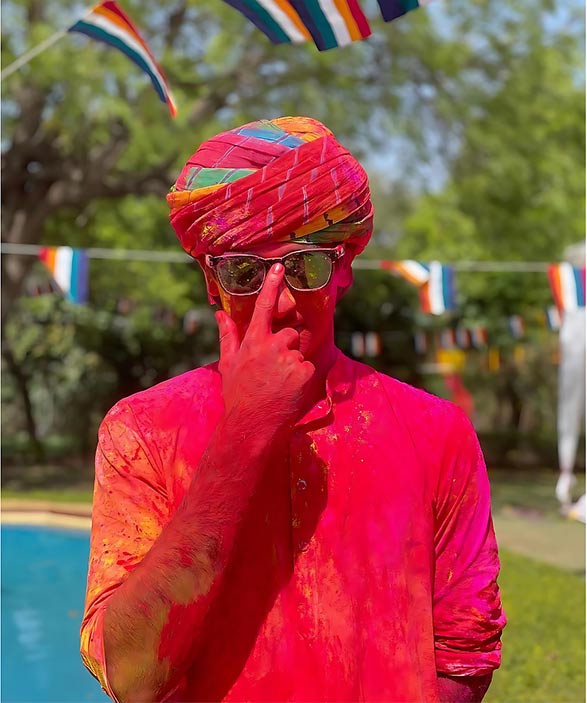
Joyous Jaipur
Amidst the world of polo, parties, and philanthropy, Maharaja Sawai Padmanabh Singh (also known as Pacho) carves out his persona with finesse. When Holi rolls around, it's time for Pacho's famed annual event, affectionately dubbed 'Jaipur Massive', where high-flyers gather for a day of pure merriment. Despite the glitz and glamour that surround Pacho's gatherings, tradition remains steadfast, serving as an enduring anchor for his esteemed family. Whether they're clad in midnight blue for Diwali or sporting pale pink for Holi, the royal clan remains deeply rooted in their cultural heritage.

City of (Rock) Stars
At a time when Bollywood and pop songs dominated the zeitgeist in the ‘90s, Shillong was giving the rock genre a tour of its hip cafes. All while sitting atop misty mountains and along its limpid lakes. Over the years, the city has laid claim to the title of India’s rock capital. But did you know that Meghalaya’s love for the genre has its roots deeply embedded in the rich cultural heritage of the Khasi and Garo tribes?
Singing the same tune
One of the reasons behind this is that drums – one of the primary instruments required to create rock music – are also an integral part of Garo folk songs. Shillong’s cafe culture and affinity for live performances also increased its popularity and encouraged independent artists across Meghalaya to experiment with rock.
There are also some new entrants
Rock has always been the city’s favourite (it even has a cafe named after Bob Dylan!). But over the past few years, several artists from Meghalaya have picked up rap and R&B, fusing them with indigenous music. This expansion is evident in the works of the more popular artists like Jessie Lyngdoh and Dalaphi Lamare aka Reble. In fact, Reble’s more recent creations have been garnering rave reviews, with the artist being touted by many as one of the most talented rappers in the country.
There is a desire to reclaim identity through different genres
“Northeast India is often put in a box as one homogenous entity. But it's a very diverse group of people –- even within Meghalaya, there's so much diversity, among the Khasis, the Garos, and the non-tribal population,” photographer Anurag Banerjee says. His book The Songs of Our People explores themes of identity and belonging through the lives of musicians in Meghalaya.
The growing popularity of music fests like Shillong Cherry Blossom Festival and the Majuli Music Festival are also helping artists who experiment with these genres grow. Hopefully this will help bring different genres out of their shells while also platforming some new voices in the process.
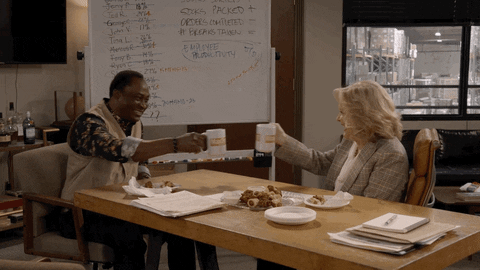
Evolving Workspaces
While remote and hybrid work modes are rightly growing across the board, the importance of office spaces and how they are designed has never been more noticeable. This is the case for both corporate offices as well as co-working office spaces.
Even work spaces for remote workers have come under scrutiny in terms of creating the most productive environment. With ideas of productivity, cooperation, and accessibility in mind, several designers are reinventing the workspace in the most imaginative and innovative ways.
The other office culture
Modern workspaces extend beyond mere recreation rooms. Office designs now very actively focus on enhancing communication and teamwork. The “open office” trend was initially popularised by coworking spaces. But today, it has spread to corporate environments as well. This design makes room for social interactions among employees from different departments, fostering a collaborative and inclusive work environment.
Which is perhaps why so many designers are seeking inspiration from unconventional spaces. Many corporate offices now have coffee shop-inspired work areas. This lets people unwind, talk, and even roam around. Some other offices also have shared spaces. This trend seems to be catching on in finance and marketing specifically. But do you think it can break traditional barriers?
Beyond the coffee shop aesthetic?
While the cafe-inspired design elements are popular in some industries, they may not be suitable for all. In contrast, certain workplaces prioritise different characteristics. Take legal offices, for example. The sensitive nature and high-stress environment dictates the significance of lighting and light distribution. Thus can contribute to both productivity and a calmer office space.
On the other hand, if you look at the tech industry, you see a whole different perspective. The workforce tends to be younger on average and experimentation is key. So tech communication and guidance are very important day-to-day. Which is maybe why many tech offices have open office designs with movable desks to encourage collaboration.
Offices use design to create a flow that aligns with what they do. Sometimes that looks like fluidity and other times like an informal space. Either way, it changes not only how these places look, but also how you work in them. Have you noticed these changes too?

Great Plates
Have you heard of the Great Plains in North America? Nestled within the heartland of the continent, this region has often been overlooked. But looks like that is all about to change. You see, this vast prairie is a treasure trove of culinary wonders waiting to be unearthed. Imagine endless fields of grass stretching as far as the eye can see, punctuated by whispers of ancient recipes and forgotten ingredients.
Wait, what’s happening?
In recent years, a culinary renaissance has swept across the plains, as intrepid chefs venture into this fertile landscape, armed with a passion for indigenous flavours and time-honoured techniques. Take Jeremy Umansky, for instance, whose foraging expeditions in Ohio’s western prairies yield wild herbs and grasses to infuse his dishes with a taste of the untamed wilderness.
Another example is Owamni by the Sioux Chef in Minneapolis which pays homage to Native American cultures. The food here resurrects near-forgotten recipes and weaves them into artful plates. It not only stands testament to great food but also speaks volumes about the prairie’s culinary heritage.
What does it mean?
It’s not just the food — it’s also about the traditions that these stories carry. Passed down through generations, they capture the enduring spirit of the prairie that continues to awe chefs and diners alike. So next time you find yourself craving adventure, why not embark on a culinary journey across the Great Plains? Who knows what delicious surprises await beyond the horizon.

Reimagining Dal Chawal
Ah, dal chawal! The thing that makes most days warmer. Or maybe how on a sick day, nothing works as well for you as a warm bowl of the dynamic khichdi. But have you ever wondered why the super versatile dal chawal isn’t really considered fine dining? Looks like there’s a Persian dish made with lentils and rice that’s about to change just that.
Adas Polo combines the earthy flavours of lentils with the sweetness of caramelised onions and dates, all perfumed with aromatic spices like cinnamon. Despite its rich flavours, the dish is quite humble in its ingredients. This makes Adas Polo a dish that feels indulgent without breaking the bank.
The versatility of this culinary innovation is one of its greatest charms. Whether you prefer a more elaborate version with added meat, crispy tahdig (Persian rice), or a simpler rendition with just lentils, rice, and a few key spices.The dish can be tailored to suit your taste and occasion. Oh, and it is also a Ramadan special, making this the perfect time to try it out.
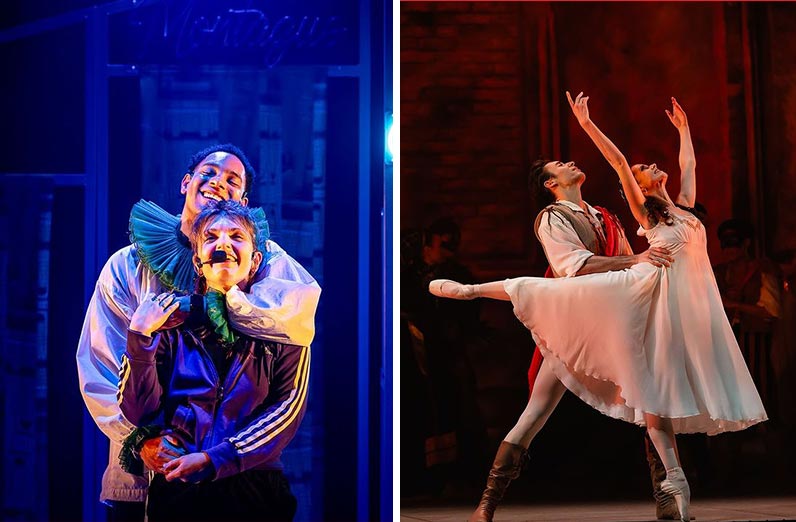
The Bard’s Tale(s)
What comes out of evolution for the arts, is a question you may want to ask yourself today. Because the passage of time does one of two things — makes you change with it, or destroys what is known to you. And this thought is perhaps what makes two distinct adaptations of Romeo and Juliet tied together in two different ways.
The first is a modern hip-hop adaptation of Shakespeare’s masterpiece. Set in Merton, it excels in depicting romance and rival gangs’ grudges. The production is dynamic, benefiting from your prior knowledge of the tragedy. The adaptation also cleverly incorporates modern slang and technology, but some changes reduce the role of fate and the impact of miscommunication. Like at one point, you see our eponymous characters blush beautifully, but the iconic balcony is replaced by a FaceTime chat. It’s 2024 after all. Think of it like Hamilton, but make it British.
The second is Northern Ballet’s Romeo and Juliet, which has been revived after sets were destroyed by floods. Devised in 1991, the production features lyrical pas de deux for the lovers and hard-edged formations for the Capulets. The ballet captures the emotional intensity of the play’s key moments, with particular praise for Aaron Kok’s portrayal of Mercutio. The production also benefits from Prokofiev’s famous score, played live.
Beyond the obvious reason that the two are adaptations of the same source material, these productions also show resilience and the evolution that comes with it. One does so by changing the form to reach more people, while the other does it by rising from the ashes. Either way, it’s a classic.
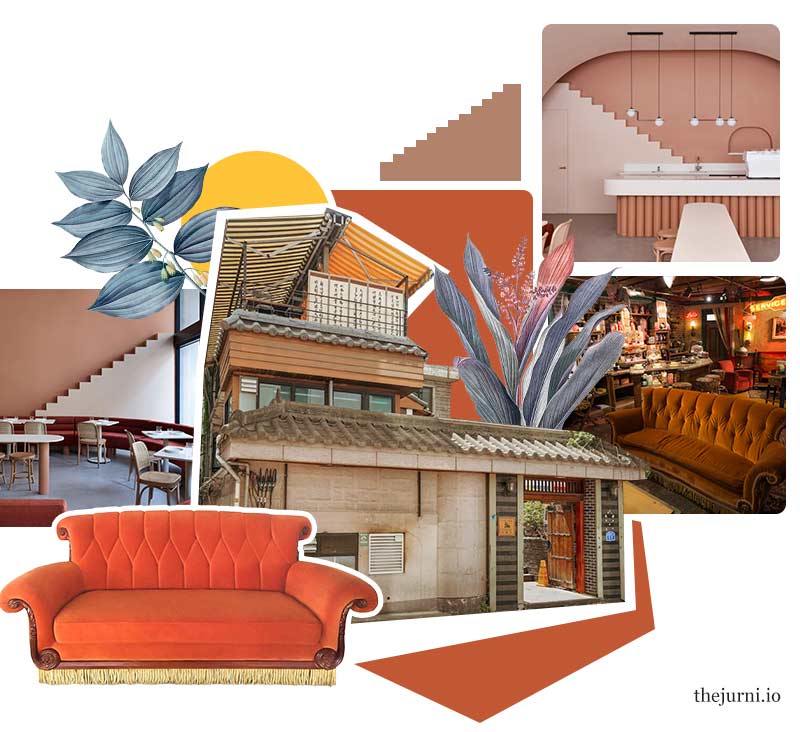
Cafe Conundrum
Have you noticed a strange sense of familiarity when stepping into different coffee shops? This isn’t a coincidence or a figment of your imagination. In today’s digital age, algorithms shape our experiences, and this phenomenon extends offline too. To foster familiarity and comfort in an increasingly interconnected world, many cafes adopt similar aesthetic and menu choices. This aligns them with a border, more expectations based on a shared aesthetic.
All beans and big windows
Cafe culture came to the fore in the ‘90s. This was partly because of the popularity of FRIENDS and Seinfeld. The cafe became the place in the 80s and the 90s to chat, catch up, and even work.But initially, coffee shops entranced us with their variety in terms of design and their different coffee preparations.
Around the same time, the internet was rapidly on the path of evolution. This led to a common global space. What followed was an expectation driven by popular culture regarding coffee shops. These expectations included large windows for natural light, angular spaces, and wooden countertops among other staples.
With all this, coffee shops surrendered. This is a bit like the expectations people have from their favourite fast food joints. There is comfort in the familiar and for coffee shops, which are often spaces for comfort for you, it is paramount. Think about exploring a new place and culture, but finding the familiar Starbucks there. Not only does this help you find comfort in the known, it can also help you eat and drink what is tried and tested.
Little tweaks
But some cafes are innovating their own unique designs almost as a move against this homogenisation. And a few seem to be reaping rewards. What’s interesting is that most of these innovative coffee shops are concentrated in Asia. For example, Fritz Coffee Company from Seoul has blended elements of Korean and Western design to good effect. Like one of their cafes is built around a hanok, a traditional Korean house, and inspires calm, much like one would expect from a cafe. Another example is The Budapest Cafe from Chengdu in China, which has designed its interiors like a Wes Anderson film to evoke whimsy and joy. Have you seen cafes like this around too?
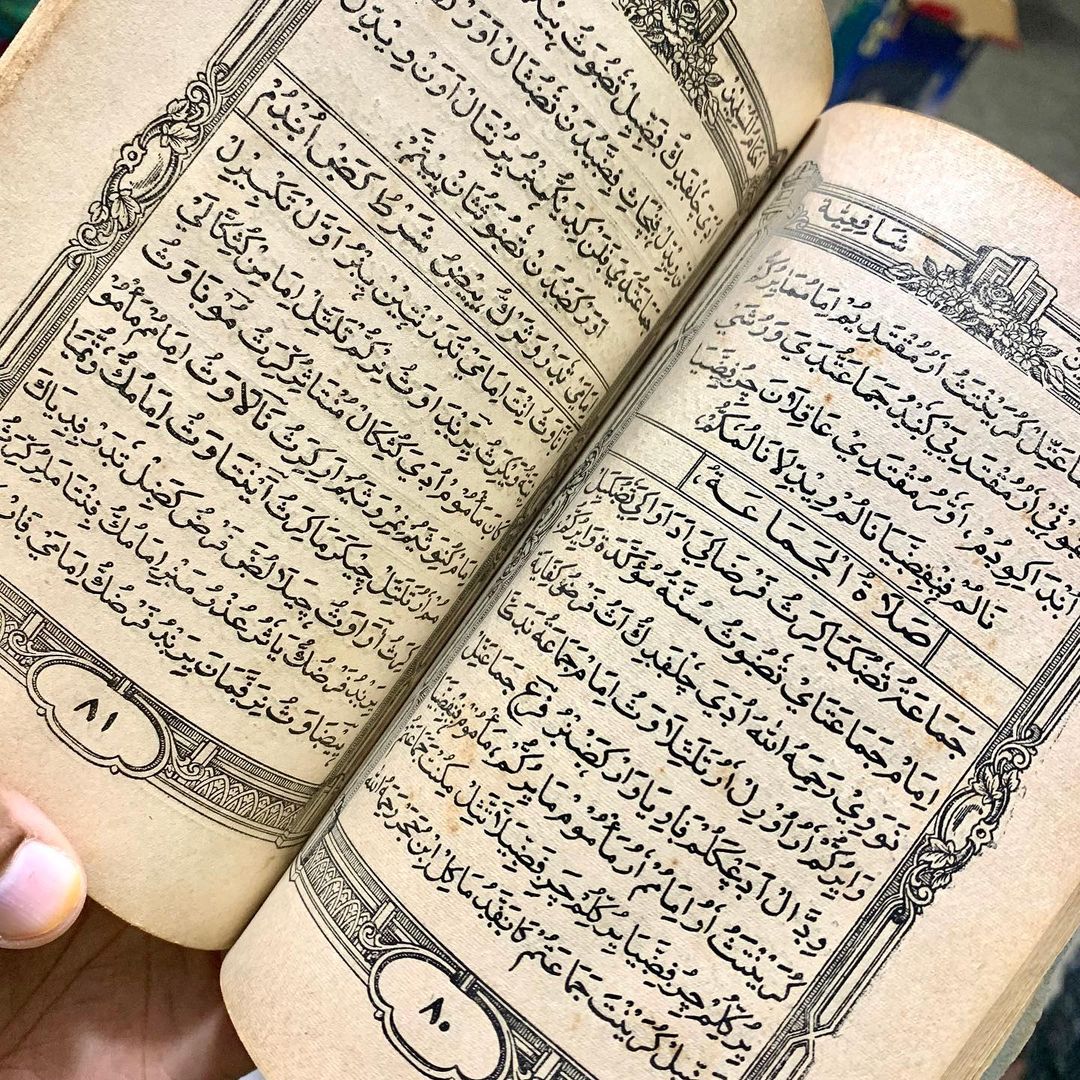
The Language of the Seas
Languages getting mixed to create new dialects and vernaculars is a common occurrence. This is especially true for India. You must have experienced it yourself while moving to a new place and subsequently acquiring a new vocabulary. When this happens over centuries, new languages are created. And one such language is slowly being rescued from the ravages of the past.
Arabic Tamil, also known as Arwi, came into existence in the 8th century. It was the maritime trade between the Middle East and Coastal India that propelled its inception. However, it was truly in the 15th and 16th century that the language started thriving. It developed a rich literary tradition, which allowed it to exist in a creative form even centuries later.
Arwi borrows elements from both Arabic and Tamil, but with a few important changes. It primarily used a slight variant of the Arabic script, which contains fewer letters than Tamil. This tiny change made it more accessible to traders and merchants. It quickly gained currency among the local populace as well, gradually falling out of circulation with the arrival of Europeans in the 18th century.
But being a language that was lingua franca for such a long time, there is a treasure trove of literary texts that are being rescued in an effort to preserve Arwi. So far, close to 2,000 texts in Arwi have been identified. There are also a multitude of oral narratives still in existence on top of that.
Looks like Arwi is finally finding its place in history and in the present all that once. Have you heard of other languages going through this reinvention?
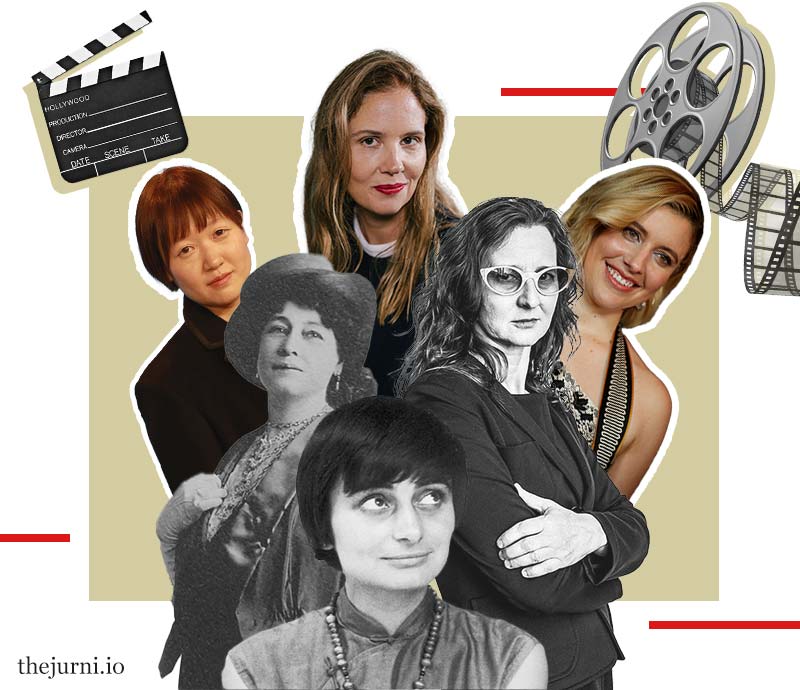
Three Women
Did you know that the Best Picture Oscars this year marks a historic milestone? There are three films directed by women nominated for the award, the first time in the history of the show. But beyond the fact that many female-directed films are being recognized, this significant shift may mean another thing. Does this representation highlight the increasing recognition and impact of women in filmmaking? You’ll know in about three minutes.
Prior to this, just four Academy Awards have had more than one film by a woman director as nominees – including Lone Scherfig’s An Education and Chloé Zhao’s Nomadland. This time, Justine Triet’s Anatomy of a Fall, Greta Gerwig’s Barbie, and Celine Song’s Past Lives have all made the cut. So, this Women’s Day, let’s take a moment to applaud those directors whose work shows us just why we must celebrate them.
Alice Guy-Blaché
Have you heard of the mother of narrative filmmaking? It’s none other than Guy-Blaché. She was better-known for her early works like The Cabbage Fairy (1896). She also contributed greatly to the art of filmmaking. She did this in the 1890s! When women’s involvement in the field was uncommon, to say the least. Oh, and did we mention she also started her own film studio, Solax, making her the first woman to do so?
Agnès Varda
And then there is Agnès Varda. Have you heard of this self-educated Belgian director? She started with La Pointe Courte (1955), in which she casually merges fiction and documentary. To top that up, she was also a catalyst in the French New Wave. In the span of her lifetime, she made 40 films, many of which you can still watch.
Lucrecia Martel
Martel first burst onto the scene with her debut feature film, La Ciénaga in 2001. She has been recognized for lending a new and vital voice to Argentine cinema. Hailed as a true visionary, Martel continued to push boundaries with her subsequent films, including La Mujer Sin Cabeza (2008) and Zama (2017). Though her work was critically acclaimed then, it’s still relevant in this day and age.
As we settle in this weekend to watch who takes the trophy this year, maybe it's a good time to reflect on how far we have come. When you see a story that comes from different people, it can give you a sense of belonging, in a strange way. These stories hold the power to help you heal, be seen, and even try something new. And when that happens, it’s almost magic. So, which of these directors’ filmographies will you be exploring first?

A Song of Fans
Books having a considerable following and prestige often end up inspiring activities beyond fan fiction. ‘Filk music’ has been influenced by gathering fans during science fiction and fantasy conventions, and consists of fans sitting in a bardic circle to sing songs celebrating characters or events from their favourite books.
‘Filk’ music (originating as a typo of ‘folk music’), as well as wrock (wizard rock inspired by Harry Potter) and trock (rock inspired by Doctor Who), come under the category of novelty music. Due to their specificity, filk songs can sometimes be comedic as well. But the influence of science fiction and fantasy literature on music does not end there. -
The current toast of Hollywood, Dune, has affected music beyond just ‘Dunecore’, and is influencing artists even today. With its coterie of sand worms and spice-fuelled revolutions, the book is fertile ground for creating new music. Bands like Iron Maiden, Toto, Sleep, and several others have found inspiration in the complex worldbuilding of the series. Fatboy Slim’s Weapon of Choice somewhat twists the rebellious nature of Frank Herbert’s creation, transforming it into a dance floor anthem. Iron Maiden’s To Tame A Land was initially titled Dune, but was changed since the 1984 adaptation was released at around the same time.
Similarly, J.R.R. Tolkien’s Middle Earth and the tales set in that world have captivated many rock bands in the past. In fact, legends like Robert Plant and Jimmy Page have written four songs that explicitly draw inspiration from TLOR. The serious tone of these books, which often end up reflecting upon real world concerns and historical issues, make them suitable narratives for basing songs on that are just as serious, even if they reference fictional events.
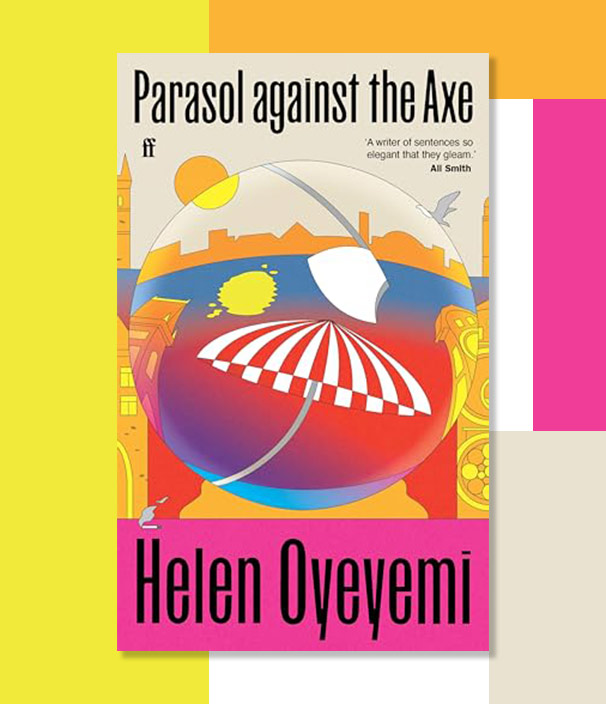
Narrative (and the) Self
How would a story about stories go? One that explores what we recollect and why? You may not have to guess that Helen Oyeyemi’s latest, Parasol Against the Axe, does just that. In this captivating novel, Oyeyemi once again proves herself as a literary pied piper, leading readers into a world where reality blurs with fantasy.
At the heart of the story is Hero Tojosoa, who finds herself swept into a series of bewildering events during a bachelorette weekend in Prague. But this is no ordinary trip — Prague takes on a life of its own, morphing into different shapes and narratives that challenge Hero’s perception of reality.
Central to the narrative is the mysterious book Paradoxical Undressing, which Hero stumbles upon. As she delves into its pages, she’s drawn into a web of stories set in various periods throughout Prague’s rich history, each one more mesmerising than the last.
But while the plot is this transfixing, it’s the narrative that perhaps takes the cake. There are stories within the story, each worthy of being explored and devoured. They are, as the Guardian says, “...All, by the way, compelling; worthy of novels in themselves.”
Through Oyeyemi’s exquisite prose and inventive storytelling, you can’t help but be taken on a journey that explores themes of love, identity, and the power of narrative itself. It’s almost as if the story explores the city, but the narrative explores people.

Embracing Pura Vida
There’s much to explore in the verdant landscapes of Costa Rica. The green scenery, the endless beaches, and much more. But behind all that is a phrase that encapsulates the essence of its culture: Pura Vida. Translating to “pure life,” it is more than just a saying — it’s a way of life, an embodiment of gratitude, and an expression of optimism.
In the bustling streets of San José or the tranquil shores of its pristine beaches, one cannot escape the ubiquitous presence of Pura Vida. From colourful hand-painted signs to warm greetings from locals, it permeates every facet of Costa Rican society.
But that’s not all. The term perhaps comes from a Mexican film of the same name from the 1950s. Over time, it evolved into a symbol of resilience and joy. It is believed that this life force is what helps Costa Ricans maintain an unwavering commitment to embracing life’s simple pleasures and finding beauty in every moment, despite all odds.
For travellers, Pura Vida provides more than just a linguistic curiosity — it’s an invitation to immerse oneself in a culture defined by its connection to nature, its warmth, and its unwavering positivity. From the misty peaks of Chirripó to the vibrant biodiversity of its rainforests, Costa Rica beckons you to embrace the Pura Vida lifestyle and discover the pure joy of living no matter where in the world you are.
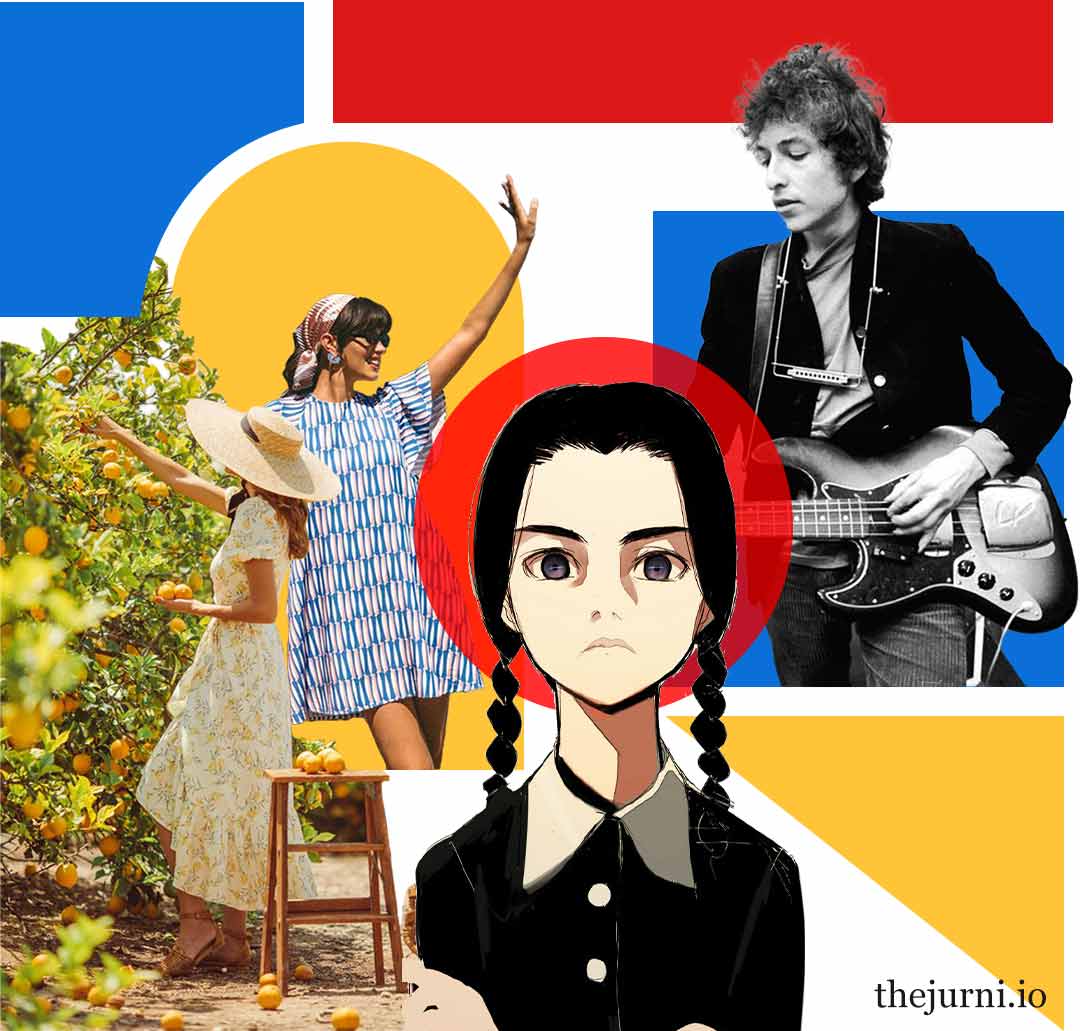
Subletting Culture
“I would dream. I focused all my attention on going to America. The subculture, James Dean, the rock n’ roll, the beat writers.” – David Bowie
When was the last time you heard of a freshly brewed subculture with multiple dimensions? And we mean offline. Let’s put it this way – if you were to describe goth, say a decade back, what all would it entail? A certain genre of music, cinema, clothing, maybe a certain worldview. To put it into context, a real life Wednesday Addams (minus her love for shovels, of course).
But in the age of Reels and trends, Wednesday Addams might have been reduced to a certain “aesthetic”. Thanks to social media, today a trend and a subculture can almost be used interchangeably. In this case, the ghoul girl trend – which was being touted as a revival of goth – is a good example.
Why is this happening?
Cultivating culture requires both time and attention. The two, however, have become luxuries. The onus of making a subculture prosper usually rests on the youth. But with less room for shared experiences, they are becoming less defined, short-spanned, and at times, a little absurd. China’s Màimén subculture is a prime example of this phenomenon.
There is a flipside
Social media has managed to blur out the demarcations of different categories, leading to this homogenisation, which can provide both relief and flexibility. You can be a goth girl today and a tomato girl tomorrow (you’ll have to keep the season in mind, though). Essentially, a subculture isn’t about an identity anymore, for better or worse.
As far as subcultures that preceded the digital revolution are concerned, a shift in how they will continue to be perceived is inevitable. So don’t be surprised if Gen Alpha comes up with a completely different concept of Indie rock.

Cotta Factory
Ever tried turning your Bournvita-infused milk into ice cream as a kid to make it taste even better? Although masala chai needs no such improvisions, you can easily turn its refrigerated version into a scrummy Italian dessert. All you need to do is add three basic ingredients and slide it into your freezer. Before we come to it, any guesses on the dessert? Well, it’s masala chai panna cotta!
While we’ve had many versions of the panna cotta – which translates into cooked cream in Italian – this one is as desi as it comes and is also perhaps the easiest to concoct. You just need to steep tea and spices in some milk before bringing it to a boil. Then add cream, vanilla, and sugar before adding gelatin and voila, this creamy dish hailing from Piedmont is moulded into one of the most beloved flavours of the aam janta.
In case you’re someone who’ll pick coffee over tea in a battle of beverages without batting an eyelid, you can also replace the masala chai with a strong cup of coffee of your choice. Either way, refrigerate the concoction for at least four hours once ready. You can top it off with a pistachio toffee and some rose petals before serving this little delight.
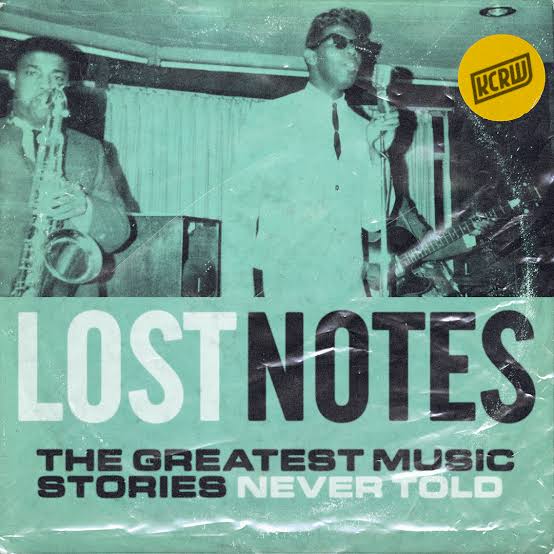
The Notebook
What if we told you there is a way to access the greatest music stories never truly told? Like how before Soundcloud and Bandcamp, there was Deirdre O'Donoghue and “SNAP”, an LA DJ and radio show that served as a waypoint for underground music, artists, and its fans, and played a major role in shaping the sound of independent and D.I.Y. culture today. Or the lesser-known origins of the forgotten ‘60s soul gem Tainted Love.
Aptly named Lost Notes, the award-winning podcast by KCRW (available on both Spotify and Apple) provides an anthology of some of the greatest music stories by weaving together the lesser known facts that led to their creation. It also provides audio documentaries and biographical insights into the work of artists like John Lennon, Darby Crash and Ian Curtis.
While the first three seasons of the podcast were hosted and curated by renowned poet and critic Hanif Abdurraqib, and authors Jessica Hopper, and Solomon Georgio, the latest season will have new co-hosts and curators – musician Novena Carmel and DJ and sociology professor Michael Barnes.
So if you’re in the mood to do some musical digging this weekend, you know exactly where to dig.

Houston, Do you Copy?
As millennials, it’s common for us to see live action versions of our beloved childhood classics. In the past decade, we have seen either remakes of Disney blockbusters like Lion King and Aladdin, or popular anime series like Death Note and One Piece. The latest in this line is a live-action remake of Avatar: The Last Airbender, which isn’t even the first time such a remake has happened for the series. But why do we have so many of them?
A mixed bag
Live action remakes across the board have had varying degrees of success. While Aladdin, Maleficent, Pete’s Dragon, and One Piece have enjoyed a good reception among critics and audiences alike, others haven’t fared so well.
One of the reasons behind their success can be attributed to the fact that these live action remakes introduce our childhood faves to a new generation. Parents who grew up with these classics find familiarity with it and want their children to experience the same. Think: Delhi’s Backstreet Boys’ concert. And it isn’t as if any expenses are spared. Live action remakes are among the most expensive films around.
On the other side, the main criticism for these movies ends up being that they aren’t doing anything new with the source material. Modern remakes are unchanged for the most part and end up being little more than CGI-fests.
So why make them?
Like parents, the studios engaging in the creation of remakes find it to be a familiar and safe bet when it comes to box office returns. With the loss of revenue that came with the shift to OTT from BluRays or DVDs, film studios seem to have become averse to taking risks. A live action remake of a beloved animated feature ensures multiple viewings thanks to the target demographic and provides predictable box office numbers.
Rather than increasing revenue, studios have turned towards minimising losses. Taking a punt on a new voice or story is a riskier proposition than remaking something that already has an audience. But there is hope that this will change, owing to audiences yearning for newer stories and challenging films over comfort viewing. 2023 was perhaps the year this shift started with Barbie and Oppenheimer taking the world by storm. What do you think?
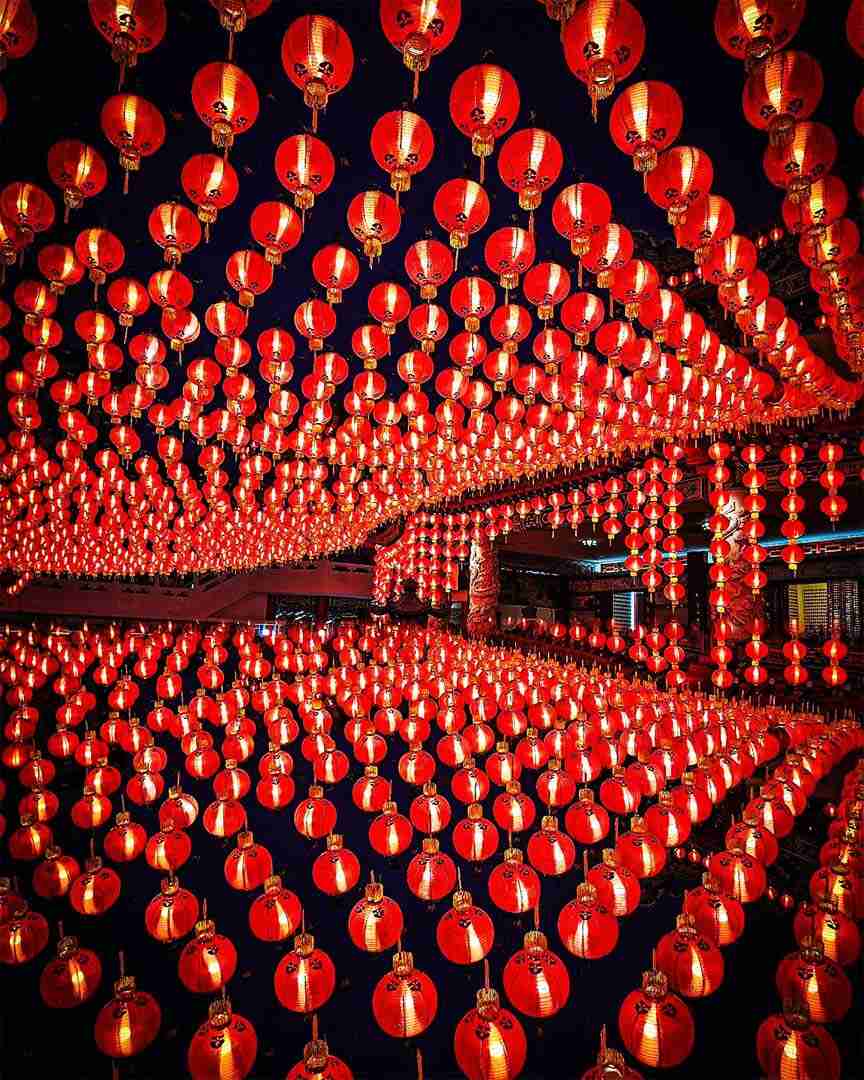
Din Shangyuan Da
The Lantern Festival, also known as the Shangyuan Festival, was celebrated across many parts of Asia on Saturday. The 2000-year old festival, which is believed to have originated in China during the Han Dynasty, started as a celebration of the celestial maiden Taiyi – believed to be the one in control of human destiny. On this day, the streets of China, South Korea, and Vietnam are lit up with lanterns of various shapes and sizes. People partake in the lion dance and gorge on several rounds of tangyuan. These delicious sweet rice dumplings are an integral part of the Shangyuan Festival, which is held to mark the end of the Lunar New Year celebrations.

Mind Your Language
Language is more than just a means of communication. It is shaped by time, culture, as well as place. Languages constitute an essential part of what it means to be human and how people evolve through time. But while language holds all this knowledge within it, it is also dependent upon speakers to stay in currency. According to the UN, nearly one indigenous language goes extinct every two weeks. With the increasing use of common languages to communicate and work, many languages and dialects are on a slippery slope. But there’s hope.
Digital delights
While AI has taken a monumental leap when it comes to helping in writing, drafting, and creating content, much of it is in widely used languages like English or Hindi. One of the reasons behind this is that many languages, even those with a considerable footprint, are digitally disadvantaged. We don’t, therefore, have much data available on the language or its specificities online.
The beauty of machine learning and AI is that all an algorithm or program needs is a sample size. Going off that, it is able to reconstruct and expand upon the data as well as the linguistic rules specific to the language. Through the help of apps and organisations like Karya in Maharashtra and Te Hiku Media in Argentina, in conjunction with large data companies like Microsoft and Google, these datasets are created. This is done by providing apps to locals, which help them record their voices and intonations, thereby increasing the sample size.
More than just talk
The preservation of endangered languages isn’t limited to speech itself. A language also has a panoply of expressions that are at risk alongside the language as well. This is reflected in Cantonese. Once widely spoken, it has lost considerable ground to Mandarin in the last few decades. This has put cultural expressions connected with Cantonese, such as Cantonese Opera, as well as theatre, at risk.
Using AI tools and even a robot, Cantonese opera is experiencing a revival, with an increasing number of younger people interested in the art and the language.

Beautiful in White
A nice, rich colour is something a lot of cultures put an emphasis on when it comes to food, but does that mean colourless food cannot be tasty? Well, those who’ve had a taste of Transalpine cuisine would have to disagree. Dominant in south-eastern France and north-western Italy, this cuisine (which had been slowly disappearing) is being put back on the table once again and the spread is definitely more than exciting.
Made mostly with flour, potatoes, leeks, turnips, dairy products, and legumes, Transalpine cuisine, also known as Cucina bianca (white cuisine), is the staple food of the pastoral transalpine communities in the valleys of Liguria, Piedmont, and the Alpes-Maritimes.
"I realised that absolutely all the cuisine that is practised here has a link with milk, sheep, shepherds, and transhumance. So, I decided to bring that back to the kitchen and showcase,” Patrick Teisseire, a chef from La Brigue, who is trying to bring back transalpine cuisine to the fore, told the BBC.
Of these, sugelli – made with soft flour dough, cut into small, thick discs, and served with a cheese sauce, or with pesto – is the most popular one. Another famous one is Caccia là – a sort of lasagna, topped with seasonal veggies, and cheeses, and tantiflusa, a tart filled with potatoes, leeks, and squash. So which one would you like to try?

Let's Hear it for New York
Did you know that the solitary organisation in the world focused on the linguistic diversity of cities – the Endangered Language Alliance – is in New York? Of all the concrete jungles, blinding lights, broadways, and billboards that the city is made of, language is the rich cream that sits atop this cultural melting pot. It carries within itself a panoply of languages, almost capturing the whole world in its five boroughs.
But like many other languages around the world, few of them are likely to die out over the coming decades. Interestingly, some residents have come up with fascinating ways to carry forward their linguistic legacies. Among them, one is writing children’s books in Wakhi, a Pamiri language, while another endeavours to preserve a six-story building that houses more than 100 of the world’s 700 speakers of the Tibetan-Burman language, Seke.
So who are these people? How did their native languages travel all the way to New York? What significance do they hold in terms of the city’s history? Linguist and author Ross Perlin provides answers to all this and more through the stories of six New Yorkers hailing from distinct cultures in his book Language City.
The book isn’t as much about the grief over a dying part of culture as it is a story of hope. Hope for these unique languages to survive in this fast-changing world. So let’s hear it for New Yorkers and their efforts to preserve the sacred knowledge of languages.

(Not) On the Fringe
A unique festival of diversity and creativity, the Adelaide Fringe is deeply rooted in more than 60 years of history. Founded by independent artists who wanted to break away from traditional cultural gatekeeping, the festival has grown into Australia’s biggest arts event, attracting scores of artists and hordes of audiences from around the world.
The Adelaide Fringe in Australia is distinguished by its ethos of openness, inviting anyone with a creative spark to participate without curation restrictions. This commitment to inclusion and innovation has shaped the festival’s identity, providing a platform for emerging talent to shine alongside established artists.
This year the festival is on from 16 February to 17 March, and has a variety of exciting performances to look out for. Take, for example, Faulty Towers: The Dining Experience. An immersive theatrical dinner experience, it is based on the BBC hit where you can eat, drink, talk, and move around throughout the show all while time travelling to the ’70s. Or, perhaps Karate Man – A Live-Action Video Game, which is exactly what it sounds like — a choose your own adventure live-action video game comedy.
This along with music, theatre, art, food, and so much more makes The Adelaide Fringe worth a spot in your cultural calendar.

Who’s the Fairest of Them All?
With the BAFTAs wrapping up last Sunday, the award season is drawing to an end with the culmination of the Oscars next month. And while there have been considerable discussions about the nominees, there’s an equal amount of attention given to productions that were snubbed. While the absence of Greta Gerwig and Margot Robbie for their work on Barbie has been a hot topic, what were the other entries that couldn’t make the cut? And why?
All about timing
While filled with great performances and direction, some films suffer simply because of the timing of their release. Spring releases, with the exception of Everything Everywhere All At Once, struggle to remain in public memory till the end of the year. On the other hand, December releases are often overlooked as they arrive a bit too late to the conversation.
Such was the case with Ben Affleck’s corporate biopic Air, as well as Michael Mann’s Ferrari. Both films featured brilliant performances from its female leads in Viola Davis and Penelope Cruz respectively, not to mention the directors’ pedigrees. But due to their distance from public imagination, neither of the films bagged a single nomination.
A similar fate was met by A24’s Iron Claw. Released in December last year many believed that it gor subbed perhaps because the jurors’ minds were made on most of the categories already by then. So, despite acclaim, it did not create a buzz in the awards circuit.
Too much of a good thing
The release of Ridley Scott’s Napoleon last year convinced several people that it would be in awards contention. After all, period biopics are usually more favoured by awards juries than other genres. Despite respectable performances from both Joaquin Phoenix and Vanessa Kirby, the film could garner just three nominations in technical categories. But perhaps the most astounding part is how several films that may have otherwise been nominated, fell by the wayside this year. Like Flora and Son, for example, which is similar in scope to 2022 Best Picture CODA.

‘Seal’ of Approval
Innovative technologies and synthetic materials that can be reused and promote carbon neutrality to combat climate change are a common sight these days. However, what if we told you that an old-world tradition is gaining traction in Portugal to do the same?
Cork has been a much used material throughout history, often used to seal vessels and to provide insulation. More recently, though, it has started replacing plastic not just when it comes to storing, but also designing furniture. The most interesting part, however, is how it is being done.
A long-used tradition from a few thousand years ago is helping the cause. Instead of cutting the tree itself to obtain cork, cork oaks are carefully stripped of their barks using axes, in a way that lets the tree remain unharmed. Moreover, this process occurs solely during the summer months, following which the tree is left untouched for a period of nine years for its bark to regrow.
Portugal is the world’s largest producer of cork, accounting for over half the globe’s yield. The millennia-old process ensures an extremely durable material that can be reused. What’s more is that cork is actually carbon negative, which means that it can store more carbon than is required to create cork products. Fascinating, isn’t it?

My Funny Valentine
Striking a pact with someone to serve as your companion for a day, strategically sidestepping awkward inquiries at weddings or familial gatherings, is hardly a novel notion. We have had many such references in pop culture with movies like The Proposal, Holidate, and The Perfect Date. Interestingly, Indians seem to be capitalising on this need. With Valentine’s Day recently gone by, some people opted to rent a date.
So what does renting a date mean?
The concept of renting a date started to become popular in Japan a few years ago after the Manga series Rent-A-Girlfriend gained a cult following. Add to that a rising number of ‘social loners’ and voila, it was the perfect recipe for the idea to flourish. The rules of renting a date are simple: you pay a person a certain amount to go out with you – be it to a movie, a match, a Friday night out, or a wedding. You bid adieu after the date and that is where the journey ends.
The concept went viral in India last year, after a Gurugram-based techie started running a social media campaign called ‘Boyfriend on Rent’ ahead of Valentine’s Day where he described himself as a ‘boyfriend’ who likes “deep conversations” and “intimate dates”. The demand has also led to the creation of companies who cater solely to this need, like Mumbai-based ‘The Intimacy Curator’, which has a team of professionals that provide dating surrogates – people to go on mock dates with before going out for a real date.
But why not opt for an online date?
Dating apps might be the most convenient way to find a date, but there’s always a fear of rejection. People avoid being ghosted, catfished, or bread-crumbed. So instead, they prefer to pay people to treat them the way they want to be treated on a date. Some also like the fact that they come with no strings attached and without expectations that might lead to disappointment.
While it's too soon to gauge whether the concept will go a long way in the country, it is fascinating to see how it might impact online dating sites, and if it does at all.
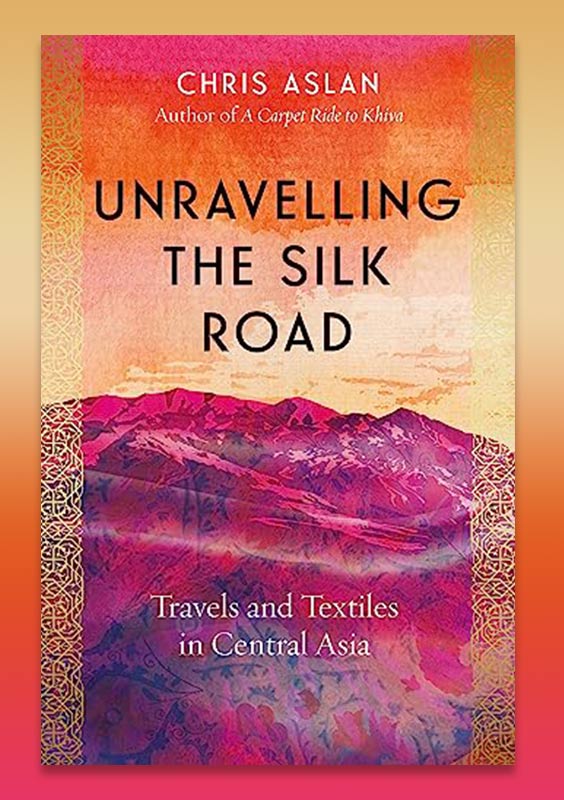
Woven Into History
What happens when you take Central Asia’s vibrant history and mix it with the intricate textile trade routes? Chris Aslan’s captivating Unravelling the Silk Road: Travels and Textiles in Central Asia. Aslan, a seasoned traveller himself and a textile aficionado, delves deep into the tales of the silk, wool, and cotton roads that criss crossed this ancient land.
From the illustrious Silk Road, bridging the East and West through trade, to the Wool Road, crucial for nomadic survival in the harsh winters, and the Cotton Road, marred by ecological consequences, Aslan expertly unravels the rich tapestry of human experience woven into these paths.
Through meticulous research and personal anecdotes garnered from over fifteen years of immersion in the region, Aslan brings to life the stories of shimmering silks, resilient felts, and delicate cottons.
Moreover, Aslan's exploration goes beyond the historical significance, delving into the contemporary impact of these trade routes on the lives of Central Asian inhabitants, shedding light on how political and cultural shifts continue to shape their destinies.

A Fresh Voice
Audiobooks have been around us for years, even before they developed as a genre unto themselves. Our childhoods were full of story recitations and recorded narratives, which tended to grow less frequent once we grew up and picked up books. But thanks to recent developments and trends, the path has reversed itself, with adults increasingly picking up audiobooks as their primary way of consuming narratives.
Paper is past
We have come a long way from the odd Stephen Fry-narrated Harry Potter audiobook being heard by most due to the high-profile nature of the narrator and the book. Audio-based narratives are growing for a multitude of reasons, primary among them being those of reach and expense.
Another reason is the ease of production as well as distribution. Ebooks and audiobooks need to be produced just once, and copies of the same can easily be created at the click of a button. Physical books are more expensive to produce, and employ plenty of resources, one of which going awry could result in significant wastage.
Why not ebooks, then?
The answer is simple — with an increase in digital literacy and ease of using smart devices, senior citizens as well as those who struggle with reading can enjoy stories at their own pace. With the technological changes that allow one to slow the pace of narration or change the accent of the narrator, audiobooks are the rage.
Spotify decided to venture into the audiobook space towards the end of last year. This rang alarm bells for several authors and publishing platforms, who were afraid that the giant would eat into their market share and subscribers.
But what happened instead was that the audiobook space grew by nearly 30%, with several new subscribers taking the plunge with Spotify. This has been a boon for other publishers as well. It also shows that the audiobook space is not simply a niche segment and is set to grow even further. What do you think?
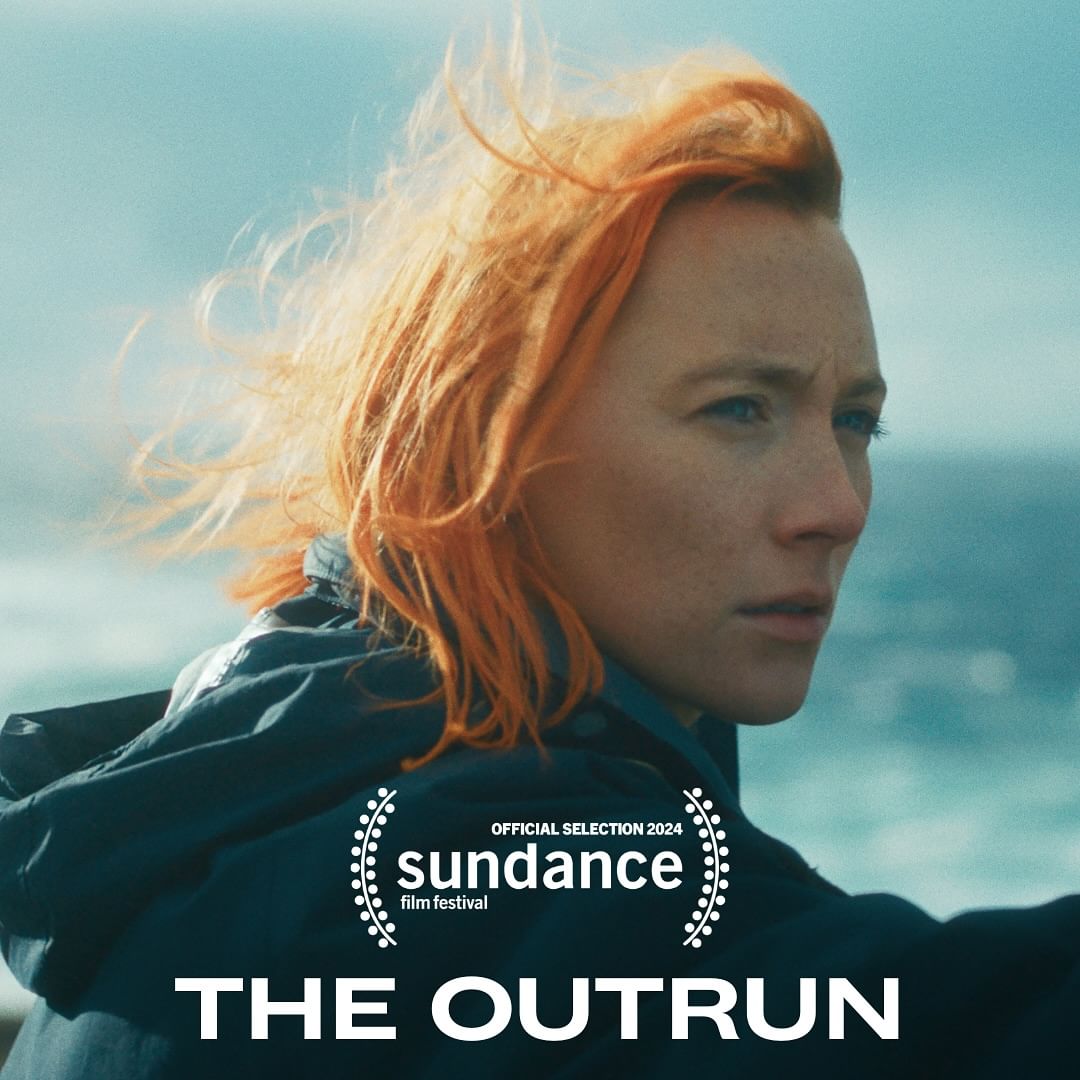
Cinema at its Best
Saoirse Ronan is one actor who rarely disappoints. From playing coming of age characters like Christine in Lady Bird and Joe in Little Women, to the more layered Charlotte in Ammonite, her repertoire far exceeds her age. The latest addition to it is the film The Outrun, which is being showcased at the 74th edition of the ongoing Berlin Film Festival.
While The Outrun tells the story of a woman who attempts to come to terms with her troubled past after living life on the edge, another film with an equally interesting storyline set to premier at the festival is Levan Akin’s film Crossing, where an unlikely duo goes on a road trip to Istanbul to find a long-lost child. With a rich tapestry of characters, the film is expected to have a trailblazing quality similar to Akin’s renowned creation And Then We Danced.
The festival also has seven Indian films lined up among its pick from world cinema, including Siddartha Jatla’s In the Belly of a Tiger which delves into the resilience of human spirit amidst the harsh realities of power dynamics and PS Vinothraj’s The Adamant Girl, which explores the subject of love and caste politics. While some of these films are available on Mubi, you can also live stream the festival.
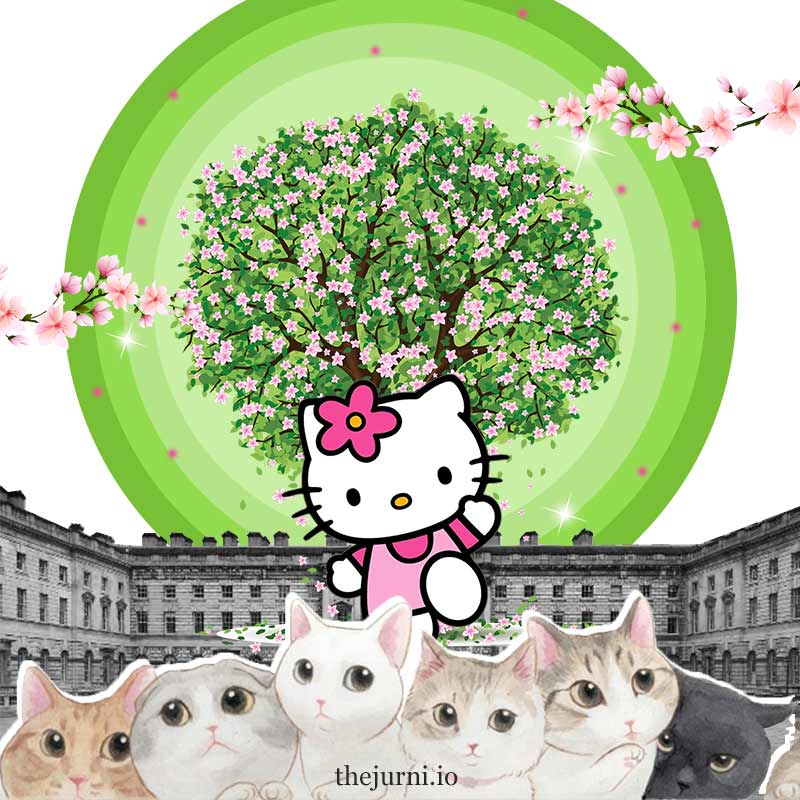
What a Cutie!
Chances are that you have just scrolled through your social media feed, or are about to after reading this, and hitting upon a post that you would describe as ‘cute’, or ‘wholesome’. It could be a cat, or any of the multitude of cartoons, or babies that throng the Internet. While we take this ‘cuteness overload’ for granted these days and do not think twice before liking and/or scrolling past it, this hasn’t always been the case. So where did this culture of cuteness emerge from?
The 50-year-old kitten
A lot of what defines cuteness online is based around the Japanese concept of kawaii, which is a slight departure from the Western conception of the same, featuring bright colours and rainbow sparkles along with small, innocent looking creations.
The flagbearer of kawaii (and the precursor to all cat memes) is Hello Kitty. Known all over the world, this mascot of all things cute celebrates its 50th anniversary in 2024. To commemorate that, an exhibition simply titled Cute, is being held in Somerset House in London till April 14. The exhibition, more than just celebrating Hello Kitty in its various avatars, also interrogates how cuteness functions, and how it has changed from being an evolutionary feature to a cultural one.
Utilising AI, as well as blow up images, Cute examines the various dimensions of cuteness, as well as how it has been used historically to colour our perspectives, and even change our view of things by seeing them in a harmless light.
Too much of a good thing?
The ubiquitousness of cuteness is not relegated to simply social media posts and viral videos. It is used extensively to sell products by positioning them alongside a child or a cartoon to portray innocence. On top of that, cuteness and its associated features are used as an escape for several people through games, movies, or comic books.
The saturation of cuteness in our current world, alongside the normalisation of AI prompts and airbrushed images, creates a skewed view of reality. Perhaps cuteness, like everything else, works best in moderation.
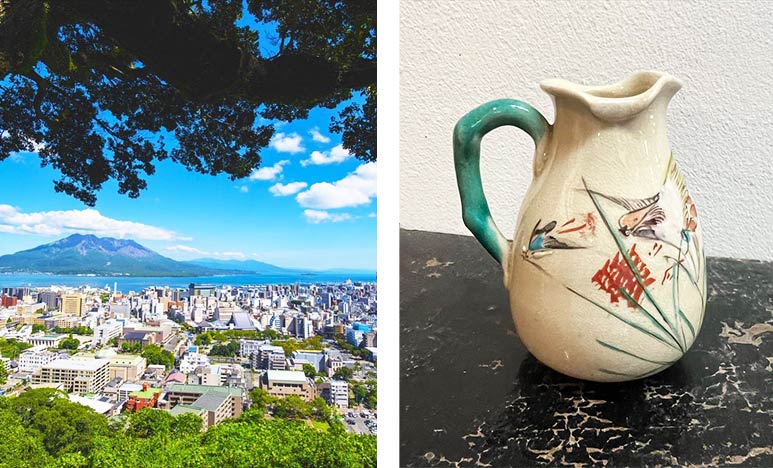
The Pottery Prefecture
On the southern tip of Japan, at the end of the island of Kyushu, lies a region that is equal parts myth and magical. Kagoshima prefecture is shaped like a dragon, at the mouth of which lies Sakurajima, one of the most active volcanoes in the country.
In the vicinity of the Korean Peninsula, along with the uniqueness of the local clay, thanks to Sakurajima, Kagoshima Prefecture has become the place where the traditions of Korea and Japan meet to create some of the greatest pottery the world has known.
Known as Satsuma pottery, it became famous throughout the world as being synonymous with Japan, to the extent that the import of this pottery was one of the reasons the Meiji restoration could happen.
Made with a signature multi-colour enamel overglaze and floral patterns, as well as an emphasis on negative space, Satsuma pottery combined the best of Japanese art and native Korean pottery techniques. However, in the latter half of the 19th century, mass produced Satsuma pottery was saturated with layers of painting to pander to western tastes.
In the past few decades, the potters of Kagoshima have gone back to their roots and revived their familial traditions, some of which go back to five hundred years, to return Satsuma pottery to its pedestal.

Master of Ceremonies
The awards season is well and truly underway, leading right up to its culmination with the Oscars. And easing the audience into the show and its celebration of entertainment is the host and their monologue. A much commented about aspect of every award show, it has had a bit more limelight this year than others.
Joke’s on you
The introductory monologue sets the tone for the night, with the host recapping the most memorable moments of the previous year and giving them a jovial spin. Depending on the comic, the monologue can either be heartfelt or caustic. Everyone can recount Ricky Gervais’ risqué comedy routine at the Golden Globes, which was accepted well by audiences, but not so much by the celebrities present.
While Gervais got away with it on the strength of his comedic timing as well as an apparent apathy towards the crowd reaction, the same couldn’t be said for Jo Koy, this year’s Golden Globes host. Koy was stuck with the tone he wanted to take, sometimes delivering odd takes on Barbie, and at other times sticking to simple one liners that elicited a few laughs.
Making it look easy
The Grammy Awards were held last week, with Trevor Noah hosting them yet again. As a seasoned host, much like Billy Crystal (who’s considered the gold standard for awards hosting), Noah was aware of which notes to hit and what jokes to crack.
His quips were received with loud laughs, and his control enabled it to be one of the best Grammy ceremonies in recent memory. It created the perfect atmosphere for Tracy Chapman’s epic rendition of Fast Car with Luke Combs, as well as Joni Mitchell’s soulful debut.
However, it must be noted that Noah’s gig was not an exercise in people pleasing - he took aim and was cracking jokes at the expense of TikTok and Spotify’s policies of copyright and profit sharing. Similarly, John Mulaney’s recent Governor’s Award monologue went viral where he cracked jokes on Disney and Marvel.
The takeaway is clearly that punching up works a lot better than punching down, especially when it comes to the art and not the artist. This gamut of hosts has us intrigued for Jimmy Kimmel’s monologue at the Oscars.

A Place Known As Home
Can you tell a house from a home? What does a home look or feel like to you? Does it wear a neutral palette with a dash of greenery in different corners? Or is it filled with antiques and ethnic carpets? Maybe a record player too?
The way we turn a house into a home says a lot about our personality. But sometimes, we need someone to update us with the latest trends and find ways to bring out our personalities through our homes while keeping things relevant. Which is where the podcast The Great Indoors comes in handy.
Featuring TV presenter and designer Sophie Robinson alongside best-selling author and journalist Kate Watson-Smyth, the podcast is full of wisdom, but without sacrificing banter. Together, they explore, dissect, and navigate the most current trends and pressing topics in the realm of home design and lifestyle.
Not just that, they take us through the cultural significance of objects from around the world that we use for decor – from Moroccan tiles to the age-old Indian khaat – and help us pick one that speaks to us the most. Filled with some great insights and lots of laughs, The Great Indoors is a celebration of all things interiors. After all, home is where the heart is.

Sugar, Spice, and Everything Rice
Are you someone who doesn’t feel truly satisfied with a meal unless there is a portion of rice? Whether it is in the guise of the comforting khichdi or the regal pulao, the tangy tomato rice or our beloved biryani, the love for rice is not just prevalent throughout the country but spread across different cultures around the world.
And to obtain a better understanding of how this staple grain has managed to tie the world together over the centuries, this weekend, we are bringing you a book by renowned Chef JJ Johnson who recently started a rice revolution in Harlem.
The Simple Art of Rice celebrates the cultural significance and culinary versatility of rice across the globe. From Asia to the Americas, the book presents a wide range of recipes influenced by diverse flavours. Partnering with acclaimed author Danica Novgorodoff, Chef JJ Johnson shares insights with his readers to master rice cooking techniques.
Chef Johnson gives us a taste of savoury classics like Liberian jollof and sweet treats such as the Filipino champorado solely through his delectable descriptions. The book also helps you discover fool-proof methods for cooking rice perfectly, complemented by intriguing discussions on the cultural and historical importance of this staple grain. So are you ready to rice it up?

The Future Calls
Earlier last week, the Apple Vision Pro was released after over a year of teasers and promotions. Priced at a whopping INR 3,00,000, the headset debuted to polarising reviews thanks to its novelty as well as its price. However, despite the growing pains, the device has to be seen in a different light of what it can be, not what it already is.
Augmented spaces?
So what makes the Vision Pro and its competitors, like Ray Ban and Meta’s smart glasses, as well as the previously ill-fated Google Glass, different from a smartwatch or other gizmos? Well, for one, while smartwatches come under wearables and peripheral devices that work in conjunction with a main device, Vision Pro and its headset peers are the main device. Essentially, they aim to enhance peripherals and smart devices into one seamless experience.
This seamlessness is achieved through what has been termed ‘spatial computing’. Somewhat similar to Augmented Reality (AR), spatial computing aims to reimagine how virtual and real spaces are interacted with. Instead of talking through video conferencing, imagine an entire room where all participants are present in their avatars (avatars which, by the way, have started looking uncannily realistic), and gesturing and interacting in a way that is all too similar to contemporary boardrooms?
The culture of conversation
More than just liberating our hands, spatial computing changes the way we approach communication. In fact, it is also likely to change the meaning of what it means to hang out, or even just explore places. Imagine roaming around and an icon pops up in your peripheral vision to tell you that an acquaintance is nearby, without you having to feed in any info.
The real and the virtual are blending, and this is the future of not just communication, but perhaps movement itself. Is it a future you’re looking forward to?

It’s in the Air
Finding enough protein has become a major focus for us in the past few years. We’ve been soaking our bodies with dollops of protein powder and shakes to meet our ‘quota’ of nutrients. This is especially true for vegetarians who, at times, may struggle to gain enough of it.
While experiments with alternative proteins, like those made from algae and mycelia have shown promise, what if we tell you there is a way to not just obtain that daily dose of protein in the most natural way possible, but also to enjoy it in your favourite dishes? Yeah, and that includes ice-cream! Introducing solein – a yellow powder that is ‘made out of thin air’ which is being touted as the future of food.
Protein made from air?
Yes, as bizarre as it sounds, solein – launched last year in Singapore by Solar Foods – is a vegan protein powder created with solar power and can be used to make pasta, breads, ice cream (we just can’t talk enough about it), and even chocolates. Just recently, Finland-based company Fazer became the first to launch a limited edition chocolate bar with solein. That’s not all. Businesses are also coming up with ways to make containers edible, and therefore sustainable.
Eating coffee cups
In an effort to provide an alternative to polyethylene-lined paper cups, Australia-based company Good-Edi has come up with edible coffee cups made by blending rye flour, coconut oil, wheat bran, oat bran, salt, and water. The founders claim that the cups taste like “an unsweetened wheat biscuit”. The company also provides the option of cups coated in chocolate, and will soon roll out more edible containers with a wider variety of flavours.
With such advancements in food technology, we wonder what the future of food might be. Would we be using Star Trek-like food synthesisers? Or able to create dehydrated pizza in minutes like in Back to the Future? While time will be the best judge of that, the introduction of solein and edible containers have definitely set the standards high.

Musical Majesty
Music’s grandest night is almost upon us. The 2024 Grammy Awards will be held on Sunday in Los Angeles, and it is already set to be a record-breaking night. Featuring a mix of established veteran artists and some bold new faces, the 66th edition of the awards will also signal the direction the music industry is likely to take.
A legacy-defining night
Starting off with the most prominent awards, the Record of the Year and the Album of the Year, the nominations have already made history with a female dominated list. In fact, in the two categories, along with the Song of the Year, Jon Batiste is the sole male musician present.
Several critics and columnists have already declared Taylor Swift as the victor, with her song Anti-Hero set to trump Olivia Rodrigo’s Vampire and SZA’s Kill Bill for the Record of the Year. While SZA seems like the top choice for Album of the Year, Swift being awarded would make her the first artist to have four Best Album wins.
New versus classic
While Phoebe Bridgers is by no means a new face on the Grammy stage, her rock supergroup, Boygenius, is the favourite to take the Best Rock Performance award over the likes of established names of the genre like Arctic Monkeys, Foo Fighters, and Metallica. The presence of Black Pumas, a comparatively newer band on the Rock scene, also signals a shift in the genre and its composition.
The Best Metal Performance category, though, has bucked the trend of the year, with Spiritbox being the sole newer face among veterans like Metallica, Disturbed, Slipknot, and Ghost.
South Asia Represent
There is significant South Asian representation in the global categories, with Arooj Aftab’s Shadow Forces duking it out with Abundance in Millets by Falu and Gaurav Shah, featuring the voice of PM Modi for the award of Best Global Music Performance.
In the Best Global Music Album category, Zakir Hussain and Shankar Mahadevan’s supergroup, Shakti, has been nominated for This Moment, the group’s first album in over 45 years, and is likely to be feted with the award on this monumental night.

Ishtu-pendous
Winter is the perfect time to indulge in something warm, creamy, and delicious. And while India has always had a plethora of options to choose from in the category – from the comforting kadhi and sarson ka saag to prawn malai curry – there is a dish from Kerala that deserves an equal amount of attention.
Kerala ishtu (we love the name too!) is our own version of the British stew created to suit local palates, and can be made with or without meat. Although it is also believed to have been inspired by the Portuguese dish caldeirada, the dish best showcases the unique blend of local and foreign influences in the state’s cuisine.
Made with coconut milk, vegetables (and/or meat), and mild spices, Kerala ishtu is quick to make and light on the stomach. The one-pot meal is also an excellent remedy for a cold and can be made with whatever vegetables you have available in your fridge (best to not use brinjal, though).
You can either serve it with some rice, a slice of sourdough toast, or sans anything (in case you are keeping a strict watch on those carbs). If the idea of this flavourful and aromatic dish has already lured you in, we have an interesting recipe to try.

Something Borrowed
What is borrowed and yet original? Brooklyn Public Library's podcast named... Borrowed. The podcast distinguishes itself by deviating from conventional formats. Unlike literary programmes centred on interviews or reviews, this one has a unique approach, weaving narratives sourced directly from its local community. These captivating stories encompass topics like the historical struggle for Black women's suffrage, the prolific literary output of Brooklyn, intriguing tales from within the library itself, and addressing the perennial question of "What do librarians do all day?"
The genesis of Brooklyn Public Library's podcast initiative lies in the belief that "Brooklyn has so many stories to tell, and a lot of them start at the library." Hosted by librarian Adwoa Adusei and co-host Krissa Corbett Cavouras, this is perhaps why Borrowed has a universal appeal that extends to listeners who haven’t ever set foot in Brooklyn, further enhanced by the inclusion of a reading list with each episode.
Beyond that, Borrowed emerges as a distinctive voice, shedding light on how libraries have become custodians of borough stories that might otherwise fade into obscurity. The podcast's focal point remains the library, providing insights into the people and systems operating within these venerable institutions.
An illustrative example is the episode where they recount the Green Point residents' resistance against an environmental threat. While the podcast may initially seem library-centric, it skillfully navigates through broader themes, telling stories about us all.

Stressing on Calm
In this age of the general hustle of cities, the importance of having relaxed domestic spaces cannot be overstated. And thanks to several shows that demonstrate the necessity of having decluttered spaces, people have begun incorporating these ideas in their abodes. However, decluttering and removing/adding objects is one measure that ‘sparks joy’. What if you could simply design an entire house that not just fills you with warmth but exudes it?
Metropolis mayhem
Sarajevo, the capital of Bosnia and Herzegovina, has often been labelled as the ‘most stressed’ city on earth. This is primarily due to historical and political issues that have plagued the region for decades.
Into this scene of hurriedness and unease, Project V Architecture, started by Vernes Causevic, attempts to restore a sense of calm by making use of pre-existing Soviet housing and reconfiguring its interiors. The firm places its belief on spaces that echo the natural environment and use resources indigenous to the region. For example, it has created coffee tables made from local clay, and has replaced interior walls with terracotta curtains, lessening the opaqueness of the space and imparting onto it a sense of breathability.
Embracing, not isolating
Designers and architects all over India are also employing similar ideas that connect a residence to the earth and carry a sense of identity. This is a stark departure from before, where a prioritisation of spaces that cancelled noise and gave a feeling of isolation and sparseness was prevalent. Think: minimalism.
For instance, Mumbai-based Studio KNest has been reinventing the standard 2bhk city residence by introducing wall mounted furniture to maintain spaciousness, while also providing ample storage space to prevent cluttering. In addition, there are French windows that allow maximum amount of natural light and ventilation. One of the balconies has been converted into an airy study, while the soft pastel colours of the walls and furniture provide a contemporary take on 20th century Mumbai.
Interior design for cities is undergoing a sea of change and it makes us wonder what the next innovation that connects our domestic spaces with the culture of our cities will be.

House Rules
Picture this: you walk into a dinner party. The warm mood lighting and the smell of great food fill the air. You can hear a cacophony of sounds — sizzles from the kitchen, a general hum of conversation, but more than anything, you can hear live music. This is not the newest restaurant in town. This is actually someone’s house.
The alive and living room
In this ever-evolving world, innovative initiatives are shaping the way we spend our time indoors. All thanks to people like Bengaluru-based Anurag Arora, a full-time designer with a passion for cooking. Arora’s latest and most luxurious creation is “The Apartment,” a seven-course fine dining affair hosted at a communal table in his living room. Featuring a “borderless” menu, attendees indulge in dishes crafted with a fusion of Asian and Italian influences.
The House Party by Savar also does something similar as it gives you a private chef to help you turn your kitchen into a scene from The Bear (minus all the yelling, of course).
But there’s more
While nothing beats a good meal, good music certainly enhances it. And along with these curated food experiences, many are having ‘living room concerts’ across Delhi, Mumbai, and Bengaluru.
Akanksha Grover, an independent artist, is weaving a nostalgic tapestry of Hindustani classical music through the revival of baithaks. These intimate sit-down sessions bring back the charm of yesteryears, fostering a deep connection between the artist and a limited audience.
The baithak concept, a blend of participatory music and cultural exchanges, resonates with audiences across various cities. And then there are interactive recitals like Unshared Childhoods, that bring strangers together in a warm environment. Guests read out unsent letters, sharing personal stories of love, grief, and joy to live music, creating a unique and immersive experience.
With all these innovative changes, one has to ponder why is this happening in India’s metropolitan cities today? Is it because we’re over the post-pandemic-revenge-going-out phase? Or just because of an overall increase in the demand for deeper, more meaningful connections offline? Perhaps it is a combination of several reasons, but either way, this is making staying in the new going out.

When Magic got Real in India
When we wonder what the inner worlds of literature greats like Gabriel García Márquez, Salman Rushdie, or Haruki Murakami might be like, it leaves us as perplexed as inspired. The authors of magic realism appear to have found a pathway to another dimension with its own mysteries and secrets.
So what about its traces in Indian literature? Well, the literary mind in India has been more prone to the magical than we think, and a substantial chunk of it comes from Bengali literature. Like Trailokyanath Mukhopadhyay, who weaved some of the most fascinating tales during the early 19th century.
One of his better known stories, Lullu, features the marriage of two ghosts, one of which makes a plea to boycott foreign textiles for the sake of economic independence (whoever thought ghosts weren’t opinionated?). His creation Kankabati is a Bengali retelling of Lewis Carroll’s Alice in Wonderland. However, Mukhopadhyay was often “played…down as a children’s writer” and has rarely gotten the recognition he has deserved.
But a lot of his works were published posthumously, some of which have been compiled by author and journalist Sucheta Dasgupta in her latest book Trailokyanath Mukhopadhyay: Tales of Early Magic Realism in Bengali. It also includes folktales by Mukhopadhyay inspired by his extensive travels to Iran (Rostam and Bhanumati) and Japan (The Legend of Raikou). So if you want a weekend retreat without moving an inch, how about a trip to these wonderlands?
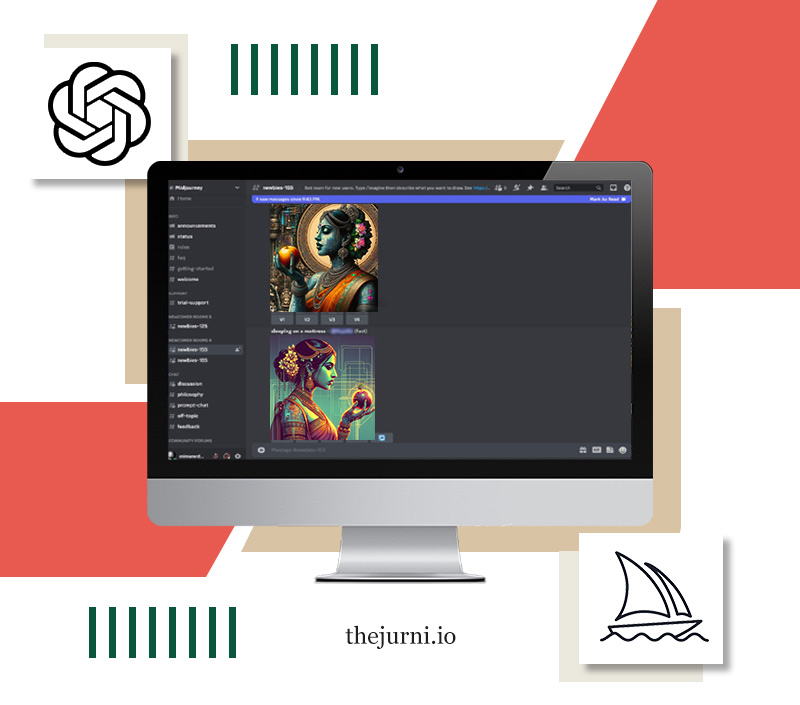
Artifice or Artistic?
Imagine what it would be like if Raja Ravi Varma could have used AI tools to come up with his iconic paintings. And no, we are not talking about those Midjourney prompts that keep filling up our social media feeds. An artist with the capability of Ravi Varma, perhaps would have had quite an innovative way of looking at AI. Which leads us to the question: how much AI in art is really permissible?
Does it have to be so less?
Japan’s prestigious literary award, the Akutagawa Prize, was recently awarded to a writer who admitted that about 5% of her work was generated by ChatGPT. Rie Kudan’s novel The Tokyo Tower of Sympathy, follows an architect tasked with creating a modern prison, with one of the major themes of the story being AI.
The judges, however, recognise the importance of the fact that Kudan still exercised creative control over the text, even the parts conceived by ChatGPT. The use of AI in this case, is in service of the narrative, as well as its deployment as a tool rather than as a ‘second writer’.
A famous precedent
The arguments around using AI as an instrument of creativity echo another famous technological development. Photography, when it first came into existence, was derided as the ‘death of the fine arts’ or on a more positive note, a tool that could capture a scene to make it easier for the artist to paint. Decades later, and photography was declared an art in itself.
How are Indian artists using it?
While it is a bit too late for Ravi Varma and M.F. Hussain, a plethora of young Indian artists are using AI to push the boundaries of not just art, but the very definitions of identity and history.
Artists like Hridaye A. Nagpal, Varun Gupta, and Sahid SK are utilising Midjourney and other AI tools to create retro-futuristic and surreal art which doesn’t simply combine two disparate art styles, but is constantly tweaked by the artists in service of their concepts. Far from making lazy artists or taking over an artist’s work, it looks like AI might just be the new colour palette.
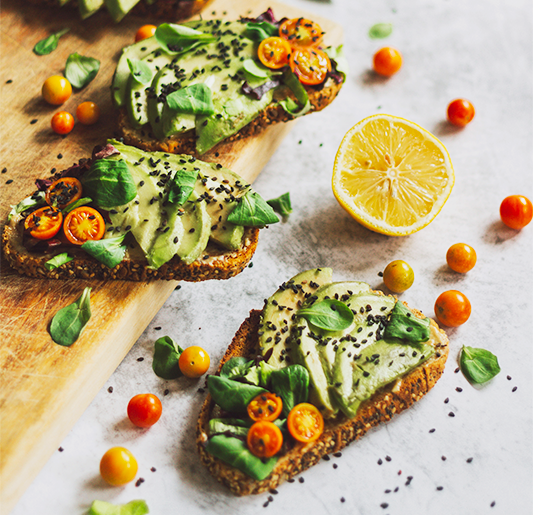
Not Loafing Around
Perhaps nothing can match some classic chai-toast for a quick but hearty snack on these cold winter days. But, if you're in the mood to up the ante, we may have just the thing. With the variety of breads easily available in India today and our lockdown adoration for baking in tow, do you know what breads to pair with what toppings, fillings, and dips?
Let’s start with the basics, as with most food combinations we need to make sure it has a perfect balance. Take sourdough and avocado, for example. The tanginess of sourdough complements the creamy flavours of ripe avocado, creating a simple yet tasty pairing. The fact that the crunchy bread goes well with the creamy avocado just adds another layer.
If you’re in the mood for a healthier option, though, you may want to give the good old multigrain a shot with some hummus. Multigrain bread, which is nutty, complements the savoury hummus. Oh, and you can also add veggies for some extra texture.
Lastly, you can’t go wrong with some desi white bread and potatoes. Think: the classic Bombay sandwich. The spice of the potatoes pairs well with the underrated flavour of the bread, making the whole dish a symphony. Which pairing will you be trying first? Hit reply and tell us!

Of Mice and Memes
Internet culture is an odd creature. We have been living in it for over twenty years, but ever so often, it reminds us how arbitrary and whimsical it can be. And for our part, we become such willing participants and end up elevating something as mundane as a concrete hole to a cult icon.
Wait…what?
A pavement in Chicago bears the impression of what appears to be a rat (more likely a squirrel that fell, but that’s another story). Dubbed the ‘Chicago Rat Hole’, it became viral when an artist and comic on X (previously Twitter) shared the image. Since then, it has seen its fair share of ‘pilgrims’ visiting the site to pay their respects.
But the story doesn’t end there. About a week into the Internet craze, someone attempted to cover up the hole with plaster overnight. This caused furore among the residents, who diligently dug out the plaster to restore the landmark to its ‘prior glory’.
It’s the new cheese
The Chicago Rat Hole is not the first instance of an unintended public landmark, thanks to the Internet. Delhi’s Google Maps has its own cluster of landmarks that people need to be wary of, than to pay obeisance to. These are the ‘Yaha Police Wale Hote Hain’ landmarks, which refer to ‘unseen’ police checkpoints. Over the past couple of years, Delhiites have run with this description, creating a thorough crowdsourced survey of the city’s police presence online.
But why?
Creating internet famous monuments is the new way of urban expression, separate from the intentions of urban planning. It is made in the spaces between what authorities create and how residents live it. Any imperfections or oddities become cherished, and the democratic nature of the netscape brings out the city’s ethos.
Chicago is rather infamous for its rat-infestation issues. It is no wonder that denizens have taken to the ‘rat hole’, which echoes the city’s condition in a tongue-in-cheek manner. The same could be said for Delhi and its relationship with the thullas. What unintended urban monument is there in your city? Reply to this email to share your thoughts.

Tales from Trees
In the scenic hills of Nucsoara, Romania, a transformative journey unfolds within the “Forest of Immortal Stories.” This endeavour intertwines environmental preservation, cultural heritage, and community engagement. Triggered by personal hardships, Nucsoara’s healing sojourn through its ancient beech trees has become the catalyst for a unique conservation initiative.
Facing threats from logging and encroaching bark beetles, the government and a non-profit, Foundation Conservation Carpathia, devised a plan to safeguard these venerable trees. The Forest of Immortal Stories invites global adoption of beech trees, each adorned with a QR code containing personalised narratives. Like tree number 22 is a gift from a friend to another. Scan the code and you see a snippet by Faiz Ahmed Faiz that says, “Give some tree the gift of green again. Let one bird sing.” Adopters, including figures like fencing champion Ana-Maria Branza, weave tales that transcend borders and languages.
Notably, the adoption fee doesn’t simply fund conservation efforts but also enhances eco-tourism infrastructure, fostering sustainable community revenue. The forest, adorned with digital tales, symbolises the enduring harmony between nature’s beauty and the stories that inexplicably tie us all together with an invisible thread. And those, perhaps, are two of the most important things of all.

Sundancing in the Spotlight
The much acclaimed Sundance Film Festival begins today. While this year too, the festival is set to showcase some of the most thought-provoking and stunning creations, things are a little extra special this time as it celebrates its 40th anniversary. In honour of that, there is a showcase of a special category – the top Sundance film of all time – which already has a winner. It’s Damien Chazelle’s 2014 debut feature Whiplash.
What’s in store?
Well, the list of films to be premiered this year includes Richa Chadha and Ali Fazal’s debut production Girls Will Be Girls – the sole Indian film selected for Sundance ‘24 from the World Cinema dramatic feature category. Directed by Shuchi Talati, it follows the story of a 16-year-old girl whose rebellious journey intertwines with her mother’s unfulfilled coming-of-age experiences, with actors Preeti Panigrahi and Kesav Binoy Kiron playing the lead characters.
Also watch out for…
Anirban Dutta and Anupama Srinivasan directed Nocturnes, which has been selected from the World Cinema Documentary Competition. The storyline is an interesting mix of abstract philosophy and nature where moths convey a mysterious message amidst the lush Eastern Himalayan forests that lie between India and Bhutan. And two inquisitive observers unravel the secrets whispered by these enigmatic creatures.
What are we excited for?
Love Me starring the ever-evolving (and beautifully so) Kristen Stewart and the captivating Steven Yeun (of Minari and Beef). So far, the one thing we know is that it has been described as a “post-apocalyptic romance, in which a buoy and a satellite meet online and fall in love after the end of human civilization.” But this is enough for us to be intrigued. It is already one of the most-awaited films at Sundance this year.
Besides that, Exhibiting Forgiveness by Titus Kaphar, explores family, generational healing, and the power of forgiveness. It tells the story of a Black artist (André Holland) attempting to overcome the trauma of his past through painting. The feature came out last year and has been making waves ever since. Oh, and did we mention that the films premiering at the festival can also be watched online?
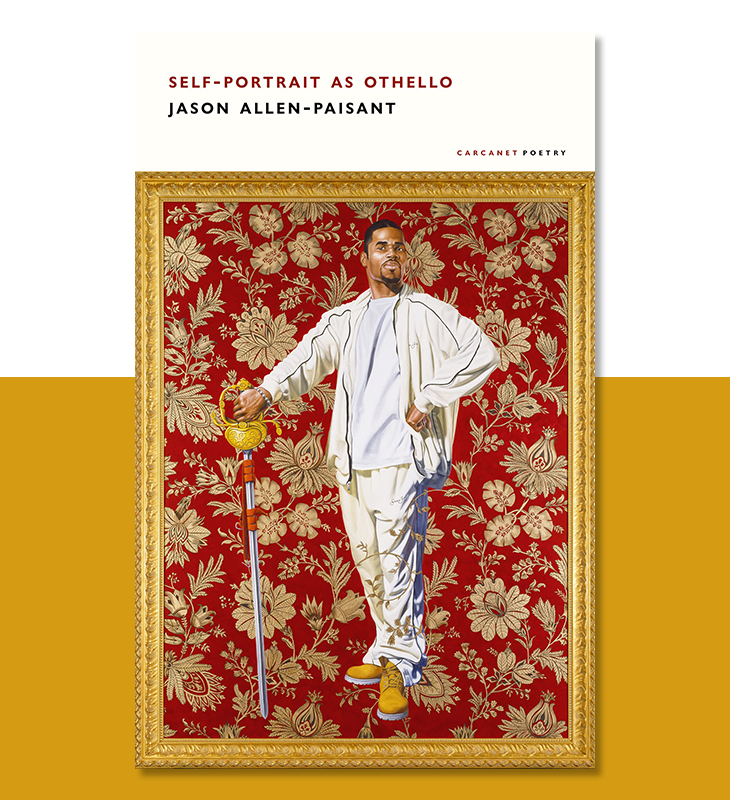
Part of an Eliot Club
“Poetry is truth dwelling in beauty.” — Robert Gilfillan
Perhaps there is no better reminder of this than Jamaican poet Jason Allen-Paisant, who has achieved a significant milestone by recently being awarded the esteemed TS Eliot prize for his work, Self-Portrait as Othello. Allen-Paisant’s anthology has the style and integrity that may go down as one of the greats, years from now. This is the second book of poetry by the 43-year-old poet, who teaches critical theory and creative writing at the University of Manchester.
Hailing from a small rural district in Jamaica, Allen-Paisant’s journey, from a background without electricity and running water to receiving a prestigious literary prize, reflects his remarkable achievement. His acclaimed poetry uses Shakespeare’s Othello to delve into the experiences of a Black male immigrant exploring themes of masculinity, vulnerability, and race.
The Guardian, perhaps, sums it best when it says. “Enriched by historical research, Self-Portrait As Othello celebrates representation, understanding and speech as acts of glorious resistance.”
So, if you’re in the mood for some poetry, unique narratives, or just a good read, you know what you can pick up this weekend.

Saving Punk Rock
Green Day’s latest album might be one of their best. The celebrated trio of Billie Joe Armstrong, Mike Dirnt, and Tre Cool return to their peak with Saviors, their 14th studio album. Following on from their last release, 2020’s Father of All…, which was criticised across the board by long-time fans, it seems this time, their latest album is a throwback to previous classics.
Kicking off the album with The American Dream Is Killing Me, one is transported to the Green Day most millennials grew up with. The lyrics are dripping with angst, and the new songs are bound to turn into youth anthems, the same way American Idiot did all those years ago.
Look Ma, No Brains could just as easily belong on any of Green Day’s previous great albums. Which is the case with most of the tracks. Almost twenty years since their magnum opus, American Idiot, and a full thirty years after Dookie, Green Day’s music continues to be a celebration of defiance and of standing up for what one believes in.
Diehard fans are very likely to simply adore this album, while their lyrics and vigour are bound to attract them to newer, younger listeners, the same way many of us were all those years ago. Give it a listen.
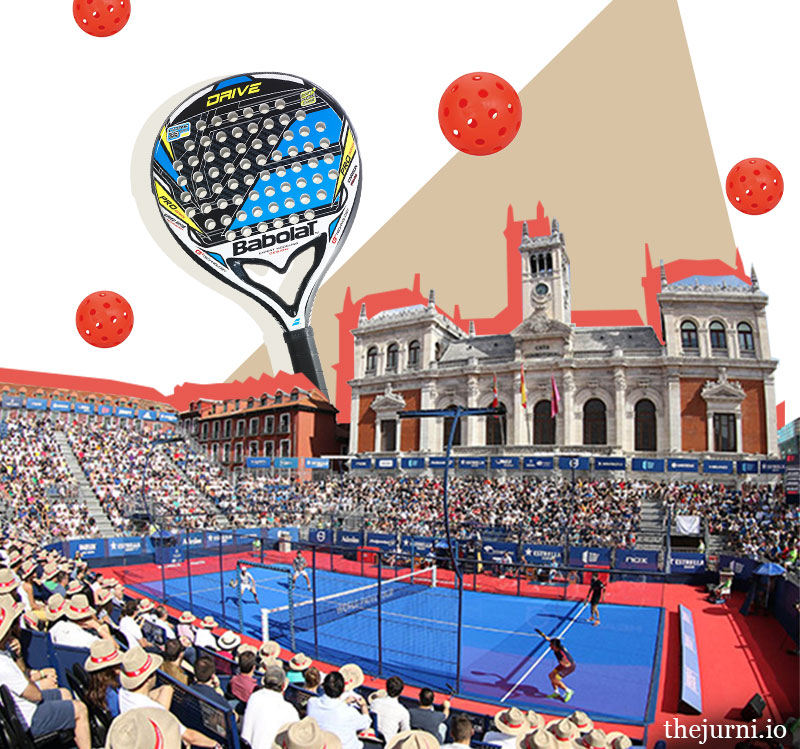
Mixed Pickles
For those of us who are uncomfortable with gyms or workout studios, there’s always the option of picking up a sport to stick to that fitness resolution. Among the panoply of sports is one that has grown at an unexpected pace for the past few years all over the world and it is quickly taking over Indian courts too.
What is this sport?
Pickleball is very close to the kind of tennis that was initially played in the Tudor courts of Henry VIII. While lawn tennis, badminton, and squash went on to have racquets developed for their game, pickleball opted for the paddle which is reminiscent of a table tennis racquet, albeit slightly larger and squarish.
A sport developed in the 1960s, pickleball has traditionally been more popular among senior populations in the west. This is primarily because unlike tennis, badminton, and squash, pickleball doesn’t require that much application of strength or endurance. While a game of it can certainly be exhausting, the perforated ball is easier to hit and the court dimensions are smaller in contrast to other sports.
Why is it taking off?
Due to the pandemic and its disruptions, families were limited to their immediate environments. The paucity of space and ease of picking up the game irrespective of age made pickleball the go-to game for families looking to engage in fun while also working out. Once the lockdowns ended, people took this interest to the outdoors.
In India, the sport has taken off thanks to the increasing number of people in the cities turning to sports, as well as the increasing influence of sports-based startups. Last month, The Winter Classic Pickleball Tournament was held in Delhi, and saw over 300 participants, an incredible number for a sport that is still in its nascent stages in India.
What’s next?
Pickleball, and its slightly posher cousin, padel, are slowly starting to replace golf and squash as sports of the elite. With the capacity to socialise and network through a game of pickleball while having a good workout, the sport is set to grow for years to come. By using simple equipment and its approachable nature, it could just become the new football.

Viennese Waltz
It would not be a surprise to note that a European city has been awarded the title of being the most liveable city in the world. It wouldn’t be much of news either if that city happened to be Vienna. But there’s a rather surprising reason behind its continued dominance, especially as other European cities slide down the rankings.
What list is this?
In a survey of over 173 cities from across the world, The Economist’s Global Liveability Index ranks cities on indicators such as urban planning, healthcare, and education. Vienna has comfortably been on top of these rankings for a few years.
But what is alarming about the 2023 list, which seems to be a trend that has carried into this year, is the sparse number of European cities on it. Cities such as Dublin, Madrid, Milan, and Berlin have always been permanent fixtures in these lists thanks to their storied history and infrastructure. But not anymore.
Why Vienna, then?
One major reason behind Vienna still topping the list is its housing. Council housing is a prominent feature of most European nations, with much of it having been constructed in the aftermath of World War II. However, where Vienna differs in its council estates from other countries is in its concept of Gemeindebauten, which roughly translates to “communal buildings”.
Unlike housing estates that are constructed keeping in mind a certain class homogeneity, which could give rise to disparate neighbourhoods, Vienna’s “social housing” favours a mixed neighbourhood in terms of class and age dynamics. This encourages socialising among different people and classes, and inculcates a sense of community.
A proactive city?
Vienna, as a city, owns nearly 200,000 houses within its limits. This causes the rents to remain stable, and as such, Viennese residents pay nearly 1/3rd the rent than their Dublin or London counterparts.
This has significantly helped the residents, as well as the city as a whole, tide over the cost-of-living crisis, as well as the pandemic disruption and its lingering effects. Other cities will have to up their game if they hope to match up to Vienna.

Arabian Knights
An artist from Saudi Arabia seems to be taking the world by storm, one beat at a time. More importantly, he is revolutionising the way the world perceives Saudi music. The first pop star from the country to be signed to a major record label in the US, Mishaal Tamer is playing an enormous role in the ongoing cultural renaissance in Saudi Arabia. And soon, he will be touring the world with the pop-rock band OneRepublic.
Tamer took to music at a very young age, when Western pop music was essentially banned in the country. His art gradually gained recognition after he began posting his songs online, around the time when Saudi Arabia was beginning to lift bans on movies and musical events.
The artist, who also records songs in English and Spanish besides Arabic, aims to introduce unique Saudi instruments at the global stage. “A lot of the songs that I have coming out feature instruments that you would never hear in Western music, like our oud, for example. There’s a song called Disco Cowboy, and it’s got an electric oud,” he told Variety.
We, for one, cannot wait to gain a broader understanding of Arabic instruments through Tamer’s creations. If you too are as excited as us, acquaint yourself with these essential tracks by him.
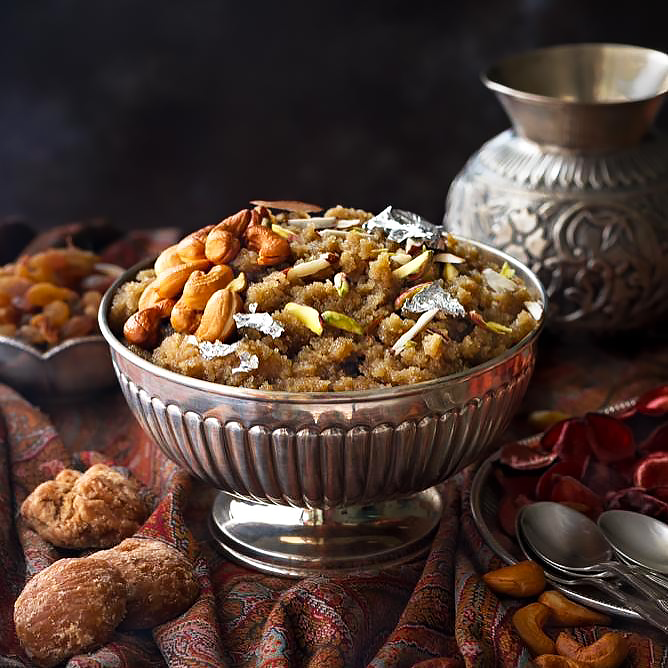
Lohri Prescription
It’s the Lohri and Makar Sankranti weekend, and for most of us, this means huddling with our loved ones in the warmth of bonfires, bonhomie, and bon appetit. It becomes even more pertinent when we are going through the harshest period of the winter all over the country. With that in mind, we have the perfect recipe to keep you bubbling with energy and your house cosy.
Hailing all the way from Amritsar, Gur ka halwa mixes some of North India’s favourite winter ingredients and turns it into something that is a dessert as well as a remedy against the cold. Except for the optional addition of some saffron, every other ingredient for this dish is readily available throughout the country. Mixing copious amounts of jaggery, ghee, flour, and milk, the simplicity of this dish is matched by its overflowing flavour and heat.
Begin by mixing the jaggery with water and heating it so that the jaggery dissolves. Keep this aside and mix sooji and ghee. Bring this mixture to boil and then add wheat flour, consistently stirring it. When completely mixed and liquified, add the jaggery water and keep stirring in the heat. After around twelve minutes, the halwa will solidify. Add garnish and voila! Your Lohri evening is sorted.

The Signs of our Time
The contemporary zeitgeist is an ever changing field when it comes to communication. Every year, new phrases are coined and come into circulation, while some older ones find their way out of the urban dictionary. Memes and emojis are a significant part of this ‘new’ and ‘evolving’ language. And thanks to their ubiquitousness, they have taken on a legal significance you might not have seen coming.
What do you mean?
Last year, a Canadian farmer was negotiating with a customer to sell flax. When the customer sent him the agreement on messages, the farmer responded with a ‘thumbs up’ emoji. When the flax shipment did not arrive on time, the purchaser took him to court for breach of contract. Surprisingly, the court commanded the farmer to pay USD 60,000 in damages to the customer, citing that the contract had been agreed to.
This isn’t the lone example. In the last year itself, there have been over 200 cases registered regarding emojis in communication. What’s more, these cases range from legal agreements to office mis-communication, and fraudulent financial advice. And this is set to increase with millennials and Gen Z making up a majority of the workforce, including senior roles.
Interpreting symbols
Since emojis do not constitute a language unto themselves, and as such are rather unregulated modes of communication, the margin for error when it comes to interpretation is rather high. A thumbs up could signify an agreement, or merely an acknowledgement of the message, which was the argument put forth by the Canadian farmer. And, to be fair, that does sound like a fair argument to make.
Standardised emojis?
With workplace communication moving increasingly towards platforms like Slack and Teams, the use of emojis for official communication is set to increase. Gone are the days of considering emojis as ‘too casual’ or ‘unprofessional’.
Does this mean that a standard manual will have to be put in place to interpret emojis in professional settings? What do you think? Reply to this email to share your thoughts!

To Fresh Beginnings
New years deserve a festive start. And as this is the first weekend of 2024, we thought we’d bring you a hearty dish from Lebanon that has traditionally been known to grace family tables at the start of the year, to ensure a happy and prosperous one. Think of it like the halva (just in this context) which is cooked to mark auspicious occasions. It’s kibbeh labaniyeh or Lebanese meatballs.
With its origins going far back to ancient Mesopotamia, kibbeh labaniyeh is considered to be the national dish of both Lebanon and Syria. Due to its ancient roots, it is one of those dishes trickling down into different versions as they move from one region to the other. Not just across cultures but families too, with each holding the door to a unique recipe passed on over generations.
In Lebanon, it is generally cooked in a thick mint yoghurt sauce and served with a Mediterranean salad. If the idea of meatballs with salad doesn’t excite you much, roomali rotis go equally well with kibbeh labaniyeh.
For those looking for a vegetarian version, we got our hands on a generational kibbeh recipe from Tripoli made with potato, bulgur wheat, walnuts, onion and golden raisins. In case you end up creating your own version of it (accidents count), hit reply and let us know.

Are We There Yet?
We all have all sorts of questions, some more specific than others. You know like, “Does anyone actually like their job?” or “Why can’t we just turn the empty offices into apartments?”, or perhaps “Why are we still purchasing diamonds?” No question is too big or too small on Search Engine, the podcast where host PJ Vogt answers the kinds of questions you might ask the internet when you can't sleep.
Vogt, who is known for the podcast Reply All, employs a narrative style reminiscent of his earlier work, blending investigative journalism with a touch of entertainment. Search Engine follows a simple premise of exploring and answering interesting questions, either from the host's curiosity or submitted by listeners. The questions range from light to heavy topics, creating a sense of genuine discovery throughout the episodes.
If you’re looking for a good place to start, we recommend the episode titled “Is there a sane way to use the internet?”. In the episode, guest Ezra Klein joins Vogt to answer the confounding question of how does one, in fact, obtain information without “being sucked into a vortex of opinion, uncertainty, and yelling”? You’ll have to listen to find out.
You can find Search Engine by following this link.
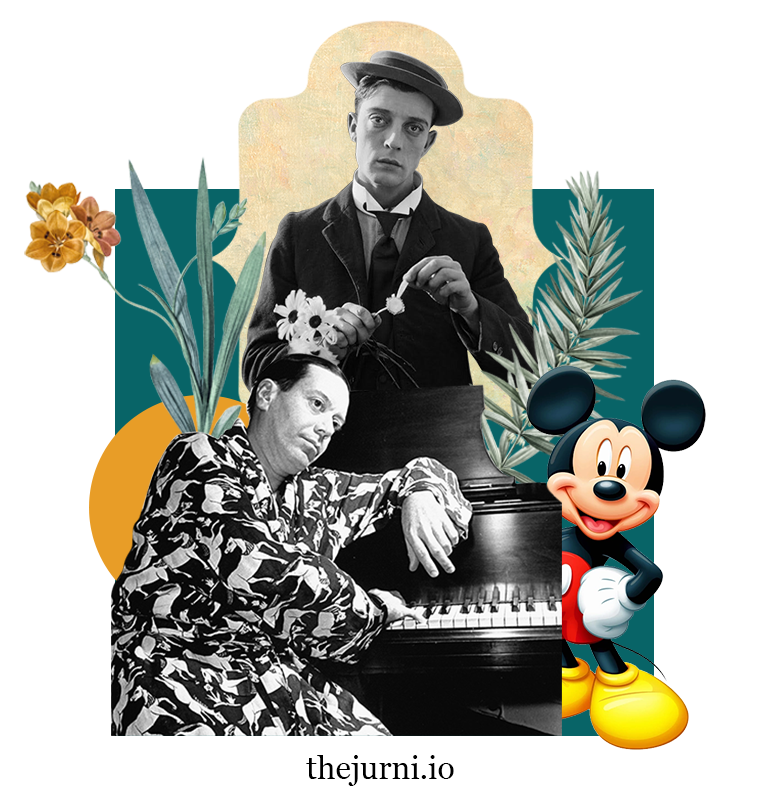
Taking the Mickey
The internet has been abuzz in the last couple of weeks owing to Steamboat Willie – the movie that introduced Mickey Mouse to the world – entering public domain. We’ve seen hilarious memes and even the announcement of a slasher film starring the character, much like what happened with Winnie the Pooh. While we have previously covered how beloved historical characters are being reintroduced for a newer age, the public domain is a completely different beast.
What does it mean?
On the 1st of January every year, a broad variety of works from all over the world enters the public domain, which means that their copyright has expired. The amount of time taken for works to be declared in the public domain varies from country to country.
However, there are certain caveats to it. While Steamboat Willie and its characters are a part of the public domain, the same can’t be said for Mickey Mouse. For starters, the character, in its current iteration, is owned by Disney, and any allusions to the same would invite legal trouble. But the character as represented in the film is up for public use, along with any dialogues or imagery.
Make new art
For an iconic work like Steamboat Willie to enter public domain, even with all the might of Disney trying to prevent it, is a win for the arts. Like Cole Porter’s classic Let’s Do It, which also entered public domain, it allows artists to stretch the meaning, as well as the intent behind the characters. Notwithstanding slasher films, it inaugurates new arenas for exploring ideas and creating new iconography which, in time, will enter public domain and influence more artists.
If there’s any doubt regarding that, just look at Shakespeare, the greatest public domain treasure in the history of literature. No, we aren’t talking of adaptations of Shakespeare in the contemporary zeitgeist. We’re talking about William Shakespeare himself, making copious use of public domain narratives to create his own masterpieces.
What masterpieces will our generation create?